Customer Journey Maps: How to Create Really Good Ones [Examples + Template]
Updated: April 17, 2024
Published: May 04, 2023
Did you know 70% of online shoppers abandoned their carts in 2022? Why would someone spend time adding products to their cart just to fall off the customer journey map at the last second?

The thing is — understanding your customer base can be very challenging. Even when you think you’ve got a good read on them, the journey from awareness to purchase for each customer will always be unpredictable, at least to some level.

Download Now
While it isn’t possible to predict every experience with 100% accuracy, customer journey mapping is a convenient tool for keeping track of critical milestones that every customer hits. In this post, I’ll explain everything you need to know about customer journey mapping — what it is, how to create one, and best practices.
Table of Contents

What is the customer journey?
What is a customer journey map, benefits of customer journey mapping, customer journey stages.
- What’s included in a customer journey map?
The Customer Journey Mapping Process
Steps for creating a customer journey map.
- Types of Customer Journey Maps
Customer Journey Mapping Best Practices
- Customer Journey Design
- Customer Journey Map Examples
Free Customer Journey Map Templates
.webp)
Free Customer Journey Template
Outline your company's customer journey and experience with these 7 free templates.
- Buyer's Journey Template
- Future State Template
- Day-in-the-Life Template
Download Free
All fields are required.
You're all set!
Click this link to access this resource at any time.
The customer journey is the series of interactions a customer has with a brand, product, or business as they become aware of a pain point and make a purchase decision. While the buyer’s journey refers to the general process of arriving at a purchase, the customer journey refers to a buyer's purchasing experience with a specific company or service.
Customer Journey vs. Buyer Journey
Many businesses that I’ve worked with were confused about the differences between the customer’s journey and the buyer’s journey. The buyer’s journey is the entire buying experience from pre-purchase to post-purchase. It covers the path from customer awareness to becoming a product or service user.
In other words, buyers don’t wake up and decide to buy on a whim. They go through a process of considering, evaluating, and purchasing a new product or service.
The customer journey refers to your brand’s place within the buyer’s journey. These are the customer touchpoints where you will meet your customers as they go through the stages of the buyer’s journey. When you create a customer journey map, you’re taking control of every touchpoint at every stage of the journey instead of leaving it up to chance.
For example, at HubSpot, our customer’s journey is divided into three stages — pre-purchase/sales, onboarding/migration, and normal use/renewal.

1. Use customer journey map templates.
Why make a customer journey map from scratch when you can use a template? Save yourself some time by downloading HubSpot’s free customer journey map templates .
This has templates that map out a buyer’s journey, a day in your customer’s life, lead nurturing, and more.
These templates can help sales, marketing, and customer support teams learn more about your company’s buyer persona. This will improve your product and customer experience.
2. Set clear objectives for the map.
Before you dive into your customer journey map, you need to ask yourself why you’re creating one in the first place.
What goals are you directing this map towards? Who is it for? What experience is it based upon?
If you don’t have one, I recommend creating a buyer persona . This persona is a fictitious customer with all the demographics and psychographics of your average customer. This persona reminds you to direct every aspect of your customer journey map toward the right audience.
3. Profile your personas and define their goals.
Next, you should conduct research. This is where it helps to have customer journey analytics ready.
Don’t have them? No worries. You can check out HubSpot’s Customer Journey Analytics tool to get started.
Questionnaires and user testing are great ways to obtain valuable customer feedback. The important thing is to only contact actual customers or prospects.
You want feedback from people interested in purchasing your products and services who have either interacted with your company or plan to do so.
Some examples of good questions to ask are:
- How did you hear about our company?
- What first attracted you to our website?
- What are the goals you want to achieve with our company? In other words, what problems are you trying to solve?
- How long have you/do you typically spend on our website?
- Have you ever made a purchase with us? If so, what was your deciding factor?
- Have you ever interacted with our website to make a purchase but decided not to? If so, what led you to this decision?
- On a scale of 1 to 10, how easily can you navigate our website?
- Did you ever require customer support? If so, how helpful was it, on a scale of 1 to 10?
- Can we further support you to make your process easier?
You can use this buyer persona tool to fill in the details you procure from customer feedback.
4. Highlight your target customer personas.
Once you’ve learned about the customer personas that interact with your business, I recommend narrowing your focus to one or two.
Remember, a customer journey map tracks the experience of a customer taking a particular path with your company. If you group too many personas into one journey, your map won’t accurately reflect that experience.
When creating your first map, it’s best to pick your most common customer persona and consider the route they would typically take when engaging with your business for the first time.
You can use a marketing dashboard to compare each and determine the best fit for your journey map. Don’t worry about the ones you leave out, as you can always go back and create a new map specific to those customer types.
5. List out all touchpoints.
Begin by listing the touchpoints on your website.
What is a touchpoint in a customer journey map?
A touchpoint in a customer journey map is an instance where your customer can form an opinion of your business. You can find touchpoints in places where your business comes in direct contact with a potential or existing customer.
For example, if I were to view a display ad, interact with an employee, reach a 404 error, or leave a Google review, all of those interactions would be considered a customer touchpoint.
Your brand exists beyond your website and marketing materials, so you must consider the different types of touchpoints in your customer journey map. These touchpoints can help uncover opportunities for improvement in the buying journey.
Based on your research, you should have a list of all the touchpoints your customers are currently using and the ones you believe they should be using if there’s no overlap.
This is essential in creating a customer journey map because it provides insight into your customers’ actions.
For instance, if they use fewer touchpoints than expected, does this mean they’re quickly getting turned away and leaving your site early? If they are using more than expected, does this mean your website is complicated and requires several steps to reach an end goal?
Whatever the case, understanding touchpoints help you understand the ease or difficulties of the customer journey.
Aside from your website, you must also look at how your customers might find you online. These channels might include:
- Social channels.
- Email marketing.
- Third-party review sites or mentions.
Run a quick Google search of your brand to see all the pages that mention you. Verify these by checking your Google Analytics to see where your traffic is coming from. Whittle your list down to those touchpoints that are the most common and will be most likely to see an action associated with it.
At HubSpot, we hosted workshops where employees from all over the company highlighted instances where our product, service, or brand impacted a customer. Those moments were recorded and logged as touchpoints. This showed us multiple areas of our customer journey where our communication was inconsistent.
The proof is in the pudding — you can see us literally mapping these touch points out with sticky notes in the image below.

Don't forget to share this post!
Related articles.
![customer journey in marketing strategy How AI Image Misuse Made a World of Miscommunication [Willy's Chocolate Experience]](https://blog.hubspot.com/hubfs/ai%20image%20misuse%20the%20willy%20wonka%20experience%20%281%29.png)
How AI Image Misuse Made a World of Miscommunication [Willy's Chocolate Experience]

7 Ways to Delight Your Customers This Holiday Season

14 Customer Experience Fails that Companies Can Learn From
![customer journey in marketing strategy How Customer Experience Has Evolved Over the Last Decade [+ 2024 Trends]](https://blog.hubspot.com/hubfs/future-of-customer-experience.png)
How Customer Experience Has Evolved Over the Last Decade [+ 2024 Trends]
![customer journey in marketing strategy Memorable Examples of AR in Customer Experience [+Tips for Implementing the Technology]](https://blog.hubspot.com/hubfs/augmented%20reality%20customer%20experience.png)
Memorable Examples of AR in Customer Experience [+Tips for Implementing the Technology]

Digital Customer Experience: The Ultimate Guide for 2024
![customer journey in marketing strategy How to Implement a Hybrid Customer Service Strategy That Works [Expert Tips]](https://blog.hubspot.com/hubfs/hybrid%20customer%20service_featured.png)
How to Implement a Hybrid Customer Service Strategy That Works [Expert Tips]

User Flows: 8 Tips For Creating A Super Smooth User Experience

11 Best Practices for B2B Customer Experience
![customer journey in marketing strategy Customer Experience vs. User Experience: What’s the Difference? [+ Examples]](https://blog.hubspot.com/hubfs/customer-experience-vs-user-experience_2.webp)
Customer Experience vs. User Experience: What’s the Difference? [+ Examples]
Outline your company's customer journey and experience with these 7 free customer journey map templates.
Service Hub provides everything you need to delight and retain customers while supporting the success of your whole front office
The customer journey — definition, stages, and benefits

Businesses need to understand their customers to increase engagement, sales, and retention. But building an understanding with your customers isn’t easy.
The customer journey is the road a person takes to convert, but this journey isn’t always obvious to business owners. Understanding every step of that journey is key to business success. After reading this article, you’ll understand the customer journey better and how to use it to improve the customer experience while achieving your business goals.
This post will discuss:
- What a customer journey is
Customer journey stages
Benefits of knowing the customer journey.
- What a customer journey map is
How to create a customer journey map
Use the customer journey map to optimize the customer experience, what is a customer journey.
The customer journey is a series of steps — starting with brand awareness before a person is even a customer — that leads to a purchase and eventual customer loyalty. Businesses use the customer journey to better understand their customers’ experience, with the goal of optimizing that experience at every touchpoint.
Giving customers a positive customer experience is important for getting customers to trust a business, so optimizing the customer journey has never mattered more. By mastering the customer journey, you can design customer experiences that will lead to better customer relationships, loyalty, and long-term retention .
Customer journey vs. the buyer journey
The stages of the customer’s journey are different from the stages of the buyer’s journey. The buyer’s journey follows the customer experience from initial awareness of a brand to buying a product. The customer journey extends beyond the purchase and follows how customers interact with your product and how they share it with others.
Every lead goes through several stages to become a loyal customer. The better this experience is for customers at each stage, the more likely your leads are to stick around.
Ensure that your marketing, sales, and customer service teams optimize for these five stages of the customer journey:

1. Awareness
In the awareness phase, your target audience is just becoming aware of your brand and products. They need information or a solution to a problem, so they search for that information via social media and search engines.
For example, if someone searches on Google for pens for left-handed people, their customer journey begins when they’re first aware of your brand’s left-handed pen.
At this stage, potential customers learn about your business via web content, social media, influencers, and even their friends and family. However, this isn’t the time for hard sells. Customers are simply gathering information at this stage, so you should focus first on answering their questions and building trust.
2. Consideration
In the consideration phase, customers begin to consider your brand as a solution to their problem. They’re comparing your products to other businesses and alternative solutions, so you need to give these shoppers a reason to stick around.
Consideration-stage customers want to see product features that lean heavily toward solving problems and content that doesn’t necessarily push a sale. At this stage, businesses need to position their solution as a better alternative. For example, a nutrition coaching app might create content explaining the differences between using the app and working with an in-person nutritionist — while subtly promoting the benefits of choosing the app.
3. Purchase
The purchase stage is also called the decision stage because at this stage customers are ready to make a buying decision. Keep in mind that their decision might be to go with a competing solution, so purchase-stage buyers won’t always convert to your brand.
As a business, it’s your job to persuade shoppers at this stage to buy from you. Provide information on pricing, share comparison guides to showcase why you’re the superior option, and set up abandoned cart email sequences.
4. Retention
The customer journey doesn’t end once a shopper makes their first purchase. Once you’ve converted a customer, you need to focus on keeping them around and driving repeat business. Sourcing new customers is often more expensive than retaining existing clients, so this strategy can help you cut down on marketing costs and increase profits.
The key to the retention stage is to maintain positive, engaging relationships between your brand and its customers. Try strategies like regular email outreach, coupons and sales, or exclusive communities to encourage customer loyalty.
5. Advocacy
In the advocacy stage, customers are so delighted with your products and services that they spread the word to their friends and family. This goes a step beyond retention because the customer is actively encouraging other people to make purchases.
Customer journeys don’t have a distinct end because brands should always aim to please even their most loyal customers. In the advocacy stage of the customer journey, you can offer referral bonuses, loyalty programs, and special deals for your most active customers to encourage further advocacy.
Being aware of the customer journey helps shed more light on your target audience’s expectations and needs. In fact, 80% of companies compete primarily on customer experience. This means optimizing the customer journey will not only encourage your current customers to remain loyal but will also make you more competitive in acquiring new business.
More specifically, acknowledging the customer journey can help you:

- Understand customer behavior. Classifying every action your customers take will help you figure out why they do what they do. When you understand a shopper’s “why,” you’re better positioned to support their needs.
- Identify touchpoints to reach the customer. Many businesses invest in multichannel marketing, but not all of these touchpoints are valuable. By focusing on the customer journey, you’ll learn which of these channels are the most effective for generating sales. This helps businesses save time and money by focusing on only the most effective channels.
- Analyze the stumbling blocks in products or services. If leads frequently bail before buying, that could be a sign that something is wrong with your product or buying experience. Being conscious of the customer journey can help you fix issues with your products or services before they become a more expensive problem.
- Support your marketing efforts. Marketing requires a deep familiarity with your target audience. Documenting the customer journey makes it easier for your marketing team to meet shoppers’ expectations and solve their pain points.
- Increase customer engagement. Seeing the customer journey helps your business target the most relevant audience for your product or service. Plus, it improves the customer experience and increases engagement. In fact, 29.6% of customers will refuse to embrace branded digital channels if they have a poor experience, so increasing positive customer touchpoints has never been more important.
- Achieve more conversions. Mapping your customers’ journey can help you increase conversions by tailoring and personalizing your approach and messages to give your audience exactly what they want.
- Generate more ROI. You need to see a tangible return on your marketing efforts. Fortunately, investing in the customer journey improves ROI across the board. For example, brands with a good customer experience can increase revenue by 2–7% .
- Improve customer satisfaction and loyalty. Today, 94% of customers say a positive experience motivates them to make future purchases. Optimizing the customer journey helps you meet shopper expectations, which increases satisfaction and loyalty.

What is a customer journey map?
A customer journey map is a visual representation of every step your customer takes from being a lead to eventually becoming an advocate for your brand. The goal of customer journey mapping is to simplify the complex process of how customers interact with your brand at every stage of their journey.
Businesses shouldn’t use a rigid, one-size-fits-all customer journey map. Instead, they should plan flexible, individual types of customer journeys — whether they’re based on a certain demographic or on individual customer personas. To design the most effective customer journey map, your brand needs to understand a customer’s:
- Actions. Learn which actions your customer takes at every stage. Look for common patterns. For example, you might see that consideration-stage shoppers commonly look for reviews.
- Motivations. Customer intent matters. A person’s motivations change at every stage of the customer journey, and your map needs to account for that. Include visual representation of the shopper’s motivations at each stage. At the awareness stage, their motivation might be to gather information to solve their problem. At the purchase stage, it might be to get the lowest price possible.
- Questions. Brands can take customers’ common questions at every stage of the customer journey and reverse-engineer them into useful content. For example, shoppers at the consideration stage might ask, “What’s the difference between a DIY car wash and hiring a professional detailer?” You can offer content that answers their question while subtly promoting your car detailing business.
- Pain points. Everybody has a problem that they’re trying to solve, whether by just gathering intel or by purchasing products. Recognizing your leads’ pain points will help you craft proactive, helpful marketing campaigns that solve their biggest problems.
Customer journey touchpoints
Every stage of the customer journey should also include touchpoints. Customer touchpoints are the series of interactions with your brand — such as an ad on Facebook, an email, or a website chatbot — that occur at the various stages of the customer journey across multiple channels. A customer’s actions, motivations, questions, and pain points will differ at each stage and at each touchpoint.
For example, a customer searching for a fishing rod and reading posts about how they’re made will have very different motivations and questions from when later comparing specs and trying to stay within budget. Likewise, that same customer will have different pain points when calling customer service after buying a particular rod.

It might sound like more work, but mapping the entire customer journey helps businesses create a better customer experience throughout the entire lifecycle of a customer’s interaction with your brand.
Before jumping into the steps of how to create the customer journey map, first be clear that your customer journey map needs to illustrate the following:
- Customer journey stages. Ensure that your customer journey map includes every stage of the customer journey. Don’t just focus on the stages approaching the purchase — focus on the retention and advocacy stages as well.
- Touchpoints. Log the most common touchpoints customers have at every stage. For example, awareness-stage touchpoints might include your blog, social media, or search engines. Consideration-stage touchpoints could include reviews or demo videos on YouTube. You don’t need to list all potential touchpoints. Only list the most common or relevant touchpoints at each stage.
- The full customer experience. Customers’ actions, motivations, questions, and pain points will change at every stage — and every touchpoint — during the customer journey. Ensure your customer journey map touches on the full experience for each touchpoint.
- Your brand’s solutions. Finally, the customer journey map needs to include a branded solution for each stage and touchpoint. This doesn’t necessarily mean paid products. For example, awareness-stage buyers aren’t ready to make a purchase, so your brand’s solution at this stage might be a piece of gated content. With these necessary elements in mind, creating an effective customer journey map is a simple three-step process.
1. Create buyer personas
A buyer persona is a fictitious representation of your target audience. It’s a helpful internal tool that businesses use to better understand their audience’s background, assumptions, pain points, and needs. Each persona differs in terms of actions, motivations, questions, and pain points, which is why businesses need to create buyer personas before they map the customer journey.
To create a buyer persona, you will need to:
- Gather and analyze customer data. Collect information on your customers through analytics, surveys, and market research.
- Segment customers into specific buying groups. Categorize customers into buying groups based on shared characteristics — such as demographics or location. This will give you multiple customer segments to choose from.
- Build the personas. Select the segment you want to target and build a persona for that segment. At a minimum, the buyer persona needs to define the customers’ basic traits, such as their personal background, as well as their motivations and pain points.

For example, ClearVoice created a buyer persona called “John The Marketing Manager.” The in-depth persona details the target customer’s pain points, pet peeves, and potential reactions to help ClearVoice marketers create more customer-focused experiences.
2. List the touchpoints at each customer journey stage
Now that you’ve created your buyer personas, you need to sketch out each of the five stages of the customer journey and then list all of the potential touchpoints each buyer persona has with your brand at every one of these five stages. This includes listing the most common marketing channels where customers can interact with you. Remember, touchpoints differ by stage, so it’s critical to list which touchpoints happen at every stage so you can optimize your approach for every buyer persona.
Every customer’s experience is different, but these touchpoints most commonly line up with each stage of the customer journey:
- Awareness. Advertising, social media, company blog, referrals from friends and family, how-to videos, streaming ads, and brand activation events.
- Consideration. Email, sales calls, SMS, landing pages, and reviews.
- Purchase. Live chat, chatbots, cart abandonment emails, retargeting ads, and product print inserts.
- Retention. Thank you emails, product walkthroughs, sales follow-ups, and online communities.
- Advocacy. Surveys, loyalty programs, and in-person events.
Leave no stone unturned. Logging the most relevant touchpoints at each stage eliminates blind spots and ensures your brand is there for its customers, wherever they choose to connect with you.
3. Map the customer experience at each touchpoint
Now that you’ve defined each touchpoint at every stage of the customer journey, it’s time to detail the exact experience you need to create for each touchpoint. Every touchpoint needs to consider the customer’s:
- Actions. Describe how the customer got to this touchpoint and what they’re going to do now that they’re here.
- Motivations. Specify how the customer feels at this moment. Are they frustrated, confused, curious, or excited? Explain why they feel this way.
- Questions. Every customer has questions. Anticipate the questions someone at this stage and touchpoint would have — and how your brand can answer those questions.
- Pain points. Define the problem the customer has — and how you can solve that problem at this stage. For example, imagine you sell women’s dress shoes. You’re focusing on the buyer persona of a 36-year-old Canadian woman who works in human resources. Her touchpoints might include clicking on your Facebook ad, exploring your online shop, but then abandoning her cart. After receiving a coupon from you, she finally buys. Later, she decides to exchange the shoes for a different color. After the exchange, she leaves a review. Note how she acts at each of these touchpoints and detail her likely pain points, motivations, and questions, for each scenario. Note on the map where you intend to respond to the customer’s motivations and pain points with your brand’s solutions. If you can create custom-tailored solutions for every stage of the funnel, that’s even better.
A positive customer experience is the direct result of offering customers personalized, relevant, or meaningful content and other brand interactions. By mapping your customers’ motivations and pain points with your brand’s solutions, you’ll find opportunities to improve the customer experience. When you truly address their deepest needs, you’ll increase engagement and generate more positive reviews.
Follow these strategies to improve the customer experience with your customer journey map:
- Prioritize objectives. Identify the stages of the customer journey where your brand has the strongest presence and take advantage of those points. For example, if leads at the consideration stage frequently subscribe to your YouTube channel, that gives you more opportunities to connect with loyal followers.
- Use an omnichannel approach to engage customers. Omnichannel marketing allows businesses to gather information and create a more holistic view of the customer journey. This allows you to personalize the customer experience on another level entirely. Use an omnichannel analytics solution that allows you to capture and analyze the true cross-channel experience.
- Personalize interactions at every stage. The goal of mapping the customer journey is to create more personalized, helpful experiences for your audience at every stage and touchpoint. For example, with the right data you can personalize the retail shopping experience and customer’s website experience.
- Cultivate a mutually trusting relationship. When consumer trust is low, brands have to work even harder to earn their customers’ trust. Back up your marketing promises with good customer service, personalized incentives, and loyalty programs.
Getting started with customer journeys
Customer journeys are complicated in an omnichannel environment, but mapping these journeys can help businesses better understand their customers. Customer journey maps help you deliver the exact experience your customers expect from your business while increasing engagement and sales.
When you’re ready to get started, trace the interactions your customers have at each stage of their journey with your brand. Adobe Customer Journey Analytics — a service built on Adobe Experience Platform — can break down, filter, and query years’ worth of data and combine it from every channel into a single interface. Real-time, omnichannel analysis and visualization let companies make better decisions with a holistic view of their business and the context behind every customer action.
Learn more about Customer Journey Analytics by watching the overview video .
https://business.adobe.com/blog/perspectives/introducing-adobes-customer-journey-maturity-model
https://business.adobe.com/blog/how-to/create-customer-journey-maps
https://business.adobe.com/blog/basics/what-is-customer-journey-map

- SUGGESTED TOPICS
- The Magazine
- Newsletters
- Managing Yourself
- Managing Teams
- Work-life Balance
- The Big Idea
- Data & Visuals
- Reading Lists
- Case Selections
- HBR Learning
- Topic Feeds
- Account Settings
- Email Preferences
4 Strategies to Simplify the Customer Journey
- Richard L. Gruner

Making things easy is harder than you think.
While it may be tempting to offer your customers a never-ending array of products, customizations, and information, research shows that simplicity is almost always the best option for boosting both company value and customer loyalty. But what does it take to build a customer experience that’s smooth and simple from end to end? In this piece, the author offers four strategies to ensure simplicity is baked into every aspect of the customer’s journey: identify and communicate what simplicity means to your organization, look beyond product development to find ways to simplify throughout the customer journey, embrace internal complexity to achieve external simplicity, and remember that while simplicity is often necessary, it isn’t always the answer.
The modern consumer faces hundreds — if not thousands — of choices every day. What to read. Where to shop. What to buy. And each of those decisions takes a mental toll.
- RG Richard L. Gruner holds a PhD in marketing from the University of Melbourne and is Senior Lecturer (A/Prof) at the University of Western Australia. His work has been published in many top ranked peer-reviewed international journals, and he has a professional background in the media industry. One of his main research interests lies at the intersection of consumer psychology and digital tools. Find out more about Richard’s experience .
Partner Center

Salesforce is closed for new business in your area.
- Deutschland
- Asia, Australia & New Zealand
- Europe, Middle East & Africa
- United States & Canada
- Latinoamérica
Customer journey mapping: The path to loyalty
A version of this tutorial originally appeared in the free Primer app .
In an ideal world, the journey people take to become loyal customers would be a straight shot down a highway: See your product. Buy your product. Use your product. Repeat.
In reality, this journey is often more like a sightseeing tour with stops, exploration, and discussion along the way—all moments when you need to convince people to pick your brand and stick with it instead of switching to a competitor.
Staying on top of all of these moments might seem overwhelming, but mapping your customer’s journey can help. It can give you and your team a greater understanding of how your customers are currently interacting and engaging with your brand, and also help illustrate how your products and services fit into their lives, schedules, goals, and aspirations.
Let’s take a look at five steps your team can take to start journey mapping.
1. Find the sweet spot where your customers’ goals and your own align
Before you start journey mapping, nail down your business goals. Any marketing and communication you deliver during the customer journey should be focused on helping your brand reach those goals.
However, it’s important to acknowledge that your customers’ goals might be different from yours. For example, let’s say your goal is to sell more sunglasses with new, improved lenses that have a better profit margin. Meanwhile, your customers’ top concern might be getting sunglasses that match their personal style. Lens protection could be their second or even third priority.
Consider how your marketing and communication strategies can help your customers reach their goals while also getting you closer to yours.
2. Identify all of the communication touchpoints in your customer’s journey
When do you traditionally communicate or engage with customers? Make a list of these moments and group them based on when they happen during the journey: pre-purchase, purchase, and post-purchase.
Now find communication touchpoints you may have missed. Track what actions and interactions between your brand and your customers happen just before and after each of the pre-purchase, purchase, and post-purchase stages.
For example, you might decide that a major moment in your purchase stage is when your customers are guided through your website to buy an item in their shopping cart. But you might notice other communication touchpoints right before that purchase moment, like your website confirming to customers that an item has been added to their shopping cart, then suggesting related products.
Looking for all these touchpoints can quickly bog your team down in a lot of details and micro-interactions. To avoid that, prioritize the moments that get you closer to achieving your business goals.
3. Recognize pain points and moments of delight
How might your customers feel at the pre-purchase, purchase, and post-purchase stages as they attempt to achieve their goals? For example, could your customers be happy that your website makes browsing easy, but frustrated at how confusing it is to purchase a product?
Find the moments where your customers might have negative experiences. Who on your team is involved in those touchpoints? Your web designers? Your marketing team? Your copywriters? Are there other team members who could collaborate and improve the situation?
Say a customer likes how your online ad describes your product. But when they go to your store, salespeople present the product differently. That’s an opportunity for your copywriters and salespeople to better align their language and sales pitches.
4. Experience the customer journey yourself
Imagining how your customers might feel during their journey is valuable, but actually experiencing it for yourself can uncover much-needed insights.
If your business is run online, open a browser and experience what it’s like to be your customer. Similarly, if you have a brick-and-mortar store, go into a location that sells your product. Afterwards, ask yourself about the main communication touchpoints you encountered. Did they work well? Did they help you complete your journey? What was missing?
And don’t forget about the competition. Become one of their customers and experience the journey they’ve created. Then ask yourself all of the same questions.
5. Visualize your customer journey map
Go beyond just writing down your customer journey and communication touchpoints, and actually create a visual map of them. This doesn’t need to be a polished, heavily-designed visualization. Simply write each of your touchpoints down on individual sticky notes or papers, then pin them in order to a wall.
By doing this exercise, you’re helping your team take a bird’s eye view of the entire customer journey. You can organize your thoughts and collaboratively brainstorm new ideas for changing or adding to your communication at these touchpoints.
Make sure to create hypotheses around why new communication touchpoints will improve the customer journey, then implement and test them. If your hypotheses are wrong, go back to your journey map, reassess, tweak, and improve.
Yes, the journey mapping process can be fairly intensive, but it can have a big impact on your business. That’s why it shouldn’t be just a one-time event. Customer tastes can shift, new technology can become available, and your brand itself might evolve. So it’s important to do journey mapping at least once a year and evaluate what communication touchpoints are still working and what needs to be revisited.
Others are viewing
Marketers who view this are also viewing
Make it personal: Using marketing personas and empathy in your marketing
How to win travelers in the age of assistance, how hyundai changed course to improve the customer journey, how people decide what to buy lies in the ‘messy middle’ of the purchase journey, the ai handbook: resources and tools for marketers, better together: why integrating data strategy, teams, and technology leads to marketing success, stuart hogg.
Stuart Hogg is a marketing consultant who has worked with a number of Fortune 500 brands. He created “Journey Mapping: Connect the Customer Dots” for the Primer app.
Others are viewing Looking for something else?
Complete login.
To explore this content and receive communications from Google, please sign in with an existing Google account.
You're visiting our United States & Canada website.
Based on your location, we recommend you check out this version of the page instead:
- Perspectives
- Best Practices
- Inside Amplitude
- Customer Stories
- Contributors
How to Implement a Customer Journey Strategy that Works
A successful customer journey strategy starts with anticipating the potential paths a user may take when interacting with your product. Having a robust understanding of what the user experiences will help convert interest into loyalty.

A customer journey represents the entirety of a customer’s experience with a company’s products and services, from their first interaction (discovering a company) to a milestone (the purchase and use of a product). It’s about more than a high conversion rate or good customer service. Instead, it’s about all of the interactions that a current or prospective customer might have with your company and product:
- How do potential customers discover your company?
- Once interested, is there an opportunity for prospects to participate in a free trial of your product?
- Once onboarded, do you offer continued support for current customers?
All of these interactions whether before, during or after are considered touchpoints in the customer journey.
When creating a customer journey strategy, you should have a robust understanding of what users experience as they discover your company and begin interacting with it. This can include their emotions, goals, challenges, as well as their background, along with any other factors that may impact their decision making. According to research by McKinsey , a customer-centric strategy can generate a 20-30% increase in customer satisfaction.
As for designing the customer journey, you should aim to make it as easy as possible for customers to understand your products and services. Even if your product is complex, teams should strive to make the journey simple. This means that marketing campaigns should also be targeted and segmented in order to meet your audience’s distinct needs. Before anything, you’ll want to invest time into developing a clear understanding of your customer, as doing so will help guide the rest of the customer journey.
Let’s take a look at what a good customer experience looks like, and more importantly, how analytics, surveys and other research can help create the customer journey strategy that underpins it.
- To create happy customers and advocates, you must understand current and prospective customers’ goals, emotions, needs and how they interact with your company and product at every step of the customer journey.
- Analytics can help a company to gain a deeper understanding of customer behaviors.
- Successful companies use various tools and machine learning to create personalized experiences for their customers.
- After a customer journey strategy is created, a company should continue to evolve and optimize it as new information about customer behavior becomes available.
Companies with Exceptional Customer Experience
Before we break down the step-by-step process of creating a strong customer journey marketing strategy, let’s look at three exemplary customer experience strategies by large, successful companies.
In addition to having a well-designed, easy-to-use product, PayPal understands that an effective customer journey strategy is implemented by listening to customer feedback, and understanding what people are experiencing when they first interact with their product. Of course, statistics alone aren’t enough to guarantee success: a company must talk to their customers and actively reduce any causes of frustration. PayPal creates an outstanding customer experience by synthesizing all of this information.
Doordash’s focus is on optimizing the food delivery customer experience , which they achieve by offering a highly personalized product. They use quantitative, qualitative and behavioral data to understand the customer journey and continually improve on it. Analyzing this data helps them to understand their customers, and it allows the company to enhance their overall customer experience through personalized interactions. Personalization makes a product easier to use, more rewarding, and adds to the overall positive experience a customer has with a company.
There’s a reason the retail giant has become ubiquitous: the start-to-finish customer experience is both easy and convenient. Amazon’s product reviews, flexible shipping, easy returns and recommended products contribute to a shopping experience that helps to set them apart from their competitors.
For Amazon, success means they don’t rely on simple web analytics alone to determine customer behavior. They also employ advanced analytics tools and machine learning to predict what consumers want, enabling them to recommend items related to their unique customer profiles. Personalization is foundational in this strategy, as each user of their product receives an experience that is fully customized based on their browsing and shopping history.
How to implement a customer journey strategy
Note how the above companies all use analytics to understand their customers. They focus on their customers’ goals, emotions, and needs, in order to create an experience that leaves customers happy and satisfied. Companies that understand this and are willing to learn from what doesn’t work are going to be better at creating a customer journey that mitigates frustrations.
Let’s look at the six steps to implementing a customer journey strategy that works.
1. Understand what success looks like for your customer
Knowing what success looks like for your customers is a crucial first step in the process to building out your customer journey strategy. Customer success is defined as the process in which companies help customers achieve their goals through the use of their products or services.
Working with customers to understand their workstreams, challenges and goals will help in defining what success means to them, allowing you to help map out their path and ultimately determine what their customer journey strategy looks like.
2. Know the stages of the customer journey
Customers can go through multiple stages when it comes to the product journey lifecycle. These stages include:
- Awareness: This is the stage where a potential customer discovers your product for the first time. Your homepage, a search engine, an advertisement or a referral are all possible initial discovery tools.
- Consideration: Once a potential customer discovers your product, they’ll likely evaluate your offering against competitors to determine if there is a need. This could also be the stage at which a potential customer signs up for a free trial.
- Awareness/Purchase: When a need has been identified, the potential customer turns into an active customer by purchasing your product.
- Adoption: Once onboarded to your product, it’s important for a customer to begin using your product enough that it becomes part of their regular routine. If not used, the product loses its value and there’s a low likelihood of retaining that customer.
- Retention: To prevent churn, customers need to know that the goals they set are being achieved in order for them to renew the subscription.
- Expansion: While every customer’s needs are different, goals and challenges tend to change. This makes continuously checking in with customers key, as there may be an opportunity to include products that address their changing requirements.
- Advocacy: Happy customers can be your biggest brand advocates, so it’s important that you spend the time nurturing them throughout their customer journey.
3. Identify the various touchpoints of the customer journey
What are all the possible ways that people can interact with your company? To find out, leverage analytics to create a list that includes search engines, social media, advertisements, email content, sales, product demos and referrals. Also consider what’s behind all of these touchpoints: what motivates people to find your company? Determine what problem your product or service solves, and what the customer feeling was when they decided to look you up. Understanding the customer’s goals and motivations is important to building an ideal customer journey.
Touchpoints can be far-reaching, and customer service is only one part of the full customer journey. A company’s successful journey can also be generated by an immersive in-product experience or an engaging presence on social media.
4. Determine what actions customers will take
Are customers supposed to click a button to download a trial, contact you via phone or email, or take some other step? There should be a clear, simple path with a minimal number of steps. Offering too many options complicates the process and risks turning users away, while not enough options will create a barrier to entry.
On your website, in emails, social media, advertisements and other places, there should be clear steps for the user to take—a clear call-to-action that gives the customer the opportunity to take the next step. Remember that customer journeys are not linear . As there are a lot of actions a user can take, it’s important to take time to map out the full customer journey.
5. Increase retention by proactively reducing churn
Look at statistics, survey results and any other available information to understand why customers are not behaving as anticipated in the journey you’ve designed. For example, a lot of online retail companies have a high rate of customers abandoning their shopping carts on the last step before finishing the order. It would be helpful for them to understand why—perhaps shipping costs are a deterrent, or there’s a last-minute requirement to create a user profile.
Whatever it may be, you should aim to reduce all friction and pain points. The less frustrated your customers are, the greater the chance they turn into happy, loyal customers. This is where analytics and machine learning can intersect and help create personalized experiences for customers, reducing the obstacles between them and their goals. Additionally, checking in with customers along the way not just before and during the sale will help to proactively reduce churn and increase customer retention.
6. Continuously evolve your customer journey strategy
The online marketplace does not reward stagnation: review, update and refine your strategy. Your customer journey strategy should grow and evolve. New information and data obtained from analytics might result in a need for a new product launch or customer support may identify pain points current customers are experiencing with a certain feature. Continue to gather information about your customers needs and challenges, perform A/B tests, and update your customer journey strategy as needed.
A customer journey is not going to be linear and uniform, and neither should your customer journey strategy. But by being nimble, anticipating potential paths a user may take when interacting with your product and using analytics to dig into each stage of the journey, you’ll be well positioned to provide an experience that can convert interest into loyalty.
So if you’re looking for an answer to the user journey, no matter how simple or complex, Amplitude’s suite of resources can help your business increase its decision quality and velocity. You need a partner that can evolve and innovate with your teams, diving beneath superficial measurements and into the granular details that can separate you from your competitors in any industry or vertical.

About the Author
More best practices.

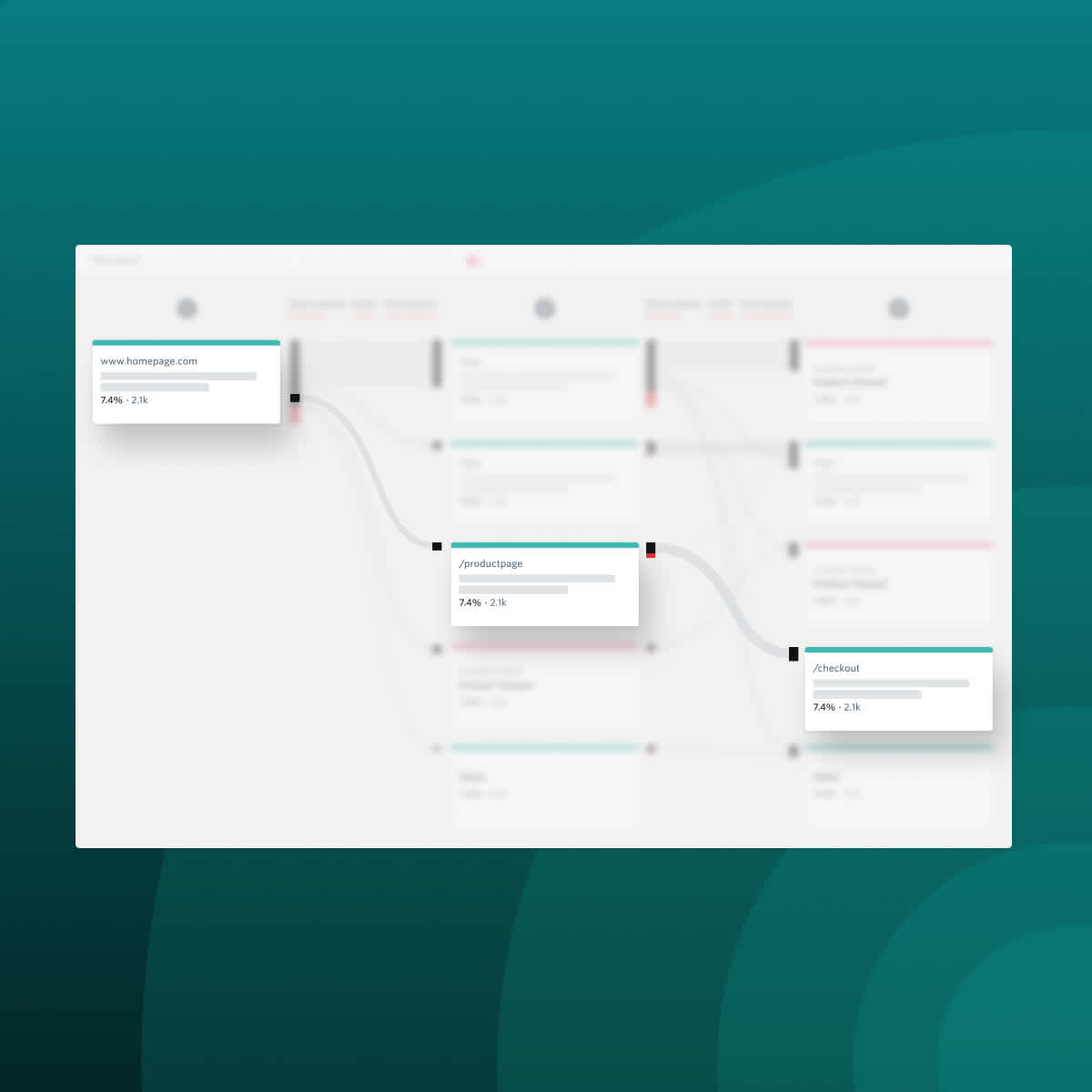
How to understand, use, and build customer journey maps
A customer journey map is key to building a solid marketing strategy. We cover everything you need to know about customer journey maps, their different types, examples, and the steps to making your own.
What is a customer journey map?
Why do you need a customer journey map, characteristics of customer journey maps.
- What are touchpoints?
- Different types of customer journey map
Journey map variations
- How to create a customer journey map
Customer journey map tools
- How to build an empathy-based, data-backed customer journey map
- How to use empathy to create stronger customer journey maps
- Customer journey tools: Top rated and best available
The customer journey is a long and often unpredictable road. Understanding it can be even more complicated.
That’s why customer journey maps were invented: to understand the roadmap of a customer, from the very first touchpoint throughout the lasting life of their relationship with your business.
Customer journey maps (or user journey maps) can be an invaluable resource for companies, from marketing to sales to UX, and are known to help businesses increase their ROI by 13–22% if done correctly.
Below we cover journey maps from top to bottom, their importance, characteristics, and review examples, along with what you need to make your own.
Key takeaways:
Customer journey mapping is a strategic (and successful) approach to truly understanding your customers.
There are real and valuable business reasons to journey map.
There are six basic types of customer journey maps.
Customer touchpoints are every instance of interaction or engagement that happens along the journey.
There are current- and future-state customer journey maps that can help predict future behavior .
A customer journey map (sometimes called a user journey map, UX map, or CJM) is a visualization of the steps and experiences a customer has with a brand, from first contact to ongoing engagement, revealing both seen and unseen interactions.
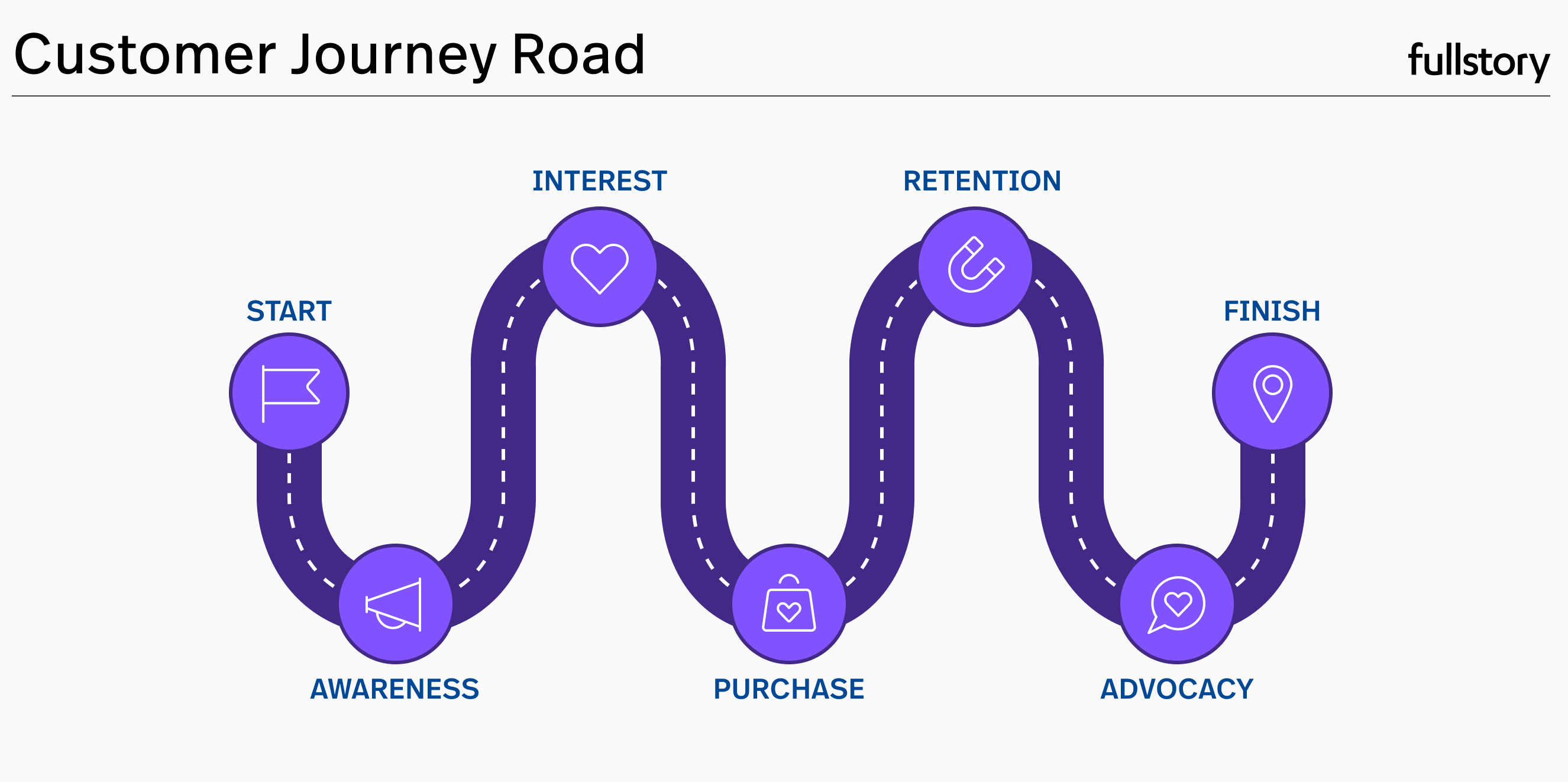
User journey mapping lets you create personalized experiences across all touchpoints —for every individual—across all channels.
Companies can use this shared understanding to identify opportunities for innovation and improvement.
These maps can be simple or complex, depending on what you're looking to gain from them.
For any company, a customer journey map helps to enhance the customer experience and increase customer loyalty.
A customer journey map can prove invaluable for optimizing across multiple departments—marketing, sales, product, and customer service—in many, many ways. Mapping your customer journey can help you:
Promote a customer-centric culture internally and externally
Identify your ideal buyer and connect with customer needs
Glean customer journey insights into your audience that can drive revenue
Improve sales funnels & conversion rates authentically
Amplify customer experience by understanding the customer’s perspective
Reduce customer support tickets by locating customer pain-points
Aid in marketing campaigns
Generate repeat business
Decrease customer churn and increase customer lifetime value
Together, these advantages translate into higher sales for your business.
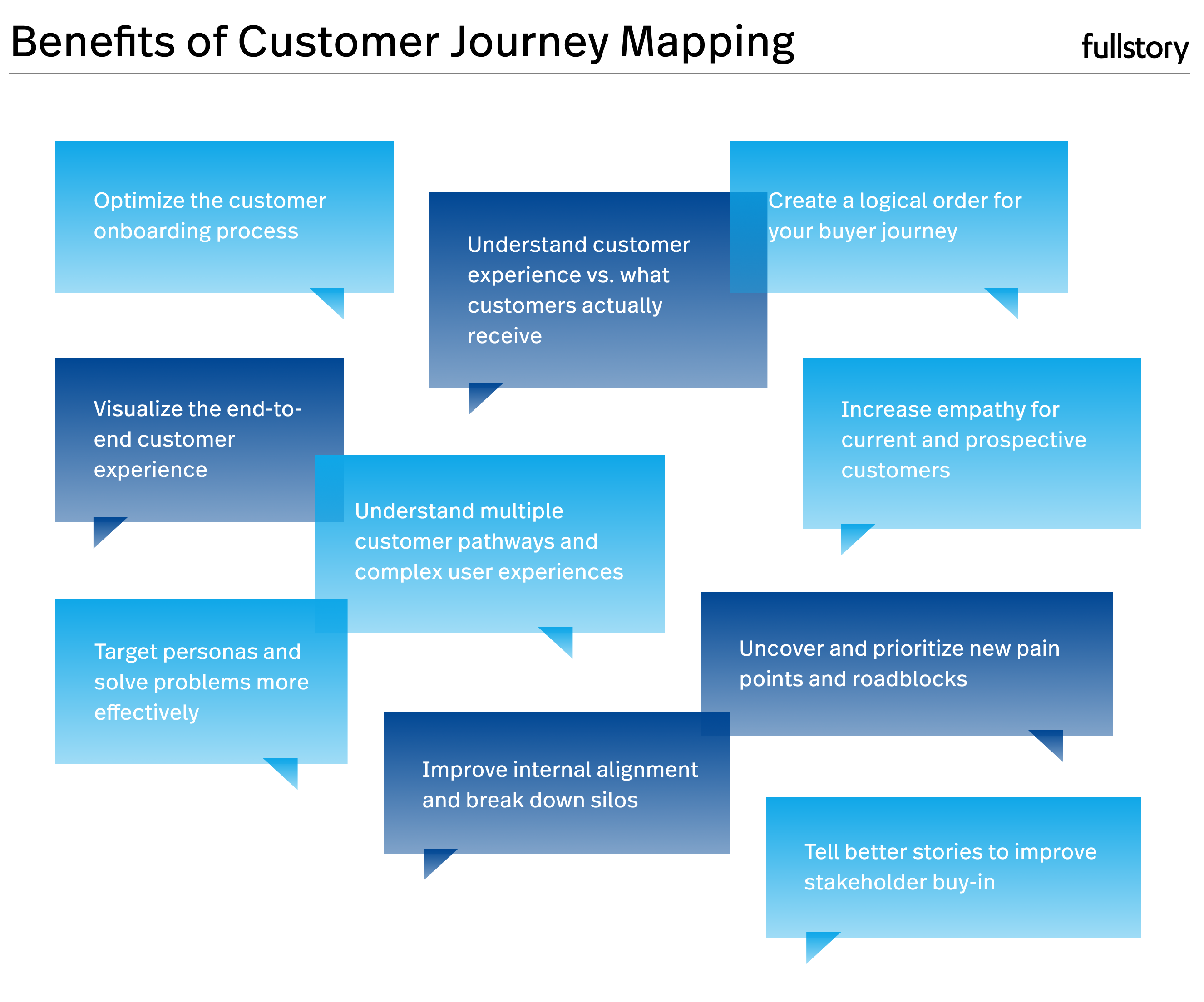
A typical customer journey map includes:
Actors—or potential profiles of customers—usually align with personas and their actions in the map are rooted in data . These actors will be the foundation of your map, and they will dictate the actions needed to create the desired outcome.
Customer personas and buyer personas: What’s the difference?
A buyer persona is a profile that showcases your ideal customer based on existing customer data and market research. Buyer personas help humanize the ideal customer you are trying to attract, which helps you understand them better and pick the right marketing strategy to convert them.

A buyer persona is your ideal customer—they’re in research mode. You can have more than one buyer persona for your company, and understanding this buyer is the key to creating a successful customer experience. This buyer will turn into your customer.
Here’s what makes up your buyer persona:
Demographics —including personal, professional, and specific (age, gender, location, education, income, marital status, skills, routines, etc.)
Goals —including personal and professional, priorities, and challenges
Values —including personal and professional, and what they find to be important in products and companies
Preferences —including the content they consume, their communication choices, communities, groups, or associations, and how they spend their day, on and offline
All of these characteristics make up customer journey maps on the buying path.
Journey phases
Journey phases are the different high-level stages in the customer roadmap. They provide organization for the rest of the information in the journey map (actions, thoughts, and emotions).
The stages will vary from scenario to scenario, and each organization will usually have data to help it determine what these phases are for a given scenario. Often you will see awareness, research, evaluation, and decision making in the customer phases.
Customer expectations
Journey maps are best for scenarios that involve a sequence of events, describe a process, or might involve multiple channels.
Pain points are a specific problem that customers or prospective customers of your business are experiencing in the industry.
Scenarios can be real (for existing products and services) or anticipated—for products that are yet in the design stage.
Actions, mindset, and sentiment
Every customer has a particular action that they take, because of a mindset that they have and will express it in their own sentiment.
Actions: When a customer engages with your brand with a purpose.
Mindset : Correspond to users' thoughts, questions, motivations , and information needs at different stages in the journey.
Emotions : How customers feel about your brand, whether positive, negative, or neutral. Plot these emotions in a single line across the journey phases, signaling the emotional highs and lows of the experience.
Opportunities
Opportunities of a customer journey map are desired outcomes. Maps should include key components, which can depend on the goal of the user journey mapping initiative.
Opportunities are also insights gained from mapping—they speak to how the user experience can be optimized.
To create a customer journey map, identify the personas, map the triggers that lead to desired outcomes, and discuss opportunities.
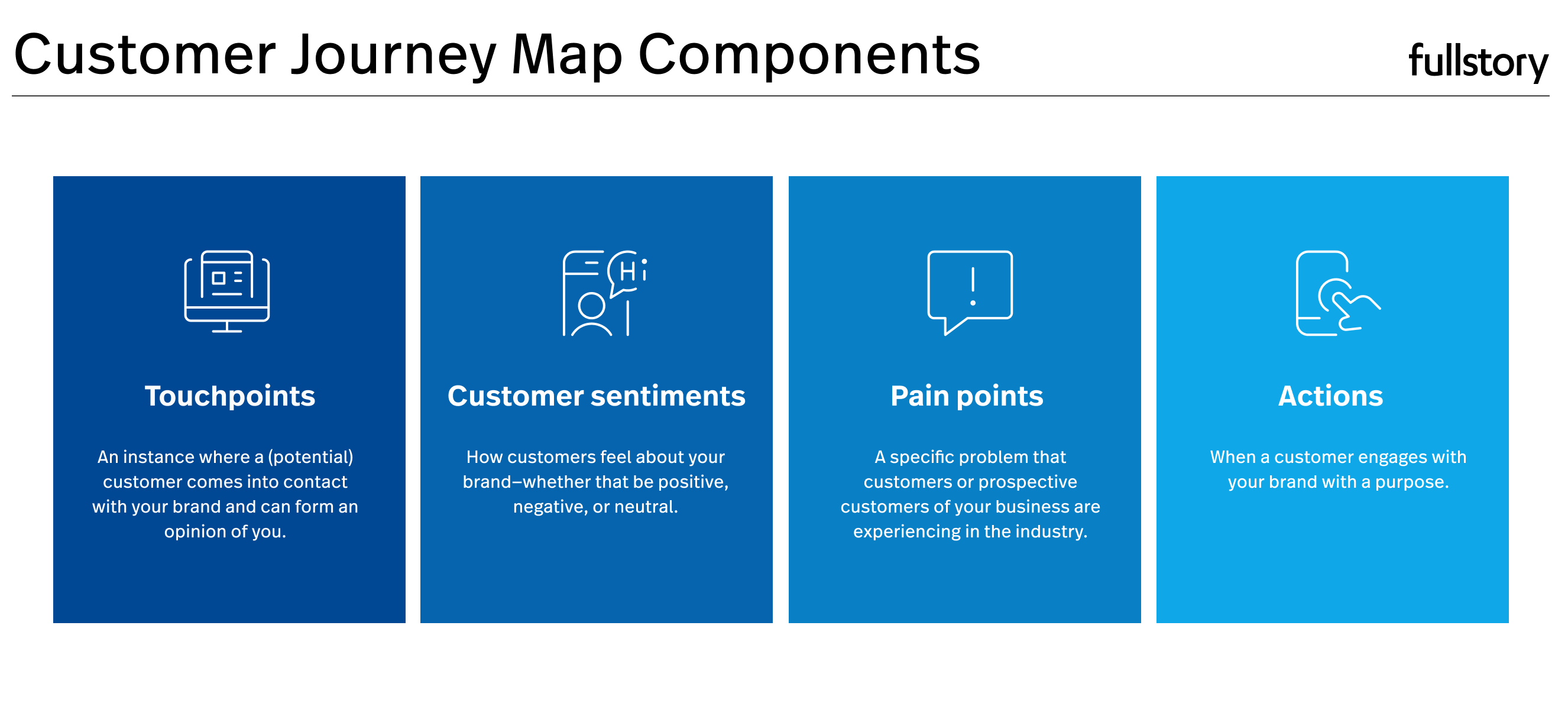
What are customer journey touchpoints?
Customer journey touchpoints are individual transactions through which the customer interacts with a business.
Customer journey touchpoints for omnichannel brands are everywhere, here are a few examples:
Social media posts
Product demos
Advertisements
Brick and mortar visits
Website visits
You’ll also have the added returning customer touchpoints to consider—like how engaged they are with your product, if they are returning to your website or if they are attending your events for the second or third time.
Examples of customer touchpoints
Identifying each touchpoint is crucial for creating a customer journey map that will drive a better customer experience. Once you’ve identified the touchpoints, list out possible customer actions for each.
Some actions that derive from customer touchpoints might be:
Downloading an eBook
Clicking on your FAQ
Requesting a demo or call
Subscribing to your blog
Clicking a paid ad
It’s important to know which touchpoints to invest time and resources into. Your map maps out the areas you can improve, retain and scale.
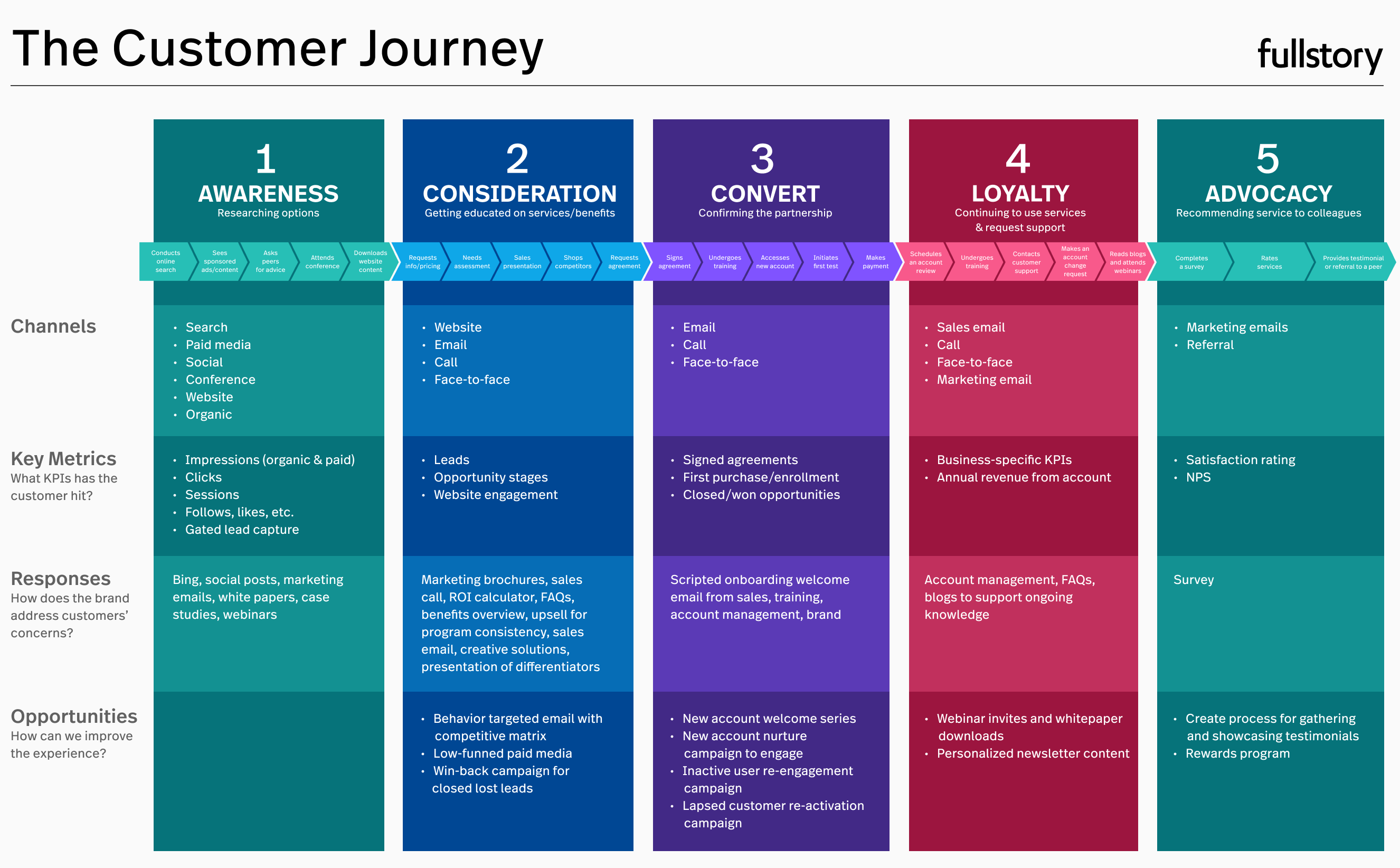
Types of customer journey maps
Each customer journey map has a different objective and business focus. There are six types to familiarize yourself with:
Current state —These illustrate what customers do , think, and feel as they interact with your business currently.
Future state —These illustrate what customers will do, think, and feel as they interact with your business in the future.
Day in the life —These examine everything that customers or prospects do, think, and feel (within a specific area), whether that involves your product or not.
Service blueprint —This is a diagram that usually starts with a basic version of an existing or future state journey map.
Circular —These are used for subscription-based models to visualize the customer journey as a circle or loop. This helps reinforce the importance of customer retention and lifetime value.
Empathy —These are used to create a shared understanding around the wants, needs, thoughts, and actions of a customer.
Journey maps are meant to be used as a strategic planning tool. Use these definitions to guide you towards aspects of other methods that your team has not previously considered.
Journey map vs. Experience map
A journey map is specific to a product or service, while an experience map is more general and can be used outside of a business's scope.
Since experience maps are more generic in nature, they can also be used to find pain points in a product or service for a future journey map.
Journey map vs. Service blueprint
If journey maps are a product of experience maps, they will need a blueprint to direct them there.
Service blueprints are a continuation of journey maps in the service industry. They lead the roadmap for service-based customer journeys.
Journey map vs. User story map
User stories are used in Agile to plan features or functionalities, much like a future customer journey map.
In the user story map case, each feature is condensed down to a deliberately brief description from a user’s point of view. The typical format of a user story is a single sentence:
“As a [type of user], I want to [goal], so that [benefit].”
How to create a customer journey map
To create a customer journey map , it helps to have an idea of the steps involved. You can break the process of creating a customer journey map down into the following steps:
Define —Define your map goals with the customer’s journey in mind and your business goals at the finish line.
Describe —Describe your customers and personas in detail from all aspects of their lives.
Determine —Identify customer touchpoints from the beginning of the roadmap of engagement with your brand.
Design —Lay out the customer journey every step of the way.
Designate —Mark customer milestones, motivations, frustrations, and turning points .
Decide —Flag events that require action and make the necessary arrangements to fix any errors.
Deploy —Adjust and optimize for a smoother customer experience.
Customer journey map templates
Having a template is a great way to get started. There are a few different templates to choose from:
Current state customer journey map
The current state journey map visualizes the current experience with your product or service. It involves defining the scope of the customer experience with customer touchpoints.

This type of customer journey map is designed with the considerations, thoughts, feelings, and actions of your customers in mind. Current state mapping is a practical approach to identify existing pain points and create a shared awareness of the end-to-end customer experience.
Day-in-the-life customer journey mapping
A day-in-the-life journey map is another simple grid map based on time, created especially for the daily grind of the customer. Instead of different journey stages, it represents times in the day related to actions based on decisions in the path of purchasing.
This template helps you visualize your customer’s daily routine even if these actions are outside your company. It typically is organized chronologically to systematically show the course of the habits of the day.
Day-in-the-life's are great for giving you insights into all the thoughts, needs, and pain points users experiences throughout their day. You can use this type of map to evaluate when your product or service will be most valuable in your customer’s day.
Future-state customer journey map
With a future-state journey map template, your goal is to learn how your customers feel about a new product launch or about how they will require your service in the future.
Future-state journey mapping is a useful approach to explore possible customer expectations and to create new experiences. Mapping out a future customer journey helps to align your team around a common goal—the betterment of the customer experience.
Service blueprint customer journey map
A service blueprint helps you design a roadmap of your service process—much like building a house. The goal is to be able to make projected changes to the service where needed and to be able to visualize each step in the eyes of the customer.
Service blueprint maps reflect the perspective of the organization and its employees and visualize the things that need to happen behind the scenes in order for the customer journey to take place.
Service blueprints are created when making procedural changes, or when trying to pinpoint solutions to roadblocks in the customer journey on a website.
Circular customer journey map
A circular customer journey map is just that—circular instead of linear or graph-like to showcase a different type of business model. For instance, a SaaS company may find it more useful to visualize the customer journey as a loop or wheel.
This subscription-based journey map does a nice job of portraying both the customer interactions and sentiments, as well as their journey from awareness to purchase.
Empathy customer journey map
The empathy journey map is a bit different because it aligns with the customer's feelings and emotions. Empathy is a big factor in the customer journey and this template is designed to help teams align their customer journey mapping exercise with these types of needs.
With empathy, you can get into your customer’s shoes and truly feel what they feel as it pertains to your product or service.
As with anything, you’ll need customer journey mapping tools to help you . The key is to find the right tool that works with your team and workflow.
Here are a few tools to consider:
Custellence
PowerPoint or Google Slides
With the right map and the right tools, you can overcome roadblocks and open a path to scalability and success.
Enhance your journey mapping process with customer intelligence. Look at data points like heatmaps , scroll maps , and other insights you can glean from session replay . Combining these quantitative and qualitative insights will help you in your journey mapping process.
Using journey maps to drive organizational change
It may not be easy to get buy-in to support the changes in strategic planning that result from customer journey mapping.
You can use what insights you’ve gleaned from the current state journey map in these beneficial ways:
Align your organization around the customer viewpoint. Engage with each department and set up a commitment to put the customer experience moments top of mind with an initiative for growth.
Enlist team members and partners to generate empathy for customers. Use your journey map to bring together relevant teams to train on customer experience best practices.
Supplement a new strategy with internal communications that encourage better customer service. As new initiatives roll out, use internal channels to communicate how you’re improving the experience of the customer, and how team members can help.
Optimize your user journeys with Fullstory
Understanding your users' digital experience and optimizing your most important touchpoints can be make-or-break.
With Fullstory Journeys, you can easily see how users explore your site or app and see step-by-step page navigations and other key interactions along the way. This lets you identify if users are using your site how you intended; what the most common navigation paths are; and how users typically arrive at your most critical pages.
It's no longer a guessing game—it's data-driven and actionable.
Fullstory's DXI platform combines the quantitative insights of customer journeys and product analytics with picture-perfect session replay for complete context that helps you uncover opportunities.
Sign up for a free 14-day trial to see how Fullstory can help you combine your most invaluable quantitative and qualitative insights and eliminate blind spots.
Frequently asked questions about customer journey maps
Who uses customer journey maps.
For any brand or company that wants to learn their customer, from the point of motivation to the turning point of frustration, a customer journey map is the best tactic to do so. Journey maps are best for scenarios that describe a sequence of events. You might want to map multiple scenarios for one persona, depending on your project goals.
How often should I update a customer journey map?
If business goals change, so could your customer’s goals. If you roll out a new product or service, you may want to edit or update your customer journey map. Keeping your maps updated can help you reach your goals as a team.
How many customer journey maps do I need?
The number of different customer journey maps needed all depends on your target audience. If you have multiple customer personas, it would be best to create different journey maps to suit each one.
At the very least, be sure to create a customer journey map for the current and future state so you can aid in predicting future trends of the customer journey in alignment with your product and service.
Who should be involved in the mapping process?
Anyone that is involved in making your product or service successful should have a hand in the mapping process. Sales, marketing, customer success, and product teams all should be involved in customer journey mapping. Every team member will benefit from truly understanding their customers to make for a better customer experience.
What is a user journey map in design thinking?
User journey maps for design thinking is an iterative process of studying the user so that they can engage with a system with more agility. It redefines customer problems in an attempt to identify alternative solutions that might not be obvious with the initial level of understanding.
Related resources and further reading
Map out how your customers navigate your website or app—and determine where you need to improve.
Jennifer Pyron from brand performance agency Mighty & True on building a customer journey map.
What is a customer journey map, how does it relate to product and marketing teams, and where can empathy help? Let's find out.
Fullstory helps you visualize customer interactions so you can understand and improve customer experience, one glowing review at a time.
A comprehensive guide to product analysis and analytics platforms, how important they are, and why they’re a valuable asset for your bottom line.
Journey mapping tools help marketers identify pain points, tailor interfaces, and cultivate efficient, enjoyable experiences for customers.
Root out friction in every digital experience, super-charge conversion rates, and optimize digital self-service
Uncover insights from any interaction, deliver AI-powered agent coaching, and reduce cost to serve
Increase revenue and loyalty with real-time insights and recommendations delivered to teams on the ground
Know how your people feel and empower managers to improve employee engagement, productivity, and retention
Take action in the moments that matter most along the employee journey and drive bottom line growth
Whatever they’re are saying, wherever they’re saying it, know exactly what’s going on with your people
Get faster, richer insights with qual and quant tools that make powerful market research available to everyone
Run concept tests, pricing studies, prototyping + more with fast, powerful studies designed by UX research experts
Track your brand performance 24/7 and act quickly to respond to opportunities and challenges in your market
Explore the platform powering Experience Management
- Free Account
- For Digital
- For Customer Care
- For Human Resources
- For Researchers
- Financial Services
- All Industries
Popular Use Cases
- Customer Experience
- Employee Experience
- Net Promoter Score
- Voice of Customer
- Customer Success Hub
- Product Documentation
- Training & Certification
- XM Institute
- Popular Resources
- Customer Stories
- Artificial Intelligence
- Market Research
- Partnerships
- Marketplace
The annual gathering of the experience leaders at the world’s iconic brands building breakthrough business results, live in Salt Lake City.
- English/AU & NZ
- Español/Europa
- Español/América Latina
- Português Brasileiro
- REQUEST DEMO
- Experience Management
- Customer Journey Mapping
- Customer Journey Stages
See how XM for Customer Frontlines works
The complete guide to customer journey stages.
12 min read If you want to turn a potential customer into a lifetime one, you’ll need to get to know every step of the entire customer journey. Here’s why the secret to customer retention lies in knowing how to fine-tune your sales funnel…
What is the customer journey?
What do we actually mean when we talk about the customer journey? Well, the simplest way to think about it is by comparing it to any other journey: a destination in mind, a starting point, and steps to take along the way.
In this case, the destination is not only to make a purchase but to have a great experience with your product or service – sometimes by interacting with aftersale customer support channels – and become a loyal customer who buys again.
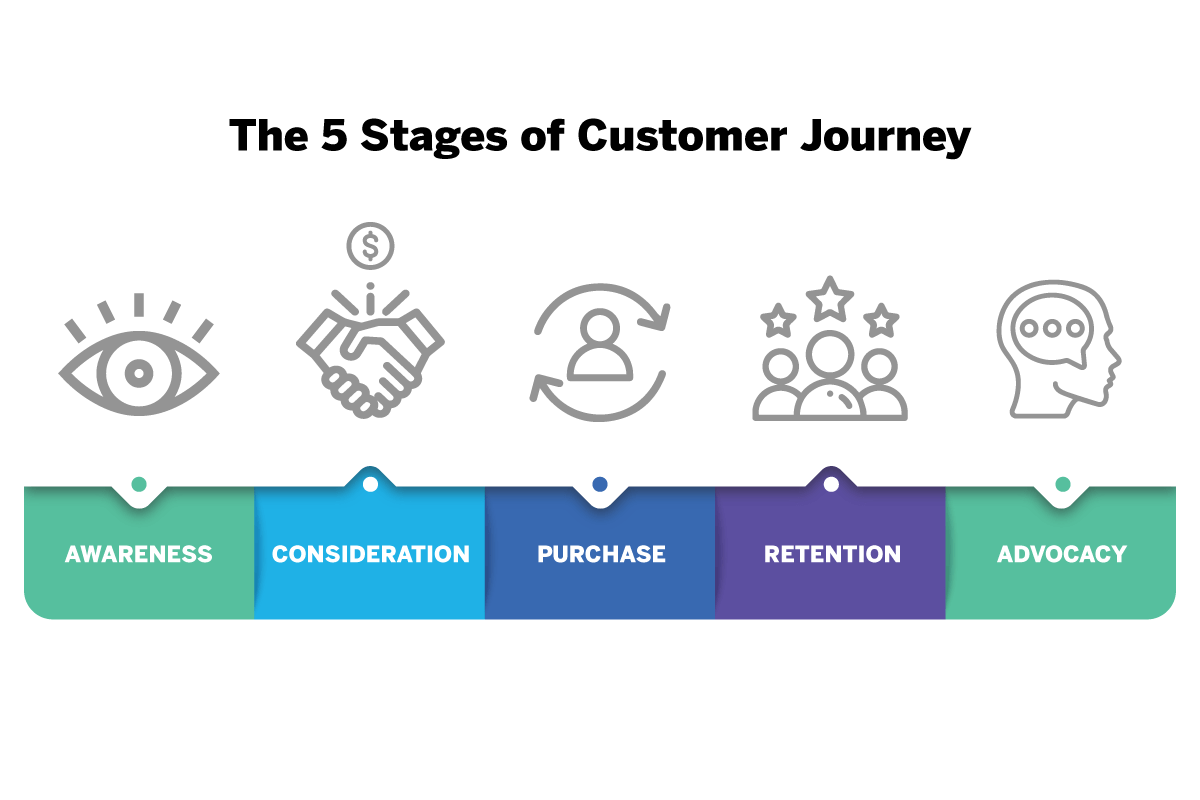
And, just like how you can’t arrive at your vacation resort before you’ve done you’ve found out about it, the customer journey starts with steps to do with discovery, research, understanding, and comparison, before moving on to the buying process.
“Maximizing satisfaction with customer journeys has the potential not only to increase customer satisfaction by 20% but also lift revenue up by 15% while lowering the cost of serving customers by as much as 20%”
– McKinsey, The Three Cs of Customer Satisfaction
In short, the customer journey is the path taken by your target audience toward becoming loyal customers. So it’s really important to understand – both in terms of what each step entails and how you can improve each one to provide a maximally impressive and enjoyable experience.
Every customer journey will be different, after all, so getting to grips with the nuances of each customer journey stage is key to removing obstacles from in front of your potential and existing customers’ feet.
Free Course: Customer Journey Management & Improvement
What are the essential customer journey stages?
While many companies will put their own spin on the exact naming of the customer journey stages, the most widely-recognized naming convention is as follows:
- Consideration
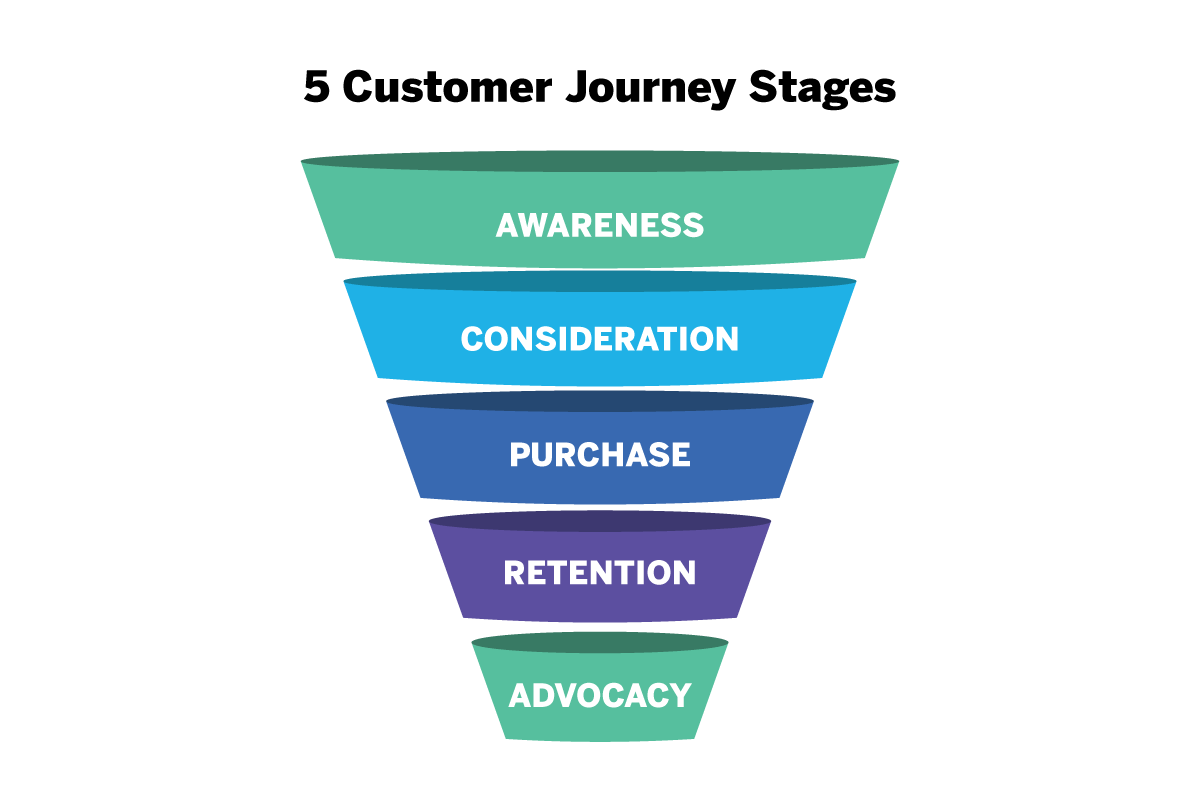
These steps are often then sub-categorized into three parts:
- Sale/Purchase
It’s important to understand every part of the puzzle, so let’s look at each sub-category and stage in turn, from the awareness and consideration stage, right through to advocacy:
Customer journey: Pre-sale
In the pre-sale phase, potential customers learn about products, evaluate their needs, make comparisons, and soak up information.
Awareness stage
In the awareness stage, your potential customer becomes aware of a company, product, or service. This might be passive – in that they’re served an ad online, on TV, or when out and about – or active in that they have a need and are searching for a solution. For example, if a customer needs car insurance, they’ll begin searching for providers.
Consideration stage
In the consideration stage, the customer has been made aware of several possible solutions for their particular need and starts doing research to compare them. That might mean looking at reviews or what others are saying on social media, as well as absorbing info on product specs and features on companies’ own channels. They’re receptive to information that can help them make the best decision.
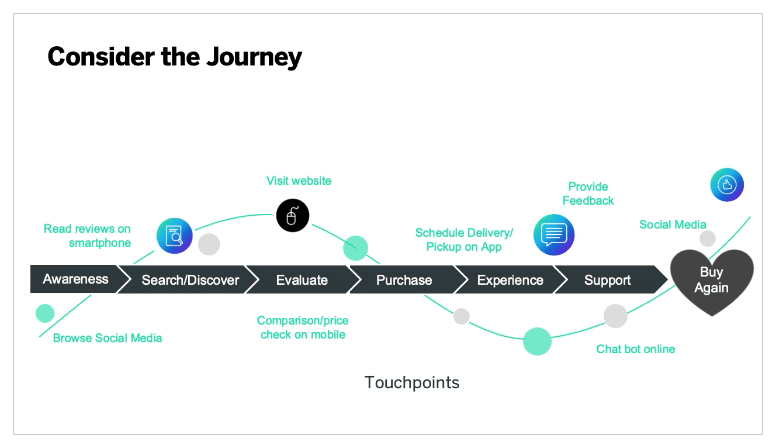
Customer journey: Sale
The sale phase is short but pivotal: it’s when the crucial decision on which option to go with has been made.
Decision stage
The customer has all the information they need on the various options available to them, and they make a purchase. This can be something that’s taken a long time to decide upon, like buying a new computer, or it can be as quick as quickly scouring the different kinds of bread available in the supermarket before picking the one they want.
Customer journey: Post-sale
Post-sale is a really important part of the puzzle because it’s where loyal customers , who come back time and again, are won or lost.
Retention stage
The retention stage of the customer journey is where you do whatever you can to help leave a lasting, positive impression on the customer, and entice them to purchase more. That means offering best-in-class customer support if they have any issues, but it also means being proactive with follow-up communications that offer personalized offers, information on new products, and rewards for loyalty.
Advocacy stage
If you nail the retention phase, you’ll have yourself a customer who not only wants to keep buying from you but will also advocate on your behalf. Here, the customer will become one of the most powerful tools in your arsenal, in that they’ll actively recommend you to their friends, family, followers, and colleagues.
What’s the difference between the customer journey and the buyer’s journey?
Great question; the two are similar, but not exactly the same. The buyer’s journey is a shorter, three-step process that describes the steps taken to make a purchase. So that’s awareness , consideration, and decision . That’s where things stop, however. The buyer’s journey doesn’t take into account the strategies you’ll use to keep the customer after a purchase has been made.
Why are the customer journey stages important?
The short answer? The customer journey is what shapes your entire business. It’s the method by which you attract and inform customers, how you convince them to purchase from you, and what you do to ensure they’re left feeling positive about every interaction.
Why this matters is that the journey is, in a way, cyclical. Customers who’ve had a smooth ride all the way through their individual journeys are more likely to stay with you, and that can have a massive effect on your operational metrics.
It’s up to five times more expensive to attract a new customer than it is to keep an existing customer, but even besides that: satisfied customers become loyal customers , and customer loyalty reduces churn at the same time as increasing profits .
So companies looking to really make an impact on the market need to think beyond simply attracting potential customers with impressive marketing, and more about the journey as a whole – where the retention and advocacy stages are equally important.
After all, 81% of US and UK consumers trust product advice from friends and family over brand messaging, and 59% of American consumers say that once they’re loyal to a brand, they’re loyal to it for life.
Importantly, to understand the customer journey as a whole is to understand its individual stages, recognize what works, and find things that could be improved to make it a more seamless experience. Because when you do that, you’ll be improving every part of your business proposition that matters.
How can you improve each customer journey stage?
Ok, so this whole customer journey thing is pretty important. Understanding the customer journey phases and how they relate to the overall customer experience is how you encourage customers to stick around and spread the news via word of mouth.
But how do you ensure every part of the journey is performing as it should? Here are some practical strategies to help each customer journey stage sing…
1. Perform customer journey mapping
A customer journey map takes all of the established customer journey stages and attempts to plot how actual target audience personas might travel along them. That means using a mix of data and intuition to map out a range of journeys that utilize a range of touch points along the way.
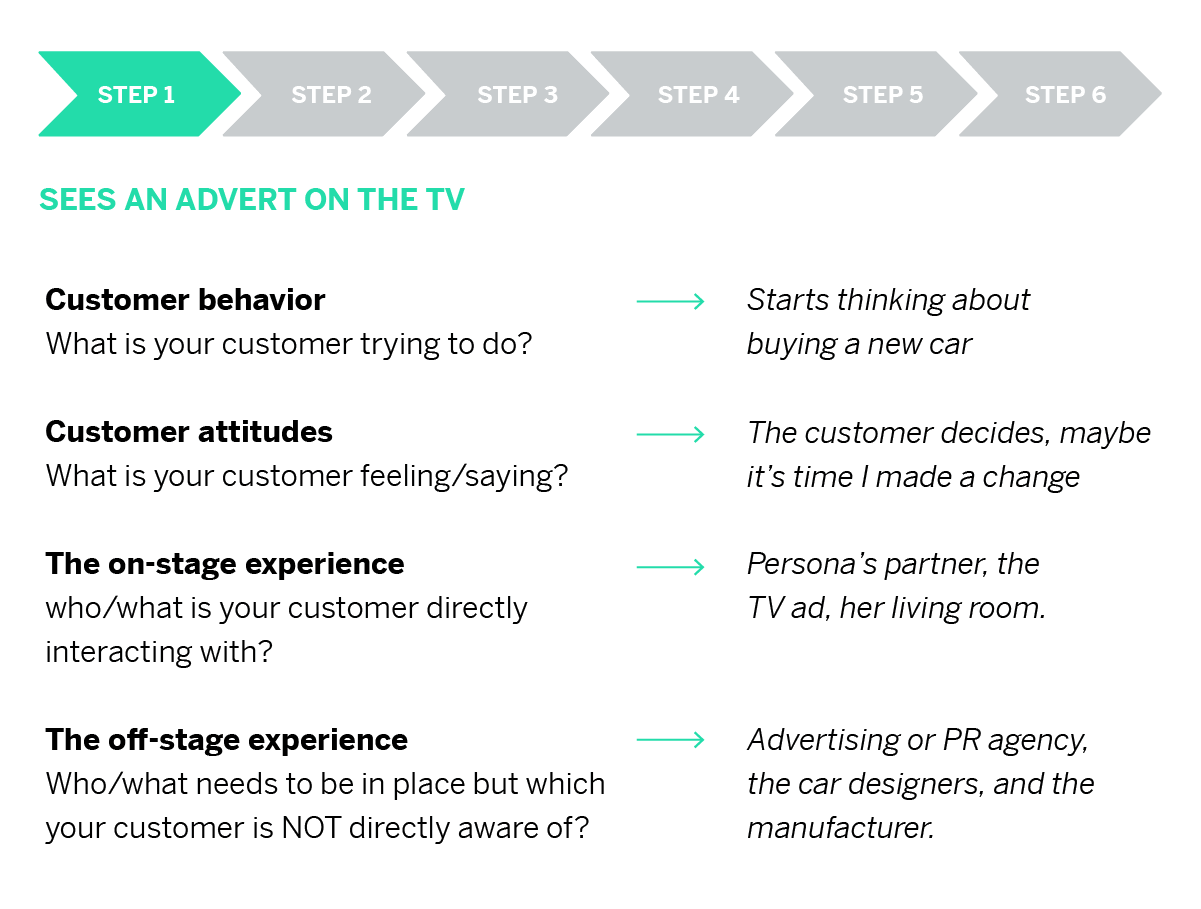
One customer journey map, for example, might start with a TV ad, then utilize social media and third-party review sites during the consideration stage, before purchasing online and then contacting customer support about you your delivery service. And then, finally, that customer may be served a discount code for a future purchase. That’s just one example.
Customer journey mapping is really about building a myriad of those journeys that are informed by everything you know about how customers interact with you – and then using those maps to discover weaker areas of the journey.
2. Listen like you mean it
The key to building better customer journeys is listening to what customers are saying. Getting feedbac k from every stage of the journey allows you to build a strong, all-encompassing view of what’s happening from those that are experiencing it.
Maybe there’s an issue with the customer sign-up experience, for example. Or maybe the number advertised to contact for a demo doesn’t work. Or maybe you have a customer service agent in need of coaching, who only makes the issue worse. By listening, you’ll understand your customers’ issues and be able to fix them at the source. That customer service agent, for example, may just feel disempowered and unsupported, and in need of the right tools to help them perform better. Fixing that will help to optimize a key stage in the customer journey.
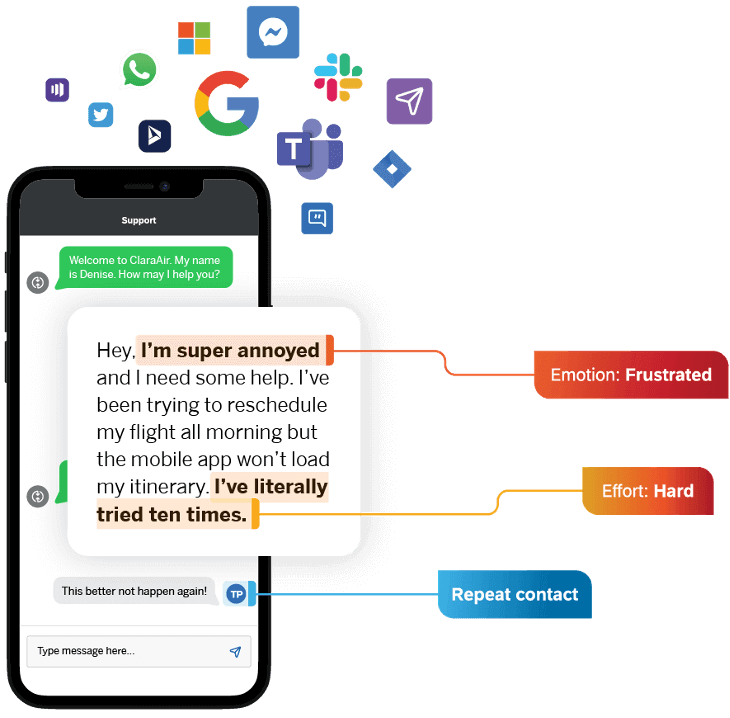
The key is to listen at every stage, and we can do that by employing the right technology at the right customer journey stages.
Customer surveys, for instance, can help you understand what went wrong from the people who’re willing to provide that feedback, but conversational analytics and AI solutions can automatically build insights out of all the structured and unstructured conversational data your customers are creating every time they reach out, or tweet, or leave a review on a third party website.
3. Get personal
The other side of the ‘listening’ equation is that it’s worth remembering that each and every customer’s journey is different – so treating them with a blanket approach won’t necessarily make anything better for them.
The trick instead is to use the tools available to you to build out a personalized view of every customer journey, customer journey stage, and customer engagemen t, and find common solutions.
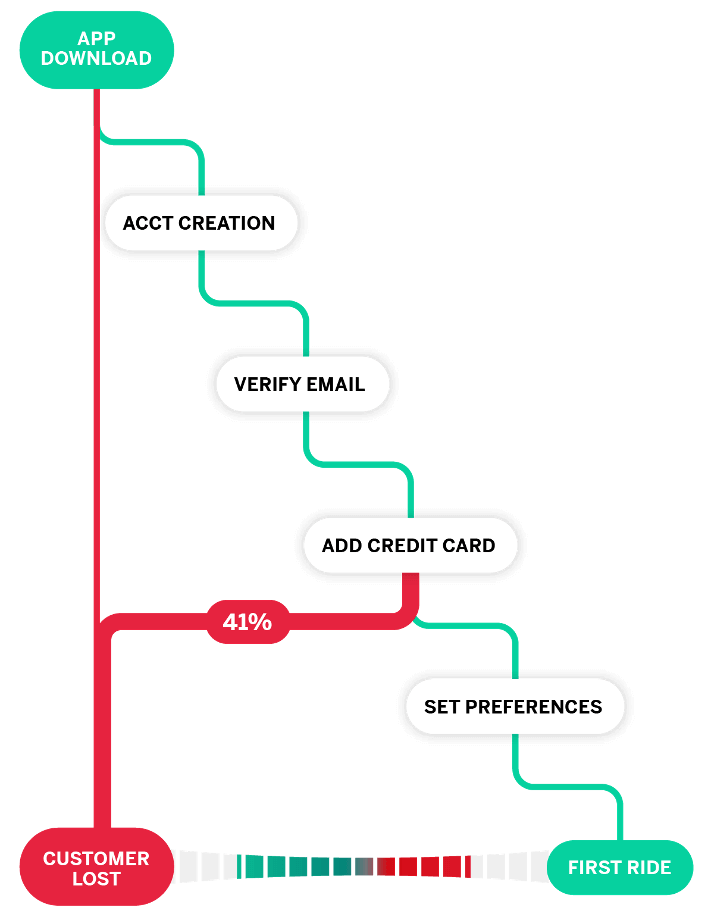
Qualtrics Experience iD , for example, is an intelligent system that builds customer profiles that are unique to them and can identify through AI, natural language processing , and past interactions what’s not working – and what needs fixing.
On an individual basis, that will help turn each customer into an advocate. But as a whole, you’ll learn about experience gaps that are common to many journeys.
Listening to and understanding the customer experience at each customer journey stage is key to ensuring customers are satisfied and remain loyal on a huge scale.
It’s how you create 1:1 experiences, because, while an issue for one person might be an issue for many others, by fixing it quickly you can minimize the impact it might have on future customers who’re right at the start of their journey.
Free Course: Customer Journey Management Improvement
Related resources
Customer Journey
Buyer's Journey 16 min read
Customer journey analytics 13 min read, how to create a customer journey map 22 min read, b2b customer journey 13 min read, customer interactions 11 min read, consumer decision journey 14 min read, customer journey orchestration 12 min read, request demo.
Ready to learn more about Qualtrics?

Discover the best strategy for your outbound team and talk to our data specialists about your contact data needs.

Trusted by 50,000+ users

12 Key Customer Journey Marketing Strategies for Business Success
What’s on this page:

In today’s competitive market, customer experiences extend beyond a single transaction. The customer journey encompasses every touchpoint and interaction a person has with your brand across multiple channels and throughout their relationship with you.
Customer journey marketing centers on understanding each stage of the customer experience and optimizing engagements to nurture positive relationships over time. In this article, we’ll explore proven customer journey marketing strategies to help you enhance customer engagement at each step of their journey with your brand.
You’ll learn how to leverage personal development, data analysis, touchpoint optimization, and other approaches to create personalized, integrated experiences that convert prospects into loyal brand advocates.
With the right combination of these strategies tailored to your business goals, you can unlock new opportunities for sustainable growth and success.
What is the Customer Journey?
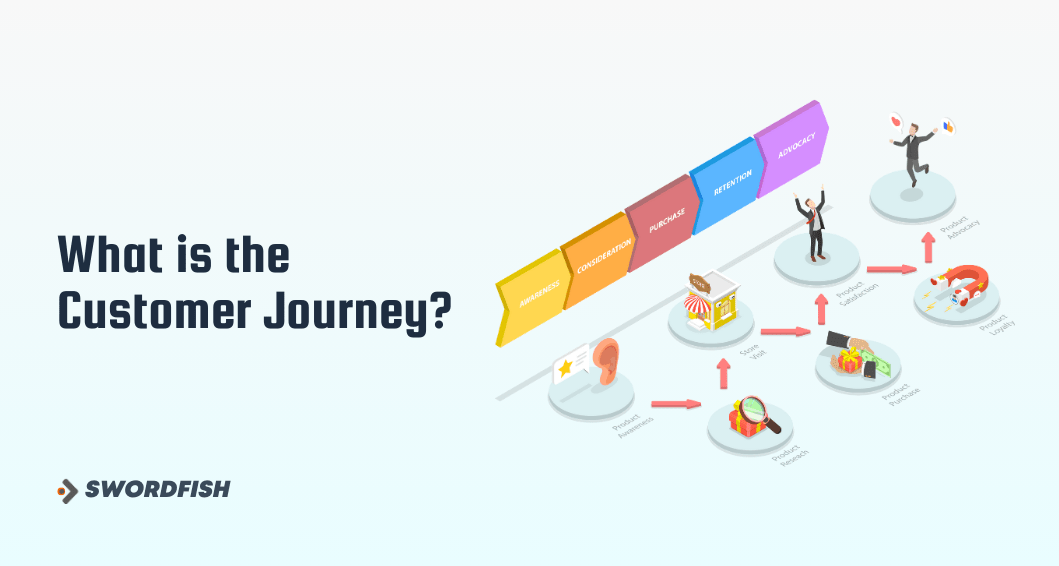
Customer Journey Marketing refers to the strategic approach of mapping and optimizing the entire lifecycle of a customer’s interactions with a company or product, from initial awareness through the purchase process and beyond.
It involves understanding and shaping every touchpoint and experience a customer has, aiming to create a seamless and personalized journey that aligns with their needs and preferences.
This process integrates various marketing channels, data analytics, and customer insights to ensure that each step of the customer’s story is well-crafted and tailored. This eventually leads to enhanced customer satisfaction, loyalty, and business growth.
Customer journey marketing is about guiding individuals through their unique paths, from the first encounter to post-purchase engagement, with the goal of delivering a compelling and satisfying brand experience
The journey includes seeing the ad, searching online, reading reviews, asking friends, visiting the store, buying the phone, and using it.
It’s important for businesses to understand this journey so they can make it easier and more enjoyable for people to buy and use their products. This way, they can make customers happy and keep them coming back.
Different Stages of the Customer Journey

Understanding these stages helps businesses improve their customer’s experience at each point, aiming to turn them into loyal advocates.
This is when you first become aware of a product or brand. It could be through an advertisement, a social media post, word of mouth, or just stumbling upon it while browsing.
Consideration
At this stage, you’re interested and start thinking seriously about buying the product or service. You’ll research more, compare it with other options, read reviews, and consider how well it meets your needs.
Now, you’re ready to make a choice. You decide whether to buy the product or not based on the information you’ve gathered.
This is the action stage, where you actually buy the product or service.
After the purchase, the focus shifts to keeping you happy as a customer. The company might reach out with support, additional information, or offers to ensure you’re satisfied and engaged.
If you’re really happy with the product, you might tell others about it. This can include leaving reviews, recommending it to friends, or sharing your experience on social media. Your positive feedback can start the journey anew for someone else.
12 Key Strategies for Customer Journey Marketing
Approximately 70% of customers tend to spend more with businesses that provide smooth, customized, and uninterrupted experiences.
So, understanding and implementing effective customer journey marketing and examples is crucial. These strategies can significantly impact how customers perceive and interact with your brand, ultimately influencing their purchasing decisions and loyalty
1. Identify Customer Personas

Identifying customer personas is about recognizing and understanding the different types of customers who interact with your brand.
Each persona represents a segment of your customer base with unique characteristics, preferences, and needs.
Start by collecting data on your current customers. Look at demographics, purchase history, browsing behavior, and social media engagement.
Then, conduct surveys or interviews to gain deeper insights into their motivations, challenges, and preferences.
Plus, you can analyze this data to create detailed profiles for each key customer group. These profiles should include information like age, gender, interests, pain points, and buying triggers.
Pro Tip : Don’t just rely on quantitative data. Qualitative insights are equally important.
Engage in conversations with your customers through social media, focus groups, or one-on-one interviews to understand their thoughts and feelings beyond what numbers can tell you. This will help in creating more accurate and empathetic personas.
Understanding your customer personas allows for more targeted marketing efforts. You can tailor your messaging, product development, and services to meet the specific needs of different customer groups, leading to higher engagement and conversion rates.
2. Map the Customer Journey

Mapping the customer journey involves outlining the complete path a customer takes with your brand, from the first point of contact to post-purchase interactions. This journey includes every touchpoint where the customer engages with your brand, both online and offline.
First, you have to identify the key stages in the journey, such as awareness, consideration, decision, purchase, and post-purchase.
For each stage, list out the customer actions, thoughts, and emotions. This can include visiting your website, reading reviews, or contacting customer service.
Determine the channels and touchpoints at each stage – for example, social media, email, or in-store experiences.
Use customer feedback and analytics to understand the experience at each touchpoint.
Pro Tip: Create customer journey maps for each persona you identified. Different personas may have different paths and experiences with your brand. By mapping these out, you can personalize the experience for each segment more effectively.
A well-defined customer journey map helps you understand how customers interact with your brand at each stage.
It highlights areas where you can improve the customer experience and identifies opportunities for engagement and conversion.
3. Personalize the Experience

Personalizing the experience means tailoring your interactions and content to meet each customer’s specific needs and preferences, based on the data you’ve collected about them.
Around 88% of online shoppers will keep shopping on a retail website that provides a tailored experience. This percentage increases to 96% for Gen Zers and 97% for Millennials.
You can use customer personas and journey mapping information to create customized content, recommendations, and offers.
Then you can implement technology solutions like CRM (Customer Relationship Management) systems to segment your audience and deliver relevant content.
Keep in mind that you have to consider personal touches, like addressing customers by name in emails or offering recommendations based on past purchases.
Pro Tip : Use AI and machine learning tools to analyze customer data and predict future behavior. This can help in delivering even more personalized and proactive experiences.
Personalization can significantly enhance customer engagement and loyalty. When customers feel understood and valued, they are more likely to continue interacting with your brand and make repeat purchases.
4. Utilize Data and Analytics
This strategy involves using data and analytics to gain insights into customer behavior and preferences. It’s about collecting, analyzing, and acting upon data from various sources to inform your marketing decisions.
Implement tools for data collection, such as web analytics, social media monitoring, and customer feedback systems.
Then, analyze this data to identify trends, patterns, and customer preferences. Eventually, use these insights to make informed decisions about product development, marketing strategies, and customer experience improvements.
Pro Tip : Don’t just collect data; focus on actionable insights. For instance, if data shows a high cart abandonment rate on your website, investigate the causes and work on strategies to reduce it.
Properly utilized data and analytics can lead to more efficient marketing, improved customer satisfaction, and increased ROI from your marketing efforts.
5. Optimize Touchpoints

Optimizing touchpoints means improving every point of interaction between your customers and your brand. This includes your website, customer service, social media, emails, and even in-person encounters.
Identify all the touchpoints in your customer journey. Then, analyze each touchpoint for effectiveness and customer satisfaction. Look for areas where customers might experience friction or frustration.
Next, make improvements to these touchpoints. This could be enhancing website usability , training customer service staff, or creating more engaging email content.
Pro Tip: Use A/B testing at different touchpoints to see what works best. For example, try different versions of a webpage or email and see which one gets better customer response.
Optimizing touchpoints can significantly improve the overall customer experience, leading to higher customer satisfaction, loyalty, and advocacy
6. Focus on Mobile Experience
This approach focuses on making sure that websites and online services are easy to use on mobile phones. Since more people are using their smartphones to browse the internet and shop, it’s really important to make sure everything works well on mobile devices.
Ensure your website is mobile-responsive, meaning it adjusts smoothly to different screen sizes. Then, you have to simplify navigation and streamline content for mobile users.
Also, consider developing a mobile app if it aligns with your business and customer needs.
Pro Tip : Regularly test your mobile site or app for load times and ease of use. Even small improvements in speed or design can significantly enhance the user experience.
A strong mobile experience can increase customer engagement, improve accessibility, and boost conversions, especially among younger, mobile-savvy audiences.
7. Social Media Engagement

This involves using social media platforms not just for marketing, but as tools for engaging directly with customers, understanding their preferences, and enhancing their journey with your brand.
In the last 12 months since October 2022, approximately 215 million new users have joined social media, representing an annual growth rate of 4.5%. This breaks down to an average of 6.8 new users every second.
Additionally, a typical social media user actively uses or visits an average of 6.7 different social media platforms each month.
Actively participate in social conversations about your brand and industry.
You can use social media for customer service, responding promptly to queries and feedback. Additionally, share content that resonates with your audience and encourages interaction.
Pro Tip: Monitor social media for customer sentiment and trends. This real-time feedback can be invaluable for quickly adjusting your strategies.
Engaging effectively on social media can build stronger relationships with customers, improve brand perception, and provide valuable insights into customer preferences and behaviors.
8. Implement Feedback Loops
Implementing feedback loops is about creating channels through which you regularly gather and respond to customer feedback. This ongoing process helps you continuously improve your products and customer experience.
Use surveys, feedback forms, and social media to collect customer opinions. Analyze this feedback to identify common issues or suggestions. Note that you can make changes based on this feedback and communicate these changes back to customers.
Pro Tip : Make feedback collection a part of the customer journey. For instance, after a purchase or service interaction, it automatically sends a survey.
Feedback loops help you stay aligned with customer needs and show customers that their opinions are valued and acted upon.
9. Enhance Customer Support
Enhancing customer support involves improving the quality, speed, and accessibility of the support you offer. Great customer support is a vital part of the customer journey, impacting satisfaction and loyalty.
First and foremost, train your support team to handle inquiries efficiently and empathetically. Next, you can implement support tools like live chat, AI chatbots , and self-service knowledge bases. Ensure your support is easily accessible across multiple channels.
Pro Tip: Regularly review customer support interactions for insights and training opportunities.
Effective customer support can turn potential negative experiences into positive ones, fostering trust and loyalty among your customers.
10. Continuously Monitor and Adapt
What it Means: This strategy is about staying agile and responsive to changes in customer behavior, market trends, and your own business growth.
It requires a commitment to ongoing evaluation and improvement of your customer journey marketing tactics.
Regularly analyze customer data and feedback to identify shifts in behavior or preferences. Also, stay updated on industry trends and technological advancements.
Be ready to adjust your strategies, processes, and tools in response to new insights.
Pro Tip : Incorporate tools for real-time analytics and feedback to quickly spot and respond to changes.
By continuously monitoring and adapting, you can ensure your customer journey remains relevant and effective, keeping you ahead of competitors and aligned with your customers’ evolving needs.
11. Integrate Cross-Channel Marketing
What it Means: This involves using multiple channels in a coordinated way to engage with customers. Integrating your B2B marketing efforts across channels creates a more cohesive and powerful customer journey.
You can identify the channels your customers use, such as social media, email, and websites. In the next step, you must develop a strategy that delivers consistent messaging across these channels.
Use analytics to understand how customers move between channels and tailor your strategies accordingly.
Pro Tip: Test different combinations of channels to see which mix works best for your audience.
Cross-channel marketing ensures a unified brand experience, increasing the effectiveness of your marketing efforts and improving customer perception.
12. Use Advanced Tools like Swordfish AI

Using advanced tools like Swordfish AI means harnessing technology to gain deeper insights into customer behavior and preferences, thereby enhancing your marketing strategies.
Swordfish AI is a cutting-edge tool that improves businesses to take their customer engagement and marketing strategies to the next level.
In an era where understanding customer behavior is paramount, Swordfish AI stands out as a game-changer. This innovative platform harnesses the power of artificial intelligence to provide deeper insights into customer preferences and behaviors, revolutionizing the way businesses interact with their audience.
Key features of Swordfish Ai
The features of Swordfish AI that make it edge out –
- 3.5 Billion Profiles : Access to an extensive database of over 3.5 billion verified individual data profiles.
- Exclusive Cell Phone Data : Gain access to unique cell phone data for direct outreach to prospects and customers.
- In-house Verification : Swordfish AI employs a robust in-house cell phone verification system, ensuring unmatched contact data reliability.
- Premium Business Emails: Access high-quality premium business emails, a rare and valuable resource for effective outreach.
- Strategic Partnerships: With verified cell phone data and strategic carrier partnerships, Swordfish AI prioritizes precision and reliability in providing contact information.
- Proprietary Algorithms : Use advanced cell phone matching algorithms, lifting Sales Development Representatives (SDRs) for more effective outreach.
How to Implement Customer Journey Marketing Strategies
Implementing a customer journey strategy involves several important steps, tailored to your specific business needs and customer insights
- Understanding Customer Success: Define what success means for your customers, considering their goals, challenges, and how they use your products or services.
- Mapping the Customer Journey Stages : Recognize the stages your customers go through, including Awareness, Consideration, Purchase, Adoption, Retention, Expansion, and Advocacy.
- Identifying Customer Touchpoint: Use analytics to list all the ways customers interact with your company, like social media, ads, and customer service. Understand their motivations and goals at each point.
- Planning Customer Actions : Create clear, simple steps for customers to engage with your product, like downloading a trial or contacting you.
- Reducing Churn and Increasing Retention: Analyze customer behavior to understand and address reasons for churn. Use personalization to enhance their experience.
- Continuously Updating Your Strategy : Regularly review and adapt your strategy based on new data and customer feedback to stay relevant and effective.
How to Improve Customer Marketing Strategy With CJM

Customer Journey Mapping, or CJM, reveals moments of truth and opportunities to optimize each touchpoint.
Keep the customer perspective in mind as you identify friction points and refine experiences across the entire lifecycle. This customer-centric focus will steadily improve satisfaction and retention over time.
Identify Pain Points and Friction
Closely analyze each touchpoint in the customer journey to pinpoint areas of friction or pain for customers.
Look for moments of confusion, lack of desired information, technical difficulties, or any other roadblocks in the path to purchase. Addressing these pain points through improved messaging, content, or features can significantly smooth the journey.
Optimize Paths to Purchase
Examine the most common purchase paths customers take through your funnel. Look for opportunities to refine and simplify these pathways to make it easier for customers to convert.
Test removing unnecessary steps or optimizing page layouts and CTAs on key pages along the most popular journeys.
Strengthen Post-Purchase Experience
Many journeys don’t end at purchase. Analyze the experience you deliver after a customer buys from you. Identify ways to improve onboarding, training, account management, and ongoing support.
Strong post-purchase experiences lead to higher satisfaction, retention, and referrals.
Align Marketing and Sales
Look for gaps, disconnects, or inconsistencies between marketing and sales. Improve alignment of messaging and positioning across channels.
Share customer insight data to build better understanding between the teams. A unified approach creates a seamless, cohesive journey.
When it comes to customer journey marketing strategies, the key is to choose the ones that best align with your business goals and customer needs.
Start by understanding your audience by identifying customer personas and mapping their journey. Personalize experiences and utilize data and analytics to tailor your approach.
Don’t forget the importance of optimizing touchpoints, focusing on mobile experience, and leveraging social media engagement. Implement feedback loops, enhance customer support, and continuously monitor and adapt your strategies.
Integrating cross-channel marketing and leveraging advanced tools like Swordfish AI can provide deeper insights and streamline your efforts.
Choose strategies that resonate most with your customers and fit seamlessly into your overall marketing plan.
Can small businesses effectively implement customer journey marketing strategies without big budgets?
Explores cost-effective methods for small businesses to adopt these strategies.
How frequently should customer journey maps be updated?
Addresses the importance of keeping customer journey maps current with changing customer behaviors and market trends.
What role does content marketing play in the customer journey?
Examines how different types of content can influence various stages of the customer journey.
How can customer journey marketing strategies be adapted for international markets?
Discusses the nuances of tailoring these strategies to different cultural and regional contexts.
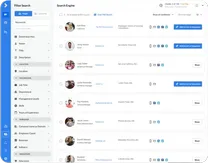
Cookies are being used on our website. By continuing use of our site, we will assume you are happy with it.
Add unique cell phone and email address data to your outbound team today
Talk to our data specialists to get started with a customized free trial.

In this post
How to Use Customer Journey Mapping in Your Marketing Strategy
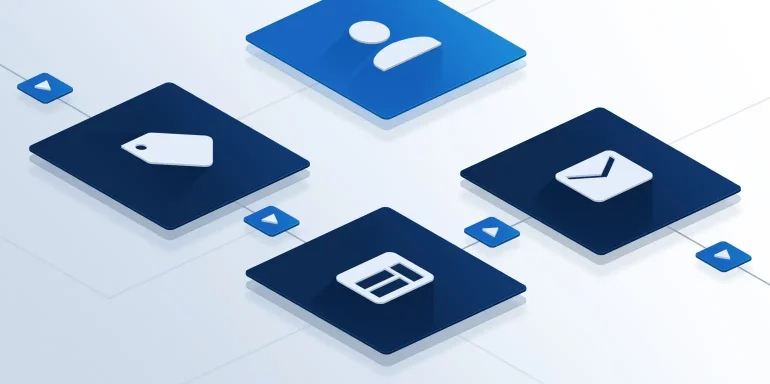
.A marketer’s primary focus is to predict and influence customer behavior.
Every buyer persona you create, every ad you promote, every landing page you publish and every email you send out has one primary goal – persuading visitors to act while predicting and preparing for the action they are likely to take next.
This means that you need to know what motivates your visitors in the present and the future.
How do you do that?
Say hello to customer journey mapping.
What is customer journey mapping?
A customer journey map is a visual that helps marketers outline the story of a customer’s experience (from the first interaction with their business) to a long-term relationship, from the client’s point of view.
It can look something like this :
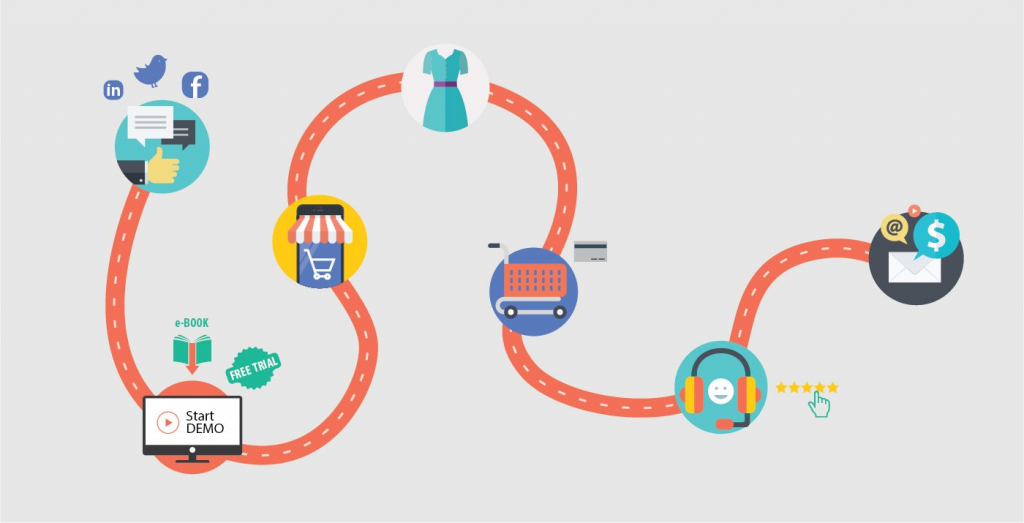
There are three main advantages of creating customer journey maps:
- Get valuable insights : Customer journey mapping gives you an insight into customers’ expectations of the brand at each step of their journey. This, in turn, helps you create customer experiences that motivate customers to reach the last point of the journey.
- Understand customer expectations : Creating customer journey maps allow you to understand the channels and touchpoints. Your customers are likely to take to get to your product, what expectations they have for your product and what their possible frustrations could be.
- Predict and influence consumer behavior : A detailed customer journey map informed by the right data helps. You predict and therefore change customer behavior which in turn optimizes the conversion process.
What it takes to create an optimized customer journey map, and what role do landing pages and content play in the customer journey stages is what we’ll be discussing next.
What are the components of a customer journey map?
You’ll need the following components to create an optimized customer journey map :
- Buyer personas : A buyer persona is a representation of your target customer based on detailed market research. It includes demographics such as age, gender, job title, etc. Each buyer persona has separate buying behavior. This is why you need to create a different customer journey map for each persona. The persona information you’ve already collected helps you map out a customized journey for that particular buyer persona.
- Customer stages : Before mapping out the customer journey you need to figure out the stages your customer goes through to come into contact with your brand. The customer steps are more commonly referred to as the marketing funnel. This customer acquisition model consisting of the following stages – awareness, consideration, decision, and retention.
- Understanding customer goals : You need to understand the goal your customers are trying to achieve at each customer stage. Collect data through surveys, interviews and customer service emails to figure out your customers’ goals. You can align them with the customer journey touchpoints.
- Identify touchpoints : Touchpoints are the interactions the customer has with your brand at each customer stage on specific web pages or ads. For example, awareness stage touchpoints are likely to include short-form landing pages, case studies, webinars and your blog, etc.
- Maintain a time frame : Because you’ll be using real data collected through customer analytics. Surveys and interviews you can maintain a realistic schedule as to when each customer stage should end. You should know how long your touchpoints take to convince customers to move to the next stage.
- Consider customer emotion : The client’s journey is told from the customer’s perspective. So, keeping into consideration which emotion (whether delight or frustration) your customer is likely to feel helps you ascertain if they will move from one stage to the other.
How to optimize customer stages for customer journey mapping
According to eMarketer , 55% of marketers aren’t confident in their company’s understanding of the customer journey:
A lot of the lack of confidence stems from the fact that marketers believe that data is not being effectively used to map out optimized customer experiences at different stages of the customer journey.
So, how do you optimize customer stages for your customer journey map?
By putting the customer at the center stage, and giving them access to content that delights and satisfies them at every present stage, so they can easily move to the next stage.
Here’s an example of how a customer seamlessly moves from one customer stage touchpoint to another because of an optimized journey map :
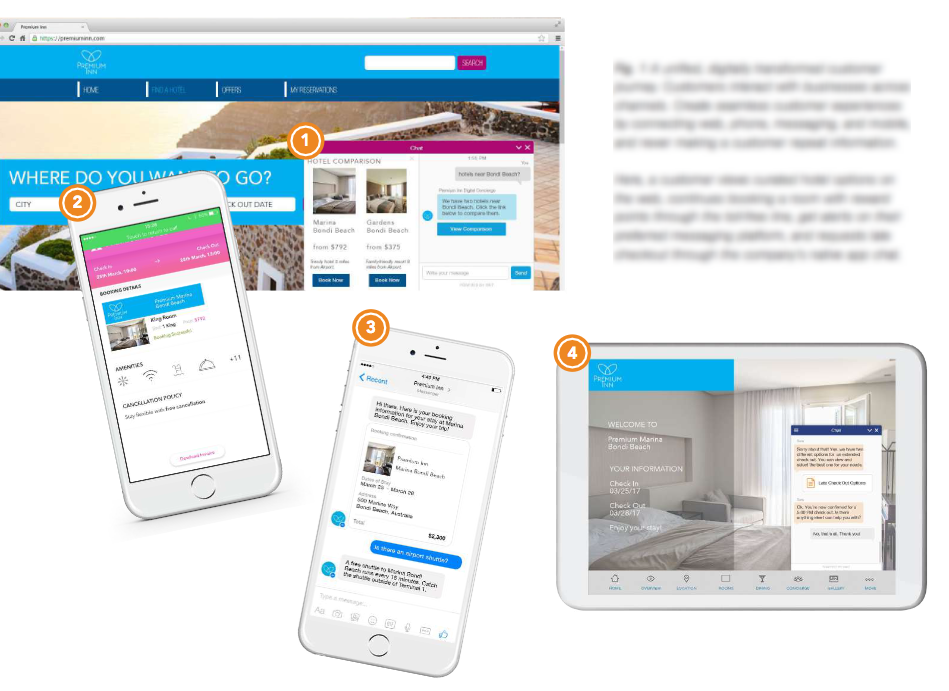
In the case the customer searches for curated hotel options on the web, continues booking a room with reward touchpoints through the toll-free line, then gets an alert on their preferred messaging platform and requests late room check out from the company’s native chat application.
To optimize your customer journey map, it is important you chalk out what content the customer will have access to each touchpoint. So they are encouraged to move onto the next touchpoint and finish their journey in the pre-determined timeframe.
Let’s take a look at the what type of content and landing pages you can use at each customer stage , and which touchpoints your customers are likely to interact with at each stage.
Stage 1: Awareness
This is the first stage of your customer journey. The recognition stage starts as soon as a customer becomes aware of the fact that they have a problem.
Customer research at this stage is purely educational. Now that they’ve become aware they have a problem they strive to find more about this issue. How it’s affecting their daily lives, their livelihood, etc.
The primary touchpoint involved at this stage is your search and display ads as customers are likely to search for their problems on search engines. They are also likely to ask questions on social media which will then trigger your relevant ads.
Pay particular attention to writing ad copy that satisfies the customer at the awareness stage. Use your targeting options wisely and create relevant ads for audiences that want to see your ad.
When adding keywords to your PPC strategy, think about user intent. A customer looking for a particular product will use different keywords than a customer who’s just browsing for more information.
A customer in the discovery phase will use keywords that center around the problem they’re facing. At this stage, you need to show customers ads that connect to landing pages that offer visitors the information they need to understand more about the problem and how they can go about solving it.
Awareness stage landing pages need to be short; they can include offers such as whitepapers, ebooks, webinars, etc. which the customer can get access to after they enter their contact details.
A Google search for the keywords ‘better social media management’ shows Marketo’s ad that offers users a free guide. This will inform them about best practices from industry leaders about social media management:
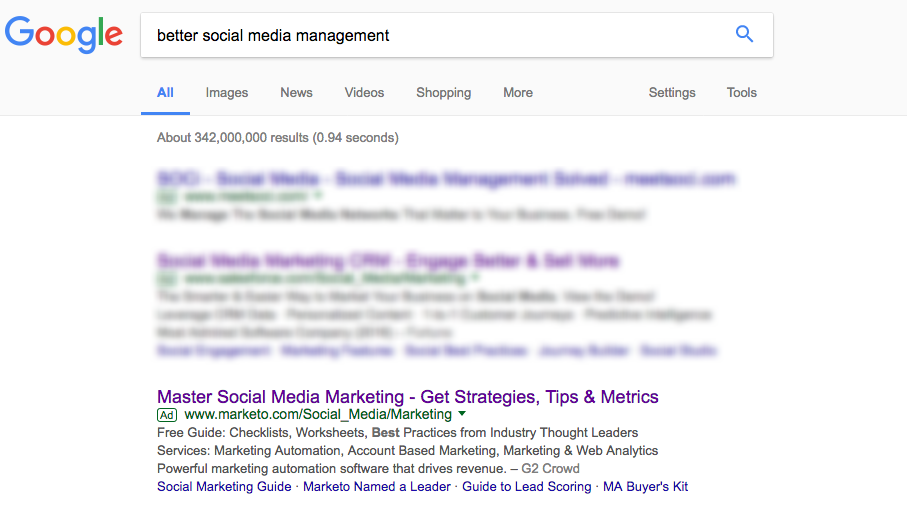
The landing page connected with the ad offers visitors a free guide in exchange for their contact details:
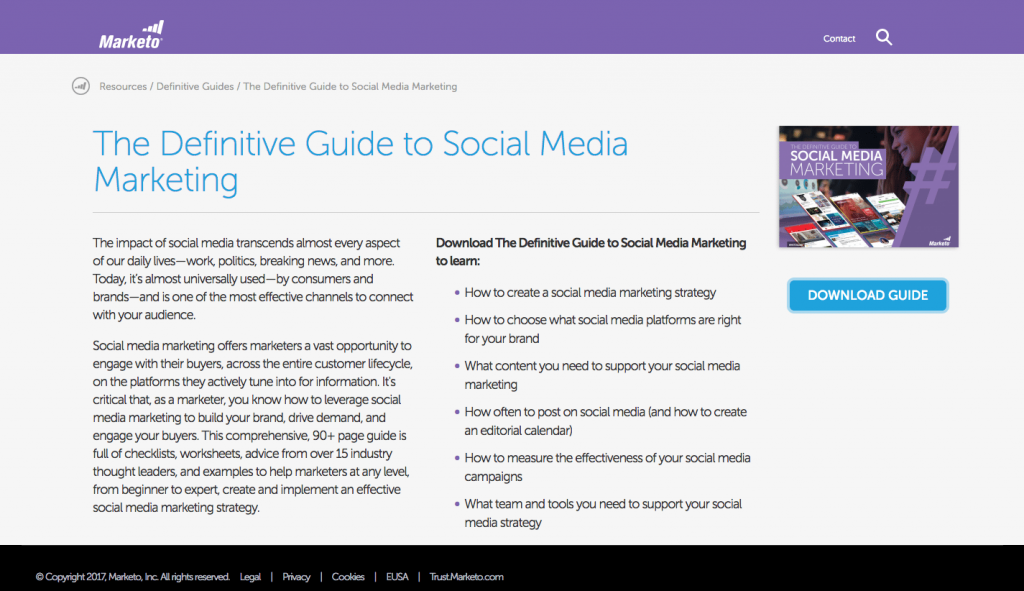
Only focus on the soft-sell at this stage, offer your customers a free resource first. Once you’ve warmed them up, you can then go in for the hard-sell.
Landing pages used at the awareness stage shouldn’t blatantly promote the product/solution. They should offer customers the necessary information they need to make an informed decision at the next stage of the journey.
For example, Instapage’s Copywriting for Conversion ebook is meant for customers that are having trouble creating landing pages with persuasive conversion copy. The ebook doesn’t promote Instapage as a landing page solution. Instead, it offers marketers a resource on creating conversion-worthy copy.
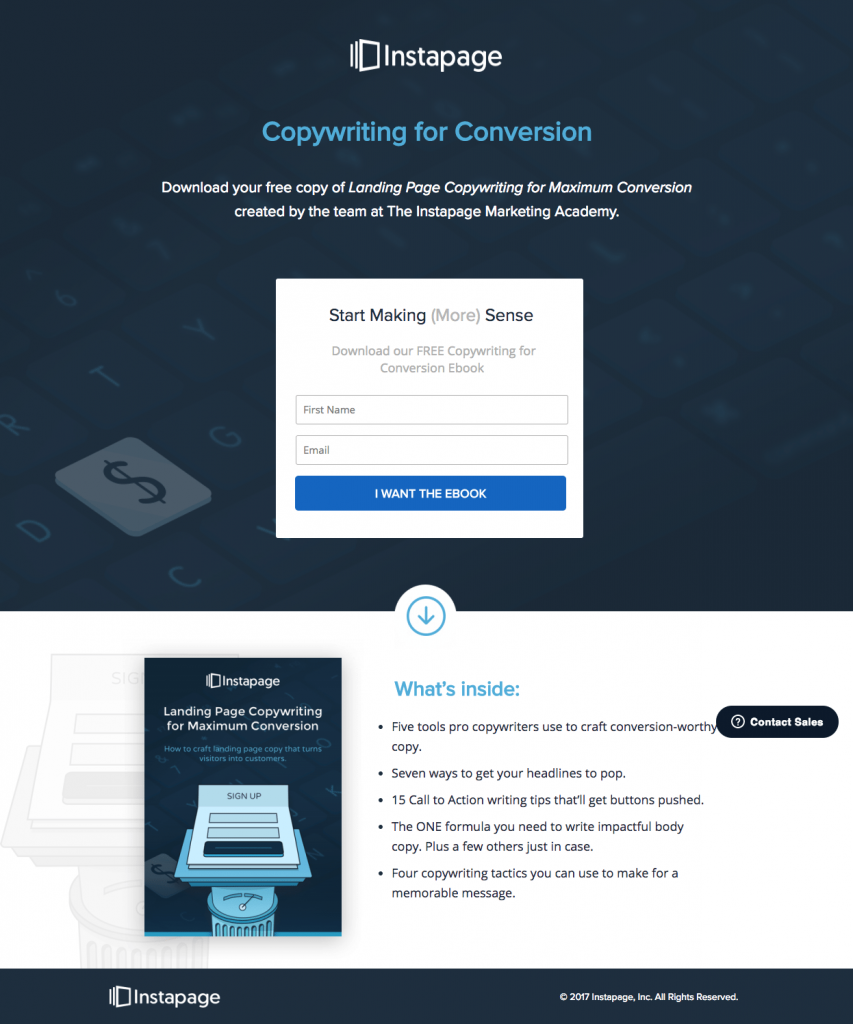
By telling customers how important conversion-worthy copy is for creating optimized landing pages and increasing conversions. The landing page sets the right precedent for when customers are ready to invest in a solution.
Use the awareness stage to inform customers about the consequences of the problem they’re facing. And how they can go about solving it.
Stage 2: Consideration and decision
In the first phase of the consideration and decision stage, the customer knows who you are and what solution you have to offer. However, they are still considering whether you are the right choice.
In this stage, the customer compares your solution to your competitors to find out which works best for them.
The primary touchpoints accessed at this stage are ads that directly promote the product your homepage, your product page and your pricing page.
Since you already have your customer’s email address from the awareness stage. You can use the channel to send them relevant emails that help them to get to know your product better and understand.
Uberflip can use Product webinars, case studies, tutorials and demo videos at this stage.
Uberflip uses email to inform clients of the consideration and decision stage about ‘The Content Experience’ conference that will assist customers write better content:
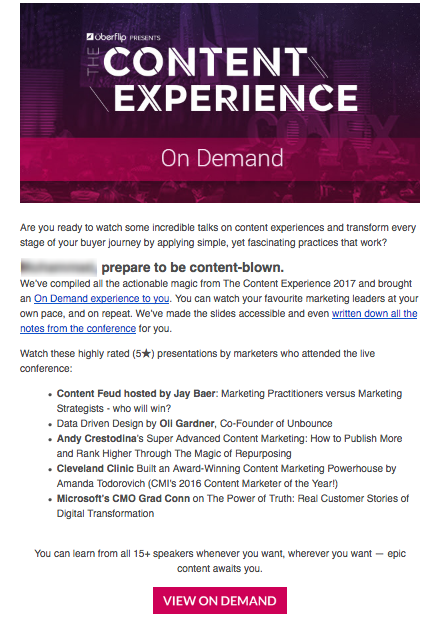
The email takes visitors to this landing page:
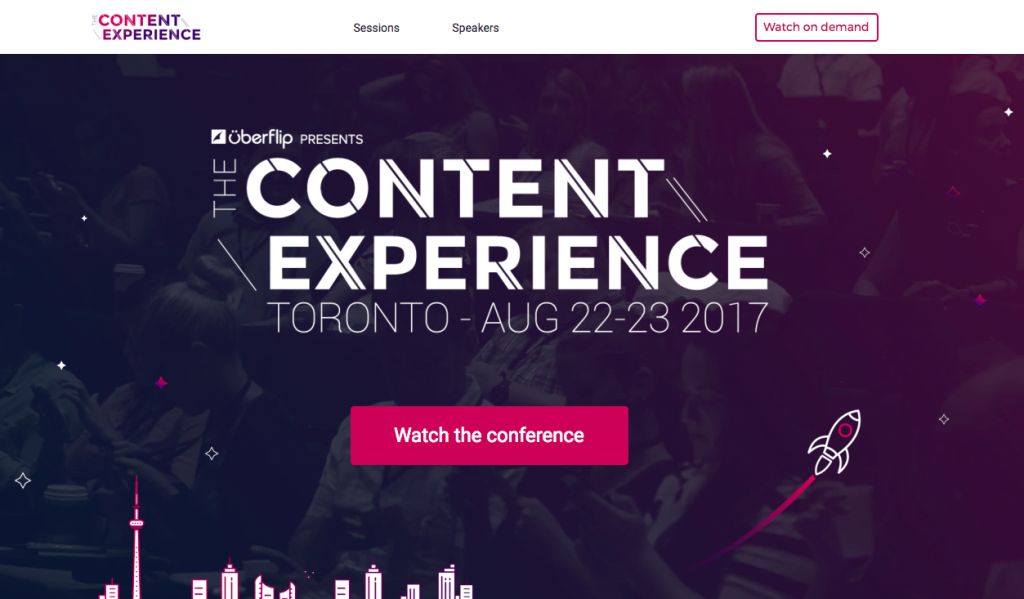
The offer lets customers know how well connected Uberflip is of the content marketing world and other MarTech companies which helps them differentiate them from their competition.
Free trial offers also work well at this stage. Because they offer customers a chance actually to see what your product can do.
Landing pages that promote free trials should talk about the unique features your product offers over the competition. They should also discuss the benefits customers are likely to get when they sign-up for your product.
Campaign monitor’s free trial landing page shows visitors a sneak peek of the product’s dashboard, showcases badges of prominent customers and features customer testimonials:
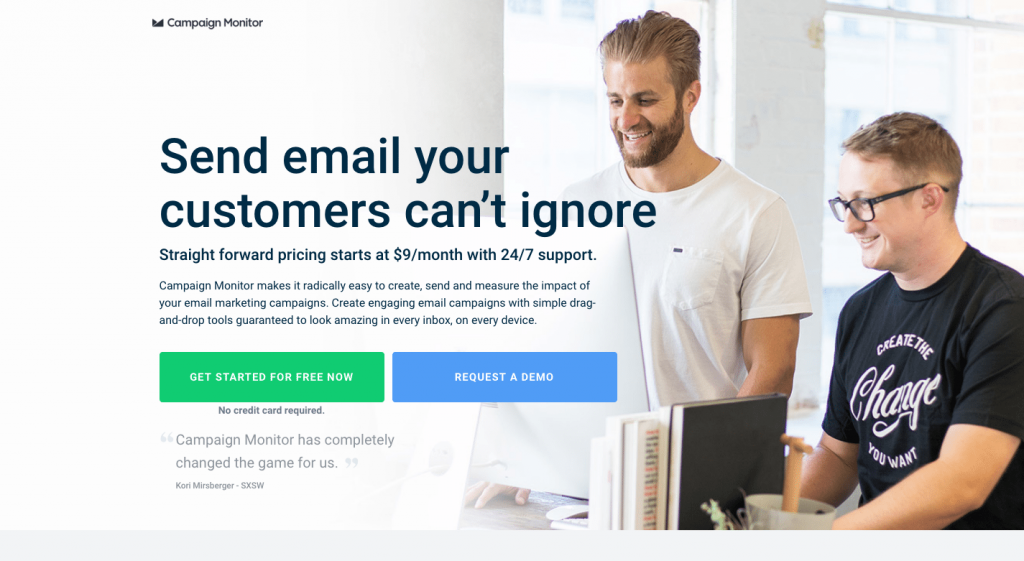
At the consideration and decision phase, you need to separate yourself from the competition. Make it clear to customers why you have the winning edge over the competition and why they should make a decision in your favor.
Stage 3: Conversion and retention
When customers reach the conversion and retention stage, they are almost ready to sign-up for your offer and convert.
What they need now is just a good nudge in the right direction. You can deliver this by providing them a free demo of the product or a private consultation.
Salesforce offers potential customers free demos to showcase why companies who use Salesforce increase their sales revenue, lead conversion and customer satisfaction:
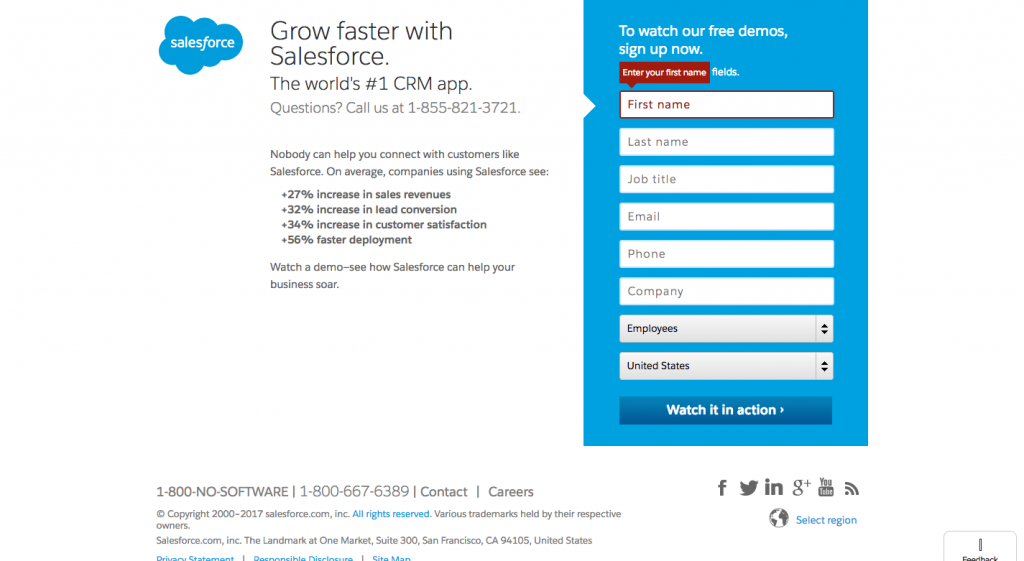
Once the customer passes through the conversion stage, the retention phase begins.
The retention stage unlike other steps in the client’s journey doesn’t have an endpoint. It is an on-going phase and lasts till the customer decides they no longer wish to remain your ‘customer.’
The primary touchpoints used in the retention stage are your support page, knowledge base, email, and blog.
Customer success plays a vital role in retention because it ensures that the customer succeeds in their journey. This involves user onboarding, maintaining a knowledge base, reducing churn rate and increasing revenue from upselling.
By effectively onboarding a customer you ensure that you guide your customers on how to properly use your product and solve the problem they intended to solve at the awareness stage.
You should respond to customer queries promptly at this stage. Let them know about the latest offers and promotions to make their experience with your product more worthwhile.
Instapage does this by keeping customers in the loop when a new feature releases:
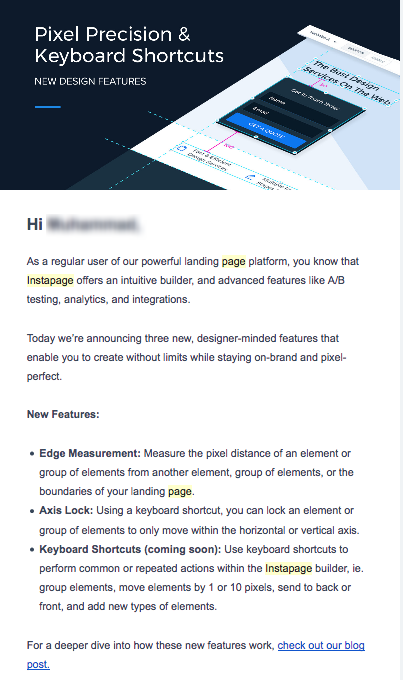
You can also use the retention phase of the journey to convince visitors to upgrade to a new pricing plan by letting them know all the features they’ll have access to.
You can use customer journey mapping tools such as Autopilot to map out the journey your customers are likely to take as they progress through the customer stages and get to know your product.
Solve the conversion puzzle with customer journey maps
Your customer is the most important piece of the conversion puzzle. Customer journey mapping allows you to put yourself in your customer’s shoes. This lets you visualize how they get to know your product. As they pass down from one phase of their journey to the next.
When you create meaningful experiences for your customers with the help of content and relevant landing pages. They are delighted and are motivated to move on to the next stage, and the loop keeps on going.
Landing pages are used to create meaningful experiences at every stage of the conversion journey. If you’re looking to build beautiful landing pages faster, sign up for an Instapage 14-day free trial today.
Try the world's most advanced landing page platform with a risk-free trial.
by Fahad Muhammad
Fahad is a Content Writer at Instapage specializing in advertising platforms, industry trends, optimization best practices, marketing psychology, and SEO. He has been writing about landing pages, advertising trends, and personalization for 11+ years.
Ready to turn more ad clicks into conversions?
Try the world's most advanced landing page platform today.
- Tech Talks (New!)
- What is SEO
- SEO Checklist
- Search Engines
- International SEO
- Google Algorithm Updates
- Google Ranking Factors
- Content SEO
- Link Building
- Social Media SEO
- Site Architecture
- Adwords Tips
- Paid Search Marketing
- Landing Pages
- Display Advertising
- Twitter Ads
- Facebook Ads
- Adwords Features
- Paid Social Media
- Remarketing/Retargeting
- Quality Score
- PPC Strategy
- PPC Management/Software/Tools
- Competitor Analysis – PPC
- Guide to Google Analytics
- SEO Analytics
- Local SEO Tips
- Local SEO for Small Business
- Accelerated Mobile Pages (AMP)
- Mobile Attribution
- Video Optimisation
Development
- search search
- News & Insights keyboard_arrow_down
Information
- Contact SEW
- Submit opinion
- Submit an article
- Advertise on SEW
- Content & Licensing
- Privacy Policy
- Cookie Policy
- Website Terms of Use
Guide: How to effectively incorporate customer journey mapping into your marketing strategy
A comprehensive customer journey mapping guide that helps you understand the role of digital transformation and customer experience in your company’s success.
30-second summary:
- A customer journey map is a visual representation of every interaction between you and your customers. Proper customer journey mapping can make a huge difference in conversions and help you create a more customer-centric marketing strategy.
- Customer journey mapping starts with identifying your user personas. This way, you’ll know exactly which customer segment to market.
- Next, you identify and map out every touchpoint or experience along the customer journey. This will help you learn and later predict customer behavior and buying decisions.
- Chief content writer, Connie Benton guides you through the customer journey mapping process outline with some great examples and tools to help you.
When it comes to building a robust marketing strategy, most beginner entrepreneurs have nothing to start off with except expert advice they find on digital marketing blogs, let alone the idea of customer journey mapping. While this alone will last you a long way, ultimately, you’re borrowing experiences from somebody else’s business, not building on your own. This is why large corporations spend so much on big data and analytics.
But it’s not just the corporations that do that. According to OnePath, 67% of SMEs spend over $10,000 a year on analytics . Why do they pay this huge price?
The answer is simple. You can only go this far using somebody else’s analytics. At some point, you should start gathering and interpreting data yourself. Without this, you can’t possibly expect to understand your thousands of clients.
If you’re looking for a point where you can start, you can postpone getting into behavioral segmentation and other advanced analytics, and follow a strategy that can yield great results on a shoestring budget . Create a customer journey map. Here’s all the information and tools you’ll need to create one.
How to create a customer journey map
A customer journey map (CJM) is exactly what it sounds to be. A map of the path that a customer makes from their decision to make a purchase or any other action, to successfully making it. Here’s an example of what it looks like from the NNGroup.
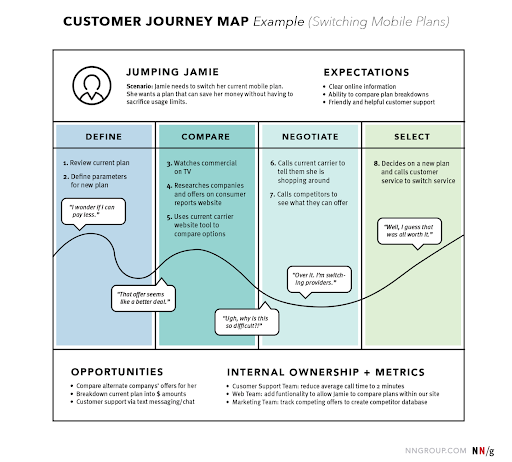
Source: NNGroup
You can create a customer journey map for most processes that involve customer decisions and use this map for different purposes. A detailed map of going from the latest stage of the sales funnel to making a purchase can be used to improve conversions. A map of making purchases after the initial conversion will help you increase customers’ lifetime value.
For now, we’ll concentrate on the basics and look at how to create a general customer journey map that covers a customer’s path from being interested in your product to making a purchase. It will help you improve your overall marketing strategy.
The first thing you’ll need to do is to set the frame of the customer map, where it should start and where it should end. Since we’re making a general map that covers the whole funnel, let’s set the start at being interested in the market, and the end at making the first purchase.
The most important thing, though, is to find the right path to trace. Most businesses have different types of clients that have different journeys. Let’s start by defining your user personas.
Analytics The 2023 B2B Superpowers Index
Analytics data analytics in marketing, digital marketing the third-party data deprecation playbook, digital marketing utilizing email to stop fraud-ecommerce client fraud case study, 1. define user personas.
Needless to say that a user looking for online shopping websites will differ from someone in search of the best online business ideas . That’s why defining user personas is so important for successful customer journey mapping.
Before you trace the customer’s journey, you need to have an idea of who’s making that journey. To do this, you need to know at least these four core data sets about your customer:
- Demographic information (for example, age, gender, country)
- What problems do they solve with your product
- What do they value from the product
- Where do they get information
With these points, you’ll be able to learn more about the customers themselves and their journey. Here’s how you can gather this information.
Tools to use
- Sign-up forms
- Google Analytics
- Facebook Analytics
- Pop-up surveys (Hotjar or similar)
- Email surveys (MailChimp or similar)
You can easily gather the most basic demographic information on your leads with the sign-up form. When they’re registering on the website or grabbing a freebie, ask them to fill a bit more than their email address, and you already have a decent database. While you’re at it, you can also gather employment information, which is extremely helpful if you run a B2B company.
If that’s not an option, gather that data with Google or Facebook analytical tools. You can also get an insight into what your users are interested in by looking up Affinity Categories in Google Analytics.
Most likely, you have not one but several main demographics. Look for the largest age and sex groups and run Affinity Category reports on them. You may find that say, men and women in their 30s that buy from you have different interests on average.
The answers to why people buy from you and what do they value the most can only be inferred from user surveys. Do it via pop-ups or send surveys to your newsletter subscribers.
That said, these are just the basic tools that will cover most needs. Feel free to use any advanced analytics tools at your disposal.
2. Identify touchpoints
Once you know who your customer is, it’s time to begin tracing their path towards the purchase. You’ll need to track the touchpoints they have with your brand as they go through every step of the sales funnel.
Asking them how they ended up on your website may not be the perfect idea as a lot of touchpoints will be forgotten before the purchase. Here’s how you can do it more efficiently.
- Lead scoring software (HubSpot or similar)
Let’s start by looking at the off-website touchpoints. These are the touchpoints that lead a customer to your website: social media, ads, blog articles in Google search, and other similar online portals. You can gauge these easily by looking at where the traffic comes from in the Google Analytics panel.
Don’t forget to add UTM markers to different links you leave around the web to make sure you’re getting the full picture.
You can also get an approximate picture by including a question like “How did you find us” in your sign-up forms. However, this only shows the bottom of the funnel, and won’t provide the full picture.
The idea behind it is to award more points to actions that lead to conversion. You can use this system to first track what actions do lead to a conversion.
This way, you’ll know what set of actions a potential buyer performs on the website. The other method to learn is to use the ‘Reverse Goal Path’ in Google Analytics.
This tab lets you take a goal from your campaign and see what actions did a person who ended up converting did on the website. This shows you the majority of the on-site customer journey.
3. Draw the map
Now you know who your customers are and what set of actions do they perform before making a purchase. All you have left to do is to actually draw the customer journey map.
You can do it whatever way you want, just make sure it will always be handy for future use.
- Drawing tool of choice: A piece of paper, an online mindmap, Photoshop, or any such platform that you’re comfortable using
Start with defining the user persona for the map you’re drawing. Since different user personas may have different journeys, you may need to draw several maps.
For now, let’s assume your customer is a 25 to 35-year-old male or female who owns an online store and is looking for SaaS software to help run it. Let’s call them Jessie since it’s a good gender-neutral name.
Start with what drives Jessie to make the purchase. Point out their motivation in this search. Then, track their behavior off-site. Maybe they search for the product reviews online or see several ads before they finally click on one of them.
Follow their path on your website based on the data you received from website analytics, and end the journey on their first purchase. Make sure to state how many users leave at a certain touchpoint and do not covert further.
In the end, you’ll have something like this.
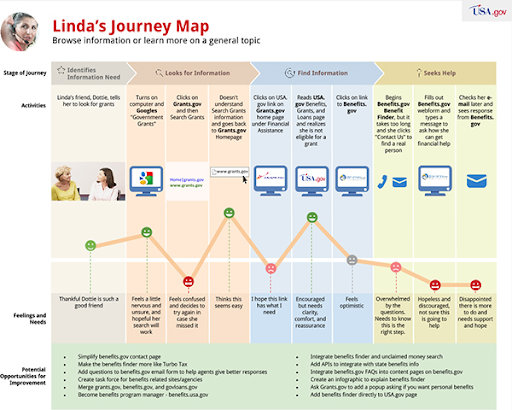
Source: Digital.gov

How to improve marketing strategy with CJM
There you have it, you’ve successfully created your first customer journey map. Now, let’s dig into how you can use it to improve your marketing efforts.
1. Search for insights
No customer journey map is complete without the insights, or potential opportunities for improvement, as noted in the map above. Gather your team if you haven’t already, and brainstorm the opportunities for improvement that you can infer from the map.
There’s no single way to go about it and it all depends on the situation you have on the map. For instance, if you see that a particular touchpoint has a conversion rate far below the rest, it’s probably something you should address.
Do more research on it, come up with a hypothesis as to why it underperforms, and try to improve it.
2. Improve messaging
Your customer’s motivation to make a purchase is a huge factor in how they decide what company to stick with. If you find that what your customers are looking for is not what you advertise, it’s a clear sign you should improve it.
3. Focus tangential interests
If you’re doing content marketing, your findings from the ‘Affinity Categories’ could be of good use. Some users can discover your product while reading articles on topics connected to it. For instance, Jessie’s journey to discovering a SaaS tool they need may have begun from reading an article on SMM.
Look up the data on affinity categories, and you can add a few more topics to your content marketing arsenal.
4. Focus on high-converting channels
While we’re on the topic of content marketing, customer journey mapping also allows for figuring out what marketing channels work best. Look at what channels are the most prevalent in the first half of the customer journey and figure out why they work best.
From then on, you have two options. You can either try to fix the channels that do not bring you enough customers or double down on the ones that already bring you the best ROI.
5. Improve on-site conversion
CJM provides some of the best analytics on the on-site actions of your customers. This gives you an opportunity to see what exactly are your customers doing on the website before they convert and improve the whole process.
This goes far beyond just improving the touchpoints you have. You can also change your on-site conversion strategy and add new touchpoints.
For instance, you may notice that people who grab freebies or attend webinars convert much more than regular visitors. You may start including these converting assets in pop-ups, or on the bottom of your blog posts.
If the issue is that your sales reps can’t keep up with the number of customers, you may need a sales funnel software to automate some of the tasks and work with bigger loads.
Improve every business aspect with customer journey mapping
A customer journey map is a tool that helps you visualize so much data about your customers and their path to conversion. Create a map that reflects how customers really do, not what you think they’re doing, and you can see all the mistakes your business does in attracting them further to conversion. Gather the data continuously and update the map to see how customer behavior changes, especially during unusual situations like a pandemic .
But it doesn’t stop there. You can improve most business processes that involve customers taking a set of actions towards a goal with a customer journey map. All you have to do is to set another frame and go through every process in this guide again.
This way, you can improve anything from increasing viewership on your blog to reducing customer churn.
Connie Benton is a chief content writer, guest contributor, and enthusiastic blogger who helps B2B companies reach their audiences more effectively. You can find her on Twitter at @ConnieB34412379 .
More about:
Get the Latest daily news and insights about search engine marketing, SEO and paid search.
The Merkle B2B 2023 Superpowers Index outlines what drives competitive advantage within the business culture and subcultures that are critical to success. It is the indispensable guide for B2B marketers to deliver world-class experiences and keep pace with the dynamic environment. Download Now
The ClicData survey found that various challenges exist that prevent organizations from achieving such gains. These challenges included inaccessible data formats and limited flexibility in displaying data in dashboards. Download Now
The need for fraud prevention in the digital world is critical now more than ever. Why? Thinking about your own behavior, consider how you complete transactions and how this has changed over the last 5 years. Download Now
The 2023 B2B Superpowers Index
Data analytics in marketing, the third-party data deprecation playbook, utilizing email to stop fraud-ecommerce client fraud case study, related articles, fospha’s insights to unlock ecommerce growth in 2024, is user data truly protected in the google analytics universe, how to use seo for a great abm strategy, using seo data analytics to identify business gaps, seven first-party data capturing opportunities your business is missing out..., four ways to use your website data to discover missed sales opportunities, cross-channel and cookieless: how measurement will evolve in 2021, what affiliate marketers have missed about google analytics, subscribe to the latest news & insights.
Learn / Guides / Marketing funnel guide
Back to guides
How to optimize your marketing funnel for the customer journey
Ask 10 marketers about marketing funnels and you’ll probably get 10 different answers. Why is that? A marketing funnel isn't a one-size-fits-all strategy; your marketing funnel is uniquely tailored to how your buyer buys.
Last updated
Reading time.
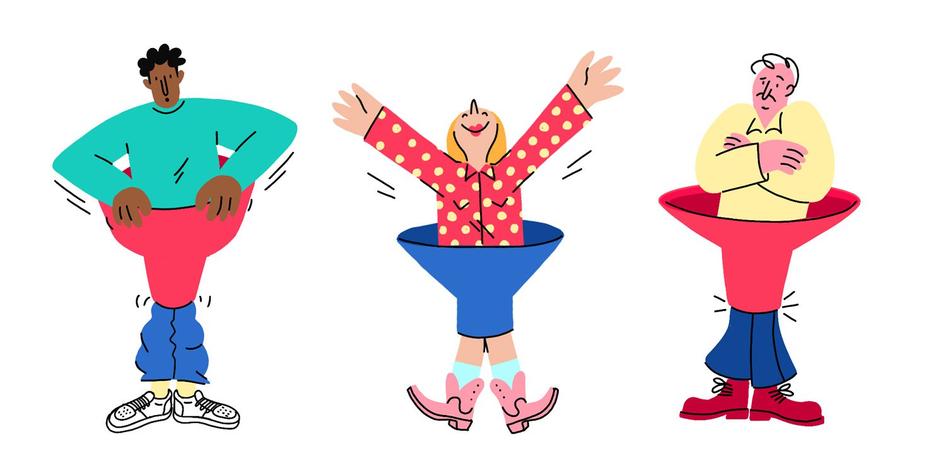
This works well if you know the habits of your target audience . Your marketing funnel provides more value to your marketing strategy when you understand your customers —then you can make informed decisions to improve the customer experience as they move through the funnel.
Our goal with this piece is to help you get the most out of your marketing funnel. We cover:
What is a marketing funnel?
3 stages of the marketing funnel.
How to measure the success of your marketing funnel
4 tools to increase conversion rates throughout the funnel
TL;DR: every marketing funnel is unique and should be designed for how customers buy—not how you want to sell. Combining quantitative and qualitative data will help you understand how real customers shop and behave on your site, so you can optimize your marketing funnel for the customer journey and increase conversions.
A marketing funnel is a series of stages to guide prospects through the customer journey. The funnel helps marketing teams plan and measure efforts to attract, engage, and convert prospects through content and other marketing materials, like landing pages and ads.
Marketing funnels are commonly based on the ‘AIDA’ model:
But you can simplify the funnel into a three-stage model:
Top of the funnel (TOFU): awareness stage
Middle of the funnel (MOFU): consideration stage
Bottom of the funnel (BOFU): conversion stage
Note: you can rename or add stages like ‘loyalty’ and ‘advocacy’ to any funnel model, but the function of the marketing funnel—to attract, engage, and convert leads—remains the same regardless of how you identify specific stages.
For the rest of this article we'll look at the TOFU/MOFU/BOFU funnel model.
💡 Keep in mind: sometimes marketing funnels and conversion funnels are thought of as interchangeable, but it’s important to understand the subtle differences between them.
Marketing funnels generate leads: they attract prospects at the top of the funnel, and help marketers measure and track efforts to engage and convert prospects in the middle and bottom of the funnel.
Conversion funnels generate sales: they capture the customer journey from awareness to conversion, which could mean buying a product, completing a form, signing up to a list, or another type of micro-conversion .
👉 Read more: learn how to optimize your ecommerce conversion funnel for the nonlinear customer journey.
🔍 Learn what works (and what doesn't) at each stage of the funnel
Use Hotjar Funnels, Heatmaps, Recordings, and Surveys to optimize your marketing funnel for the customer journey—and increase conversions.
What is the difference between the marketing and sales funnel?
Just like the marketing and conversions funnels share similarities, the marketing and sales funnels are closely related in that they describe the process of turning prospects (potential customers) into actual customers, by taking them from the awareness stage (top of funnel) to the conversion stage (bottom of funnel).
The primary difference between the two consists in the way the conversion stage is defined. Generally, a site visitor who has signed up to your product or service, or a free trial, has reached the end of the marketing funnel. The sales funnel, however, is more specifically designed to turn leads into paying customers. As such, one objective of marketing funnels is to turn Marketing Qualified Leads (MQLs) into Sales Qualified Leads (SQLs).
Marketing funnels are also broader in scope, especially if you break down the bottom of the funnel into different stages.
If you go beyond the conversion or purchase stage, the marketing funnel also includes a loyalty stage that consists of turning one-time customers into repeat customers. This step usually entails marketing tactics like loyalty programs and other forms of continued relationship. Finally, the very last of the marketing funnel stages is about making those loyal customers into advocates of your brand.
The traditional funnel model is linear, beginning at the top of the funnel and ending at the bottom, where your prospects convert.
The challenge is that marketing funnels don’t always work like this in the real world. People don’t always jump into a funnel right at the top and progress step-by-step through each stage until they come out the bottom, a new customer .
Many people bounce in, out of, and around the funnel before they convert. Or, they may make it to the bottom of the funnel and then ( gasp! ) drop out, never to be seen or heard from again.
The marketing funnel—like people's real-life buying behavior—is nonlinear, which is why it's important to understand the customer journey from the moment of awareness to the moment of conversion. And part of that is understanding how each stage works in the traditional marketing funnel model.
1. Top of the funnel: awareness
The top of the funnel (TOFU) is where prospects become aware of your brand and engage with it for the first time. They might not know a lot about your product or service yet, so this stage focuses on content and marketing material that promotes brand awareness.
Use this lead generation stage to attract prospects, and show them what you have to offer:
Include content pieces that educate potential customers about concepts related to your product or service in your content marketing and SEO strategy
Create a landing page or infographic that introduces your brand, service, or product to new visitors.
Share a post on social media that highlights your unique selling proposition (USP) .
Use paid ads on social media and in podcasts that are relevant to your target audience.
2. Middle of the funnel: consideration
Potential customers enter the middle of the funnel (MOFU) once they’ve engaged with your brand in a meaningful way: maybe they’ve subscribed to an email list, are following you on social media, or have signed up for a webinar.
Use this stage to engage with prospects—to earn their trust and set your brand apart:
Write an article or white paper that provides value, answers a question, and solves a problem for your potential customers.
Invite visitors to participate in a survey to learn more about the drivers, hooks, and barriers they encounter with your brand.
Share case studies and product comparisons.
Create landing pages specific to individual customer segments .
💪 Pro tip: surveying potential customers is an opportunity to learn how real people shop and behave on your site. Ask open-ended questions like
Where did you hear about us?
What are you hoping to find on our site today?
What persuaded you to [take a specific action]?
What are your concerns or questions about [our product or service]?
👉 Read more: nobody knows more about what your customers want than your customers themselves—here are 15 more website survey questions to ask.
3. Bottom of the funnel: conversion
The bottom of the funnel (BOFU) is the last place prospective customers go before they convert. You’ve gotten their attention, built trust, and fostered a relationship with them.
Use this stage to convert prospects—give them specific reasons to choose your brand over your competitors:
Offer a trial or demo so visitors can experience your product or service first-hand.
Write a how-to guide or article that answers questions and eliminates any doubt or blockers potential customers may experience.
Share social proof, like customer reviews and testimonies, to build even more trust.
Make feature and price comparison charts easy to access and understand.
Send segmented email marketing campaigns and use on-site surveys—for example, send an email to users that have abandoned their shopping cart, or put an exit survey on the checkout page.
💡 Keep in mind: every customer experiences your marketing funnel differently. You might create content for the top of the funnel, but that doesn’t necessarily mean that customers can only access it at that stage. For example, someone might jump directly to the middle or bottom of the funnel because they’re already aware of their problem and your solution, and are ready to purchase.
👉 Read more: create a unique marketing funnel tailored to how your buyer wants to buy—not how you want to sell. Learn how psychographics and personas can help you get to the truth about why and how people buy.
Measuring the success of your marketing funnel
Understanding your customers requires observing and communicating with them —not just looking at numbers on a chart and making assumptions. To measure your marketing funnel's success, you need both quantitative and qualitative data (more on this later).
That said, there are still some key quantitative metrics to keep in mind when you measure your marketing funnel's success and effectiveness.
4 marketing funnel metrics you should measure
1. cost per acquisition (cpa).
CPA measures how much you’re spending on marketing to acquire each new customer. Teams usually look at this number to analyze their paid advertising, email marketing , social media, and other paid marketing efforts.
To get this number, divide the entire cost of your marketing campaign by the number of conversions. From there, the idea is pretty simple: if the cost outweighs the gain, you might want to consider ending the campaign or testing alternatives.
2. Customer lifetime value (LTV)
LTV (or CLV ) measures the continuous value a customer brings to your company. This metric is all about customer retention , which carries particular weight for SaaS (software as a service) companies because subscribers pay regularly. However, LTV also gives insight to industries like ecommerce and traditional sales—if you can predict the likelihood of a customer making another purchase.
💡 Keep in mind: CPA and LTV are affected by factors like marketing and company costs and how you price your product or service. It's hard to know how much prospective customers are willing to pay, especially if you're a SaaS startup. Market research alone won't tell you how much to charge—you have to test prices and listen to your customers.
👉 Read more: learn which factors to consider when pricing your SaaS product .
3. Conversion rates
Conversion rate measures the frequency of conversions. Some marketers only focus on the final conversion: sales—but you can measure each stage's success through micro-conversions or goal conversions . For example:
TOFU conversion: how many visitors convert to marketing qualified leads (MQLs)
MOFU conversion: how many MQLs convert to sign-ups or subscribers
BOFU conversion: how many sign-ups or subscribers convert to customers
Measuring goal conversion rate allows your team to make more informed decisions about each funnel stage rather than just the final outcome.
Pro tip: Hotjar Funnels help you understand where and why your users drop off.
Define the key stages of your users’ conversion path and visualize where they abandon your site.
Once you’ve identified conversion gaps, take action to improve conversion rates by watching session recordings of users who left without proceeding to the next stage.
4. Conversion rate per channel
Each marketing channel has different goals, so it’s important to analyze the success of each one. These channels might include
Organic search
Paid ads (Display, SEM, Social, Podcasts)
Referrals and influencers
Like with goal conversions, teams with clear definitions for conversions in each channel will have an easier time measuring success. Ask yourself:
Is clicking on a paid ad a conversion?
Is responding to an email a conversion?
Is signing up for a newsletter a conversion?
Answering questions like these will help you identify what you want from each channel, so you can measure whether it’s working or not.
💡 Keep in mind: traditional analytics tools like Google Analytics work well for tracking and measuring quantitative metrics like traffic, exits and bounces, cost per acquisition, and goal conversions.
But to measure the success of your marketing funnel, you need to understand how people are using your website (beyond traffic and conversions) and why they behave a certain way while they browse or shop. Then, you can optimize your marketing funnel to increase conversions at each stage of the customer journey .
👉 Read more: learn how to combine the powers of Google Analytics and Hotjar to get the full picture of user behavior on your site with our GA integration .
4 tools to increase conversions throughout the funnel
Now you know: when you focus on measuring quantitative data (i.e. numerical data) without considering qualitative data (i.e. how people experience your marketing funnel and how they think or feel throughout their customer journey), you’re missing an important part of the picture.
Here are four tools to bring quantitative and qualitative data together, in one place, and help you increase conversions throughout the marketing funnel:
Funnels: to identify where users are dropping off
Heatmaps: to understand user behavior
Session recordings: to understand individual journeys
Surveys: to get user feedback
1. Identify where (and why) users are dropping off
Funnels show you exactly where users drop off rather than proceed to the next step. They calculate the conversion rate at each step and let you watch session replays of users who didn’t convert, combining quantitative and qualitative data.
Conduct funnel analysis to increase conversion rates throughout your entire marketing funnel.
🔥 A funnel example for the entire marketing funnel: compare conversion rates across traffic channels to measure the effectiveness of your marketing campaigns.
For instance, you want to know which of the traffic to a landing page converts better between two different paid ads campaigns, or which of two affiliates brings in the highest-converting traffic. Or you need to track the performance of the control and the variant when running an A/B test .
Use the “compare with” filter in Funnels to weigh up different variations of your marketing funnel to identify where to focus your optimization efforts.
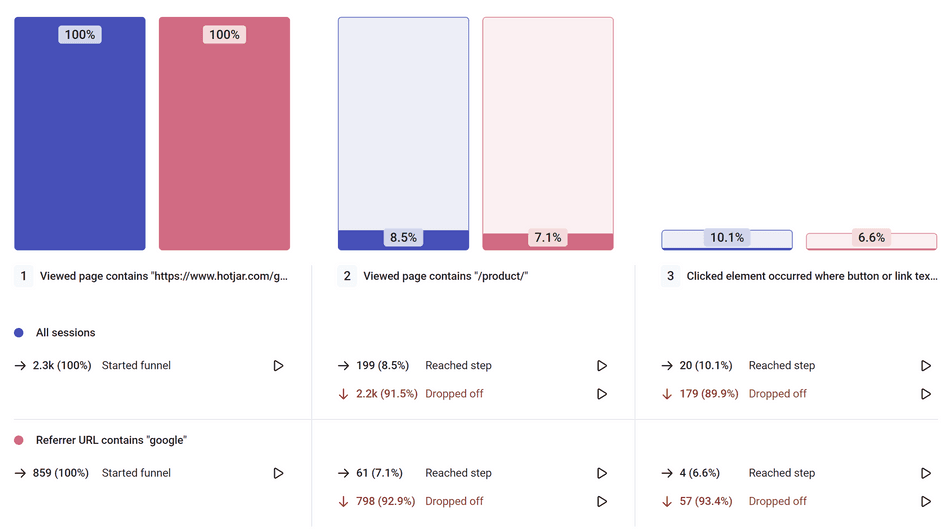
2. Understand user behavior with heatmaps
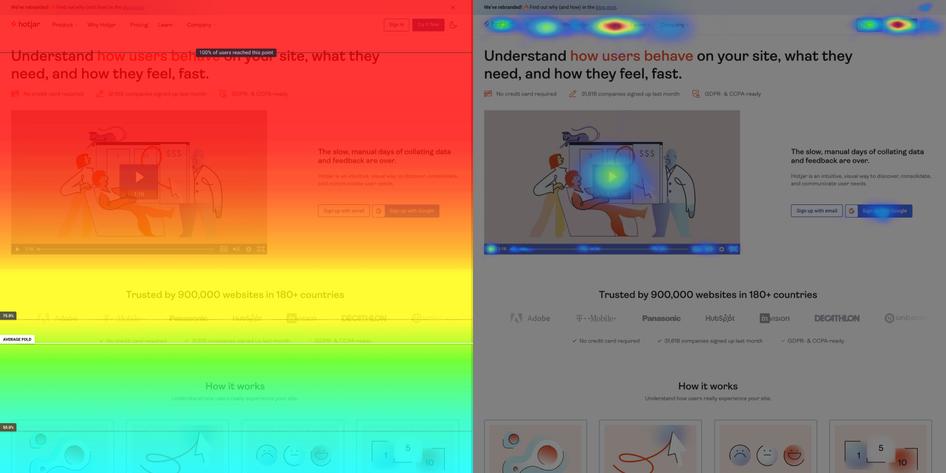
Heatmaps show popular (red) and unpopular (blue) areas and elements on your page, and reveal how people move on and interact with your site in aggregate. Analyze website heatmaps to identify page elements that are (or aren't) working to get people moving through your funnel.
Once you have insight into how users are behaving on key pages of your site, you can focus on making changes that will have the most impact to increase conversions—and either ditch the efforts with less rewarding outcomes, or A/B test alternatives.
🔥 A heatmap example for the top of the funnel (TOFU): look at heatmaps on pages that are a part of your TOFU strategy, like blog and landing pages.
Let's say you want visitors to click on a call to action (CTA) you've placed at the bottom of a landing page. A scroll heatmap might show that only 20% of your visitors are making it to the bottom of the page—which means 80% of them aren't even seeing your CTA. In that case, you could try moving the CTA (or adding another CTA) to the middle or top of the page.
After you've optimized the page, look at heatmaps again to learn whether the change impacted your conversions.
💪 Pro tip: use Engagement zones to understand with which elements of a page users most interact with.
This combination of click, move, and scroll heatmaps data overlays a grid on top of your page so you can analyze how users engage with your page, at a glance.
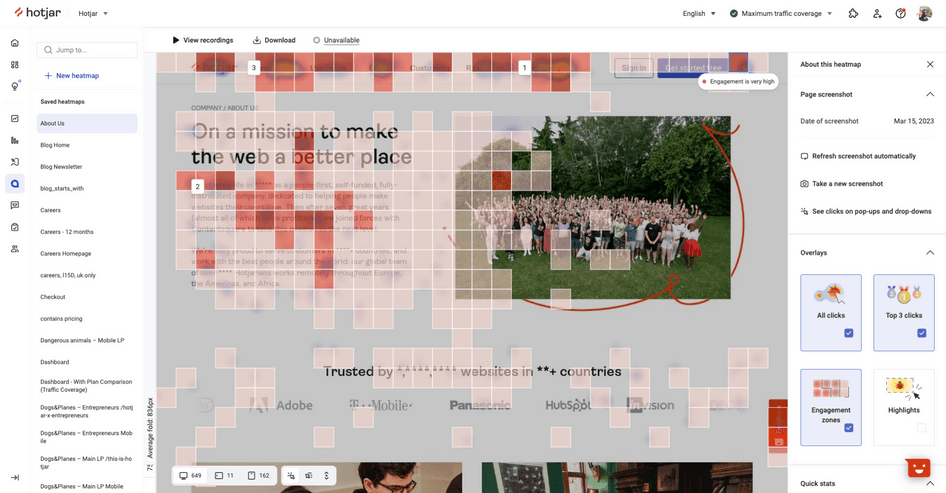
3. Understand individual user journeys with session recordings
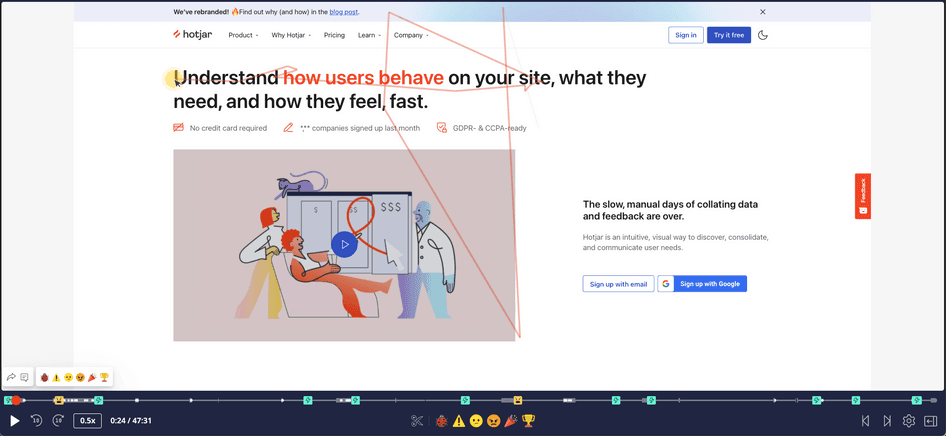
Session recordings capture website visitors' actions—like mouse movements, clicks, taps, and scrolling—so you can see how real users engage with your website from page to page.
Insight from recordings helps you identify blockers or pain points users experience throughout their journey on your site—like broken elements, website bugs , or a confusing design—which might reveal why users drop off at a particular stage of the funnel.
🔥 A session recording example for the middle of the funnel (MOFU): use session recordings segments and filters to find recordings of pages that are a part of your MOFU strategy, like category and product pages, guides and how-tos, case studies, and comparisons.
Let’s say you want users to add a product to their shopping cart from your product comparison page, but the page has a high exit rate and hardly any conversions. A session recording reveals that users are rage clicking on a non-clickable element and are exiting out of frustration. In that case, you could try removing the element, or making it clickable so the page is more intuitive to how real people interact with it.
After you've fixed the page, watch session recordings again to see whether the change improved the user experience (UX).
💪 Pro tip: filter session recordings by Frustration Score to watch users who had a frustrating user experience to spot improvement opportunities.
Note: Hotjar integrates with Google Optimize and Optimizely ; you can also filter your Recordings by Optimize experiments to test variants and measure results.
4. Get feedback from real users with on-site surveys

On-site surveys are one of the fastest and easiest ways to get direct feedback from real website visitors: find out what’s stopping them from converting, or poll customers who’ve just converted to find out what does work .
Surveys give you a chance to engage with real visitors at each step in the funnel so you can learn how to improve the customer journey and increase conversions .
🔥 An on-site survey example for the bottom of the funnel (BOFU): use on-site surveys on pages that are a part of your BOFU strategy, like how-to or demo pages, category and product pages, and shopping cart or checkout pages.
NPS surveys and post-purchase surveys help measure customer satisfaction so you can learn from customers who've already converted.
Let's say a customer has just purchased on your site. Before they exit, you can ask them to rate their experience on a scale, and follow up with another open-ended question depending on the rating. For example, a high score might lead to a question like, “what did you love most about the experience?” and a low score might lead to “how can we improve your experience in the future?”
Note: you can also invite visitors to participate in an external link survey , giving you the chance to ask more detailed, thoughtful questions to get even more insight from your visitors.
Takeaways and next steps
Marketing funnels help you guide prospects through each stage of the customer journey. There are many ways to approach the traditional marketing funnel, but the key to an effective funnel is understanding your customers.
Combining quantitative and qualitative insights using the tools and tips we cover above will help you build a better funnel that speaks to your customers' unique needs, and increase conversions as a result.
Customer Journey
The customer journey consists of actions your customers take before and after they make a purchase. It should be part of your overall marketing strategy to improve lead generation and enable more effective marketing. By understanding the different actions your customers take before and after a conversion, you can start brainstorming new marketing tactics to improve the customer experience and keep them coming back for more.

Turn clustomers into customers with personalization
Discover ways to personalize messaging using Mailchimp segmentation and automation for customer differentiation and growth.
Think of a customer journey as a detailed map that shows the full experience a customer has with your business. It lets you see every interaction they have with your company, even before and after they engage. By first understanding the customer journey , it will be easier to define your goals and use our automation tool to create the overall marketing experience you want to provide.
What is a customer journey?
A customer journey outlines the different steps your customers take to become customers. Without the customer journey, your marketing funnel couldn’t exist. A marketing funnel helps you market your products and services to customers based on where they are in their customer journey. For example, someone researching products is at the top of the marketing funnel or at the very beginning stages of their journey.
Ultimately, a customer journey map tells a story about how customers interact with your brand, including how they first discovered your business to whether or not they’ll make a repeat purchase. The journey lays out different interactions someone could have with your brand, although not every customer needs to use all those touch points before converting.
While not all customer journeys are the same, you can use your website and marketing efforts to easily guide customers through the journey by taking them through different touchpoints.
What are the phases of a customer journey?
Knowing the customer journey definition is only the beginning; now you must learn the different stages involved. A customer journey is made up of phases , which are the distinct stages a customer passes through as they’re guided to take specific actions. The phases you include will depend on your business goals.
Do you want a user to adopt a new app you’ve released? Are you looking to get inactive newsletter subscribers to read your emails? Is your aim to turn occasional shoppers into regular, loyal customers? All these marketing paths require a strategy for getting your customers from point A to point B.

Most customer journeys will usually account for these phases:
This is how someone discovers your company, usually through a search engine or your paid advertising efforts. Let’s say your new future customer sees an ad for your latest line of ‘I Have the World’s Okayest Cat’ mugs, and they click through to your website to learn more about the brand and product. Now your business is stored in their memory.
Acquisition
Congrats! You can now call that new future customer an actual customer, because they loved the ‘I Have the World’s Okayest Cat’ mugs you released so much that they bought one. Not only that, they also signed up for your email list through a form on your site so they can be the first to learn about any new merchandise.
Now that you’ve acquired a new customer, you can send them a series of emails to make them feel welcome, showcase other stuff in your store they might be interested in, and help them understand when and how they might expect to hear from you in the future.
This refers to how you can get customers to regularly use your product or service, shop at your store, or read your content. Consider using email, social media, in-product messages, and personalization to make your customers’ experience more enjoyable.
Make your customers so happy that they’ll recommend your brand to others. This is probably one of the best ways to get new customers.
Once you’ve established the phases of a customer journey, you can plan the touchpoints you’ll use to connect with customers at the right moments.
Advantages of a customer journey map
Customer journey maps are useful marketing tools that can help you better understand your target audience and use that information to lead them down a path to conversion. All businesses can benefit from having a customer journey map, so whether you’re doing B2B marketing or building an e-commerce brand, it’s good to know how customers interact with your company.

A few other advantages of a customer journey map include:
- Understand consumer behavior . Understanding how users interact with your brand can help you comprehend their motivations.
- Identify touchpoints . Identifying the different interactions customers have with your brand before making a purchase can help you create more effective marketing campaigns.
- Support your marketing efforts . Learning as much as you can about your customers can improve marketing performance by allowing you to shorten the customer journey and increase conversions.
- Improve the customer experience . With customer data, you can improve customers' experiences with your brand, making them more likely to convert.
- Predict how customers will behave . Customer journey maps help you predict what customers will do next, allowing you to market to them no matter where they are in the funnel.
- Boost customer loyalty and engagement . By creating a path for your customers and providing great experiences, you can keep customers coming back for more. This makes customer journey mapping an essential customer retention strategy .
How to build a customer journey map
Building a customer journey map is easy, and it’s an effective way to learn more about your customers.
To build your own customer journey map, follow the steps below.
- Determine your business goals . You’ll need to determine your goals before establishing the touchpoints for your customer journey map. Goals can include converting more qualified leads into customers, increasing brand awareness, and so on.
- Understand your customers . Gather data on your customers to learn about their behavior and uncover new ways to market to them.
- List opportunities for communication . Consider all the different ways you can communicate with customers, including social media and email marketing.
- Test your customer journey . Pretend you’re the customer and test your journey to see how you can make it easy for customers to convert after their initial touchpoint with your business.
- Refine customer journey map if necessary . Refine your customer journey map when there are changes to your business. Breaking down the map into stages can help you meet your customers’ needs no matter where they are in their journeys.
How does marketing automation benefit the customer journey?
Marketing automation uses technologies that eliminate the need for you to send one-off emails or set up other marketing efforts every time you need to connect with customers. Basically, you set up an automation to execute your strategy the way you want, and it’ll do the marketing work for you.
Since automations are usually powered by if-then logic, they adapt to match the individual paths your customers take.
For example, before making a purchase people might read your website, consider what product they want, sleep on it, and eventually go back to buy. This wandering route is different for everyone. With automation, you can automatically send an email during the consideration stage of their journey, reminding them of the products they were interested in and encouraging them to finalize the purchase.

Here are a few ways automation can help you build lasting relationships by connecting with customers at each step of their journey with your business.
Connect with new fans
When someone expresses interest in what you have to offer and enters their email address in a subscriber pop-up form on your site, you can send them a welcome email to introduce yourself—and give them a reason to stick around. You can also provide information about how often they’ll receive marketing correspondence from your business.
Sell more stuff
When that contact starts to move toward a purchase, such as putting something in their cart without checking out, you can set it up so they receive an abandoned cart email from you.
Meanwhile, you can send occasional reminders to prospects that haven't interacted with you in a while. Retargeting ads and emails, for example, remind people about the great stuff they saw on your site. Chances are, at least some of them are still interested and will take action if you reach out.
Cultivates a trusting 2-way relationship
When you deliver relevant content to your customers , you show them that you care about them. The more you target your communications, the more they will trust you to keep providing high-quality products or services . You can even use automation to send coupons or other discounts to people that meet certain criteria for loyalty or spending.

Increase open and click rates
Build automated workflows to send relevant messages based on how your customers interact with your brand.
What is a Customer Journey in Mailchimp?
In Mailchimp, a Customer Journey is a marketing automation tool that lets you visually map dynamic, automated marketing paths for your customers. Depending on the phases you want customers to pass through—discovery, acquisition, retention, etc.—you can choose the starting points and other unique interactions to engage your customers every step of the way.
Any marketing or purchasing paths that you want to use your data to create can be mapped out with the Customer Journey Builder, which allows you to target specific users and focus on what will get them to move from one point to another.
To illustrate this, let's take a look at the welcome journey that people will enter when they sign up to receive your marketing. You’re probably familiar with welcome emails and have heard us talk about their value a bunch. The concept of a welcome journey is the same: greeting new contacts and introducing them to your brand.
A journey should include emails, but it also differs from an automated welcome email in 2 key ways:
- People don’t just trigger an email once they’ve met the criteria of your starting points. They’re added to and start a path that’s customized for them.
- You can plan what actions you want new customers to take throughout this journey and where you want them to end up.
Adding the right mix of rules and actions—including branching points and email—to a journey map can put new subscribers on the path to becoming loyal users and customers. Branching points help make the journeys you build for your customers more dynamic and adaptable, taking customers down If/Else paths based on specific behaviors.
You can also use a Customer Journey to tag new contacts based on insights that are important to your business. This will allow you to track customer interests and send more relevant marketing content later.
Ways to use automated Customer Journeys
Of course your needs for setting up automated Customer Journeys will vary based on how your business functions and scales, but there are a few key workflows that can help any small business build and maintain relationships with their customers.
Create Customer Journeys to:
Greet new customers & introduce your brand
First, you need to onboard new people who start following your brand. A great first impression is key to establishing a long-lasting relationship. Begin with an email that thanks people for signing up and provides the information they need to know. Show customers you care about getting to know them by sending a survey to discover what they’re interested in, so you can customize your marketing to fit their needs. You can also use this journey to measure how often your contacts want to hear from you and when they’re most likely to engage.
Reunite shoppers with their carts
Research shows that 69% of e-commerce shoppers abandon their carts before checking out. If you don’t have an abandoned cart automation setup, you’re missing out on a lot of easy sales. Shoppers who have left a cart have already expressed interest in your brand; they just need a nudge back to your store to finish buying. With a journey, not only can you set up an automated email to send when someone abandons a shopping cart, but you can use the flow to highlight other stuff you sell and keep customers coming back.
Re-engage customers who have lost interest
There are several ways you can win back inactive customers—it just depends on what type of engagement is most important for your business goals. You can set up a journey that customers will start when a specific amount of time has passed since they last bought something from your store, or you can target customers who haven’t opened any of your last 5 email campaigns. From there, you can decide what interactions will get these customers to fall in love with your brand again.
Ask for product reviews or feedback on your service
When someone buys a product, that’s the perfect time to reach out and make a connection. Get their thoughts on the order and shipping process. Check in on how they’re liking their purchase. And don’t forget to include a coupon for other stuff in your store they’re sure to love.
Organize your contacts based on their interests and levels of engagement
Use a Customer Journey to help manage your audience based on insights that are important to your business. Make behind-the-scenes changes—like adding and removing tags—that'll help you send relevant messages and create more meaningful interactions.
Find success with customer journeys
Customer journeys are an important marketing tool to communicate effectively with your customers and lead them down a path to conversion. The easier your customer journey is to follow, and the more touch points you take advantage of, the better experience you can provide. Even after your customers have converted, deliver ongoing support and communication to retain them and promote brand loyalty.
Visualizing your customer journey is simple with Mailchimp. Using our Customer Journey Builder , you can start to learn more about your customers’ behavior and write a sales email that converts no matter where they are in the buying process.
- Skip to main content
- Skip to primary sidebar
- Skip to footer
- QuestionPro

- Solutions Industries Gaming Automotive Sports and events Education Government Travel & Hospitality Financial Services Healthcare Cannabis Technology Use Case NPS+ Communities Audience Contactless surveys Mobile LivePolls Member Experience GDPR Positive People Science 360 Feedback Surveys
- Resources Blog eBooks Survey Templates Case Studies Training Help center
Customer Journey Strategy: 11 Ways to Maximize Results
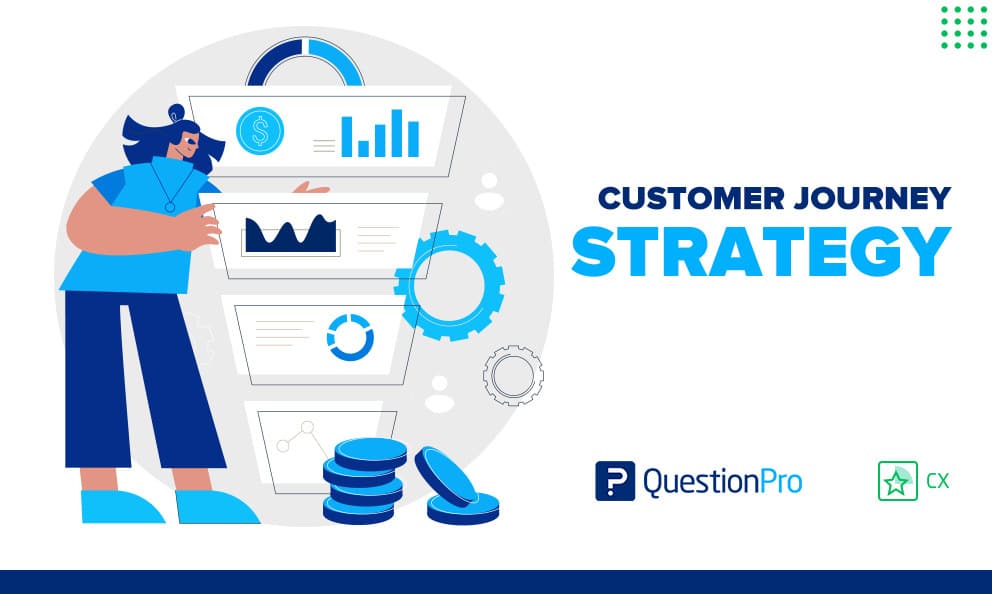
Three quarters of professionals agree that customer experience has a significant impact on loyalty. If customers are frustrated interacting with your brand, chances are they won’t come back.
A customer journey strategy is a plan of action focused in improving the experience that the customer has with your brand from start to finish. Fr om the first encounter with your marketing strategy to the sale. The customer journey encompasses all interactions.
As part of the customer experience, the journey should be an easy and pleasant experience, this means simple processes and top-notch customer service.
Why is it important to have a customer journey strategy in place?
The journey is key to customer loyalty .
94% of people are more likely to buy from brands whose customer experience they rate as very good. 59% of professionals say that customers would switch brands after a bad customer experience with it.
A better customer journey strategy not only leads to more loyal customers but leads to higher profit margins. 40% of professionals agree that customers are willing to pay more for a better experience.
60% of business leaders agree that customers are more influential than three years ago, as they can influence the success of your business, with reviews. This turns them into brand ambassadors .
Check out this guide to learn how to build your own Customer Journey Map.
11 Strategies to Improve Customer Journey
- Personalize the experience
A personalized service is no longer an option – it is essential.
More than half of customers expect brands to anticipate their needs and 63% expect personalized service.
Two out of five customers complain that brands don’t meet their expectations for personalization.
37% of customers say they will not buy products from brands that do not personalize the experience.
78% of brands that have a personalization strategy experience revenue growth.
An easy way to personalize is to offer discounts based on consumer behavior . 52% of consumers say they want individualized offers from brands.
You can also offer personalized recommendations. A third of shoppers say they get frustrated when brands send them offers on something they just bought.
38% of shoppers say brands make them feel special when they send personalized recommendations based on previous purchases.
Try using artificial intelligence (AI) to generate brand recommendations based on your customers’ buying behavior , or use a questionnaire to assess their needs.
- Improve user interface (UI) navigation
If your website is difficult to navigate, customers will have a hard time reaching their end goal.
Poor user experience makes customers frustrated and abandon your website or app. According to 61% of web designers, poor navigation is the number one reason visitors leave a website. Your website should outline the journey your visitors need to take to achieve your end goals. Use clear buttons (CTA) and easy-to-find and logically arranged navigation menus.
Check out some user interface surveys questions templates available for free.
- Optimized for mobile
64% of web traffic comes from mobile devices. According to 73% of web design agencies, the main reason why visitors leave websites is that they are not responsive to mobile devices.
To optimize the design of your site for mobile devices, you must reduce its size so that it loads quickly. In addition, make sure that it responds to different screens of different mobile devices. It is also advised to reduce the amount of information on the screen and increase the size of certain elements to deliver a major impact on the reading user.
- Use chatbots
93% of customer service agents agree that customers increasingly have higher expectations of service. Chatbots can help alleviate some of the burdens by handling customer needs queries using AI.
Chatbots are great customer service agents as they can learn up to 92% of visitor questions in just five months.
You can provide immediate, high-quality service without the customer having to wait five to 10 business days for a customer service agent to respond.
67% of business leaders say chatbots increase profits. You can train your chatbot to provide recommendations to your customers first or offer personalized promotions based on their queries, this helps increase the chances that customers will buy.
Learn More: Buyer Journey & Car Buyer Journey
- Run A/B tests
One of the best ways to find out what improves the customer journey strategy is to collect real-time data via survey data collection .
57% of companies say that monitoring user data has an impact on design decisions.
A/B testing is a way to determine which version of your website drives your customers to perform the behaviors you want them to do and shows you which customer journey strategy is the most successful.
If you enjoy reading about customer journey strategy you might find interesting what is the 10 best customer journey mapping tools .
- Offer self-service options
Customers don’t always want to contact a customer service agent. Instead, they often want to search for information themselves. Therefore, it is essential to have a help center where they can search and find answers to their questions themselves.
65% of brands do not have a knowledge base that the customer can search.
- Optimize your omnichannel experience
High-performing brands offer omnichannel support that gives the customer journey an all-encompassing feel and makes them feel like they are known and remembered by brands across all platforms.
43% of consumers admit that it makes them feel part of the brand when a brand recognizes that they are the same person across multiple customer touchpoints .
40% of consumers say that brands fail to provide them with that omnichannel experience. Customers are frustrated that brands can’t deliver a consistent experience when moving from one platform to another.
If you enjoy reading about customer journey strategy you might find interesting what is the consumer decision journey .
- Facilitate transactions
Many brands make it harder for customers to pay than they should. This causes customers to abandon right at the decisive moment.
65% of consumers say they are more likely to buy from brands where transactions are quick and easy.
The process should be simple and offer several payment methods so that customers can choose the one that is easiest for them. Expand beyond credit cards and PayPal to even consider other forms of payment like Bitcoin.
- Churn Tracking
Cart abandonment is widespread. many shoppers stack their carts and only 40% complete the purchase.
Following up on the abandonment with an email can get the customer back into the buying cycle.
Cart abandonment emails are surprisingly successful at convincing consumers to buy. They have a conversion rate of over 18%. 31% typically includes an offer to help complete the transaction.
Download Customer Journey Canvas
It is vital that your website has a website security certificate and that any database with customer data is well protected. And yet, it’s likely that your website has been hacked, and you don’t know it.
A hack not only damages your reputation but can get you in trouble if your security isn’t substantial enough to comply with general data protection regulations (GDPR) .
- Monitor your customer analytics
If you want to drive your customers to complete their journey, you need to analyze the data. This will help you understand which elements drive customers to success and which drive customer churn . If you don’t collect and analyze data, you won’t know what’s getting in the way of your customer journey strategy.
For instance, 67% of product professionals admit they don’t know why customers stop using their services. Why? Because they do not monitor behavior or collect customer data.
Determining which key performance indicators (KPIs) you will measure and when is essential. This helps make future decisions and guides your strategy.
To encourage loyalty and have more sales, you need a customer journey strategy that makes it easy for your customers to reach their final goal while enjoying a pleasant brand experience.
With QuestionPro CX you can collect data and analyze it to determine which parts of the journey work and which do not, in addition to performing A/B tests to optimize processes and reduce customer churn.
At QuestionPro, we work on what we believe in. Schedule a demo with Ken and discover how to boost customer loyalty and collect valuable consumer insights through our CX survey and customer journey analytics management platform .
Learn more about QuestionPro CX
MORE LIKE THIS

Life@QuestionPro: The Journey of Kristie Lawrence
Jun 7, 2024

How Can I Help You? — Tuesday CX Thoughts
Jun 5, 2024

Why Multilingual 360 Feedback Surveys Provide Better Insights
Jun 3, 2024

Raked Weighting: A Key Tool for Accurate Survey Results
May 31, 2024
Other categories
- Academic Research
- Artificial Intelligence
- Assessments
- Brand Awareness
- Case Studies
- Communities
- Consumer Insights
- Customer effort score
- Customer Engagement
- Customer Experience
- Customer Loyalty
- Customer Research
- Customer Satisfaction
- Employee Benefits
- Employee Engagement
- Employee Retention
- Friday Five
- General Data Protection Regulation
- Insights Hub
- Life@QuestionPro
- Market Research
- Mobile diaries
- Mobile Surveys
- New Features
- Online Communities
- Question Types
- Questionnaire
- QuestionPro Products
- Release Notes
- Research Tools and Apps
- Revenue at Risk
- Survey Templates
- Training Tips
- Uncategorized
- Video Learning Series
- What’s Coming Up
- Workforce Intelligence
Marketing Strategy: What It Is, How to Create the Best One for 2024
It is more important than ever to create and maintain a powerful marketing strategy. Here are the 10 main steps to help you create the ultimate marketing strategy.
Omer is the COO and Co-Founder at Mayple. Started the platform over 5 years ago. 1000+ experts and 600+ happy customers later he is leading the marketing + customer service teams. Avid surfer and remote work enthusiast.
Learn about our
Natalie is a content writer and manager who is passionate about using her craft to empower others. She thrives on team dynamic, great coffee, and excellent content. One of these days, she might even get to her own content ideas.
Updated May 1, 2024.
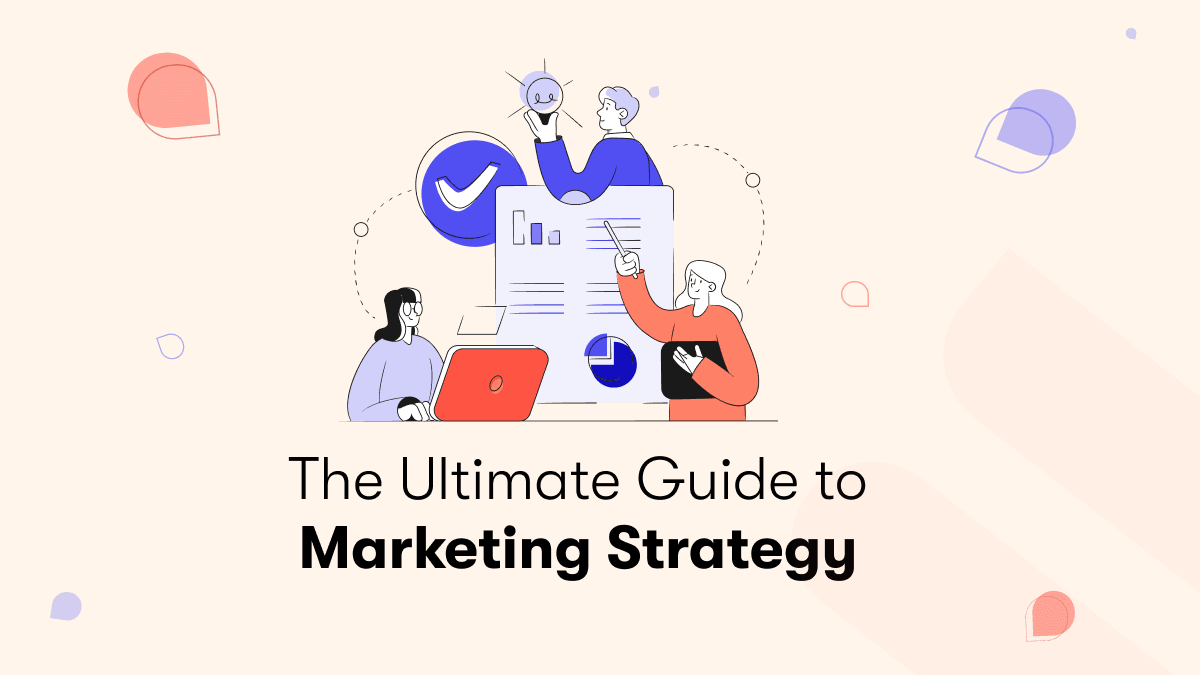
Marketing is a dynamic and ever-changing field. The top digital marketing strategies change with the consumer and technology trends of the day. This is why every company needs a good marketing strategy that's well-planned and has well-defined milestones and objectives. Once you have the right map, the chances you’ll reach the goals you’ve set for your business are much higher.
That means, that while most of us are eager to start launching our marketing efforts the minute after we decide to start a business, we actually need to invest in planning so we won’t waste our limited budget and energies on the wrong things.
If you're a company/startup owner or marketer you need a good digital marketing strategy to hit your goals.
In this guide, we've put together the 10 main steps that you need to follow to build the ultimate marketing strategy for your business. We will take you step-by-step through the process, so you won’t miss a thing and get your digital marketing strategy all figured out.
We have some very useful tips and examples that will make it easier to understand.
If you want to read up on marketing strategy check out our list of the best marketing strategy books.
Now, let's define some of the basic terms.
What is marketing strategy?
Marketing strategy is a long-term, forward-looking approach and an overall game plan of any organization or any business with the fundamental goal of achieving a sustainable competitive advantage by understanding the needs and wants of customers.
A marketing strategy is a broad strategy that encompasses everything from how a company positions itself, to the creative, the strategic partners, the media relations, the marketing mix , and the channels and tactics.
A marketing strategy refers to a firm's overall game plan for reaching prospective consumers and turning them into customers of their products or services. It also contains the company's value proposition, key brand messaging, data on target audience and customer demographics, and other high-level elements.
The broad marketing strategy is what used to fall under the term "branding" back in the more ambiguous days of marketing. It's a practical summary of the key details of the strategy and some of the broad goals and methods used to achieve them.
What is the difference between a marketing strategy and a tactic?
Marketing strategies are broader than specific tactics. For example, a business could have a content strategy for their social media channels or for search engine optimization, and then they could have specific tactics they execute for each channel.
Here's the correct order to follow:
Overall marketing strategy -> Digital marketing strategy -> Specific tactics
For example, here's a great video that introduces specific marketing tactics. These aren't strategies, these are very specific ways you could grow your sales, which would all be included as part of a larger set of marketing strategies inside of your marketing plan.
» Looking for specific tactics? Head over to our Ultimate Guide on Digital Marketing.
What is the importance of marketing strategy?
Sometimes marketers and eCommerce owners get lost in the weeds, in the bits and bytes. They lose track of the overall vision of the business and the large goals. They lose track of the target audience and the main pain points that their product solves for the customer. When that happens, the specific tactics that the business employs can lose their effectiveness.
So, a marketing strategy is not some dusty old document that you put on the top shelf and forget about it. It's a vital process of discovering your company's top goals and objectives and ways to achieve them. That becomes a blueprint or a sample marketing plan for everything you do to better market your product or service.
Let's jump into it.
1. Define your brand value and offering
Your brand strategy is about defining the core values of your brand to make sure that they align with what your prospect and existing customer find important, that they align to your industry trends and competitive environment, and to what you actually offer ie your product.
That’s not an easy task, but without it, all the other marketing tasks become much more difficult.
Here are some good marketing strategy examples from data-driven brands that succeeded in doing it right:
AllBirds - Sustainable, transparent, comfortable
AllBirds began as a darling brand in Silicon Valley in 2014 and quickly grew to a $1.4B valuation in 2018. The shoe company set out to create the world's most comfortable, and they overshot their goal.
Their products are fully sustainable and made out of wool and bamboo, and their branding is impeccable. Their mission statement reads - "Allbirds is on a mission to prove that comfort, good design, and sustainability don't have to be mutually exclusive".
In just four years they became the market pioneers of sustainable footwear. It all started with a launch on Kickstarter, in fact, here's their Kickstarter video:
The brand has a really quirky brand voice, and its values are transparency, sustainability, and comfort.
Here's an email with an order confirmation:

You can see the same quirky humorous brand voice in their social media posts.

Besides the humor and the spunky brand personality, the brand has really taken advantage of this concept of transparency. They display the materials they use in a creative way and get down to the fine details.
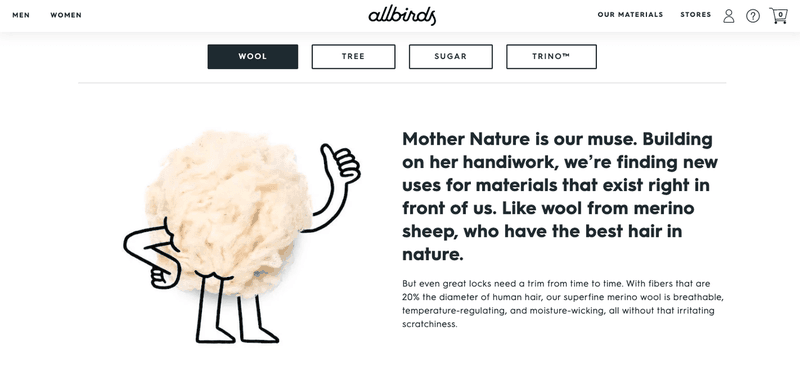
And that ties really nicely with their overall mission and their third brand value - sustainability.

Ultimately, the quirky brand voice and the incredible brand values of sustainability and transparency led Allbirds to build a super-engaged audience online that has contributed the most to the brand's growth.
Yes, it is a really comfortable product (the NY Times called it "the most comfortable shoe in the world"), but without a strong brand and a focus on the user experience, Allbirds would not have been the giant that it is today.
Casper - "here to awaken the potential of a well-rested world"
Casper is a mattress company that has completely revolutionized the industry. They were the first direct-to-consumer mattress company and quickly grew to a $1.1B valuation in 2019.
Casper's brand values are all about dreaming big, innovation, and bringing joy to a tired industry.
Look how they merge the "dreaming big" brand value with a pun about sleeping in their purchase receipt email.
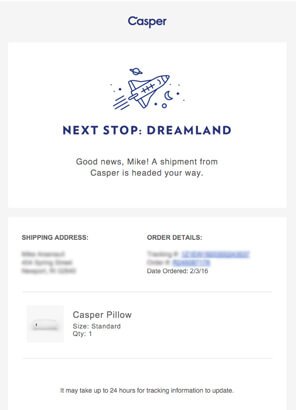
And here's another great email asking for a review.
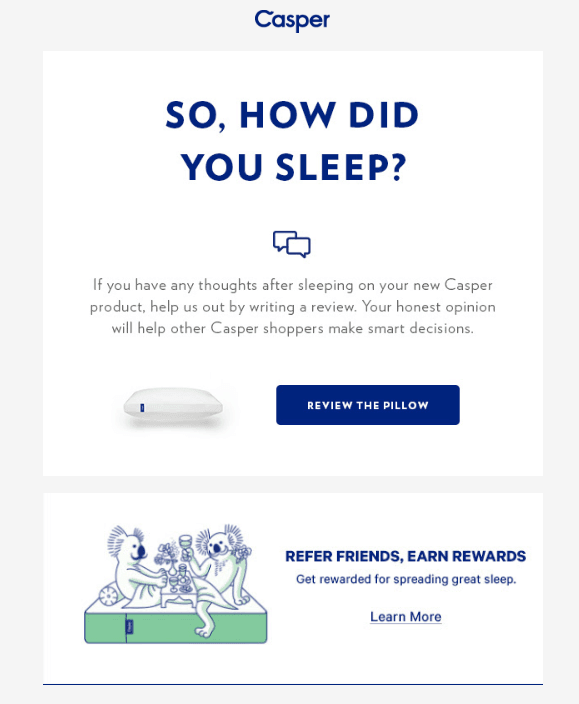
Casper's strong brand helped it launch other successful products, like the Casper Glow, which is an innovative bedtime light that changes its light temperature and brightness automatically and can be remotely controlled through an app.

There are a lot of big and abstract words thrown around when talking about brand value creation, so here's a simple way to think about it.
A simple formula to find the right values that define your brand is this:
- Think about the main pain points/needs/frictions your brand is solving
- Translate it into a value-based language
- Make sure it fits your beliefs and motivations
2. Identify customer pain points and expectations
"People don't want to buy a quarter-inch drill. They want a quarter-inch hole!" - Theodore Levitt, Harvard Business School Professor
One of the top reasons why products or services fail is when their makers fail to identify the customers' pain points. In other words, they don't meet the customer's needs or they don't solve a vital problem in their lives. Also, those needs may change over time so it's important to continue examining the customer journey and solve your current customer challenges.
One of the classic examples is the Segway. It was a device that was said to eliminate walking. It could go up to 12.5 miles per hour, had a lithium battery, and made you look like a dork. It was hailed as the device that would make walking obsolete, and it failed miserably.
It's a sad story but the creator of the device actually drove it off a cliff and died. The problem with the Segway is that no one wanted to stop walking, people love walking, people loved running, so it failed to meet the customer's need and to identify a pain point.

What are the different types of customer pain points?
the most basic pain point is financial. Does your product help your customers save money? Is it more cost-effective than the alternatives? Are the savings short-term or long-term? And if your product is cheaper than the alternatives, does that price difference create enough value for the customer?
These are some of the important questions you should ask yourself. An example of this is Target's launch of the brand Smartly with hygiene/cleaning products all under $2 (approximately 70% less than similar products by other brands).

Convenience
Another really important pain point is convenience. Does your product make your peoples' life more convenient? The classic example of this is Netflix, a brand that became a household name because it was incredibly more convenient than it competitor Blockbuster.
Instead of having to shlep to Blockbuster, for example, and pay all of those late fees customers could now get DVD's straight to their doorstep. Fast forward to 2020, Netflix is worth $203 billion and Blockbuster is is out of business. The company that made me more convenient for people won.
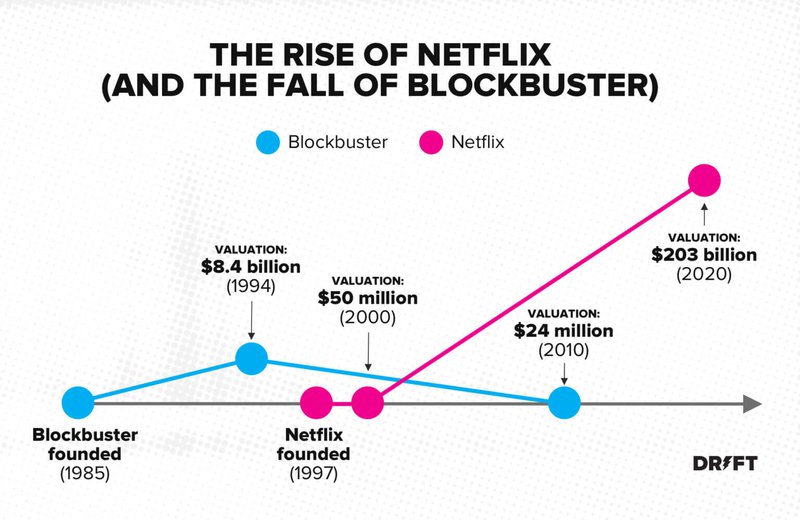
Service is another major factor in solving a customer's pain point. Service refers to the entire customer experience and includes things like - warranty, maintenance, replacements, customer service , and ease of use. A really good example of this is the solar company SolarCity, which was acquired by Tesla in 2016.
SolarCity's solar panels weren't cheaper than the competitors they simply had a better warranty and maintenance on them and that's why customers preferred them. This is one of the major drivers that helped SolarCity become the nation's largest residential solar provider.

Easy steps to identify your customer's pain point
Ok, so we've talked about the type of customer pain points that there are, but how do you identify them for your own company and product? Here are some helpful suggestions that will get you on the right path.
Create a customer journey map
Identify what makes your customers buy your product and how they arrived at your physical or online store. This should include the channels that they visited - a search result, a Facebook ad, a social media post, an email, and other online and physical media. At each stage identify possible pain points and uncover the customer's motivation for using your product.
This will also help you evaluate your marketing mix and see if there are any channels that you need to add.
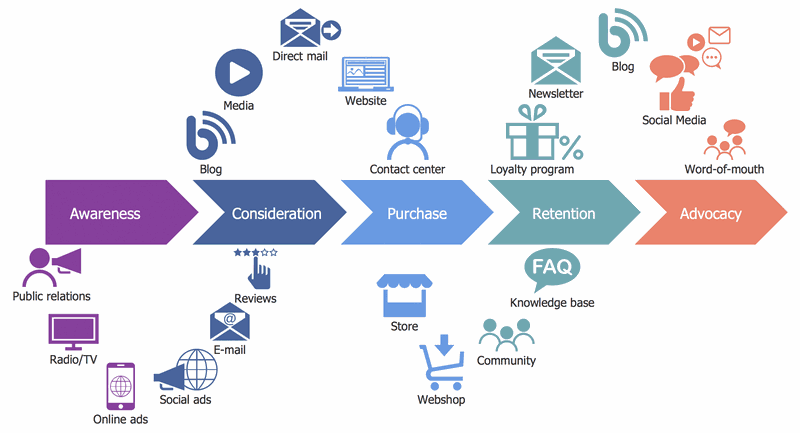
Survey your customers
Another good way to find the customer pain point is by surveying your customers. Ask your customers what they like and don't like about your product and what are some of the factors that led to their choice. There are a ton of survey tools you could use like Typeform or SurveyMonkey .
Look at customer reviews
If you are thinking of launching a new product you should look at the customer reviews of your existing products. These will tell you a lot about your customers' preferences, expectations, and pain points. What's particularly powerful for eCommerce sites are visual reviews - photos or videos that customers post alongside the text of their reviews. You can use tools like Pixlee, Yotpo, or Loox to collect and display visual reviews.
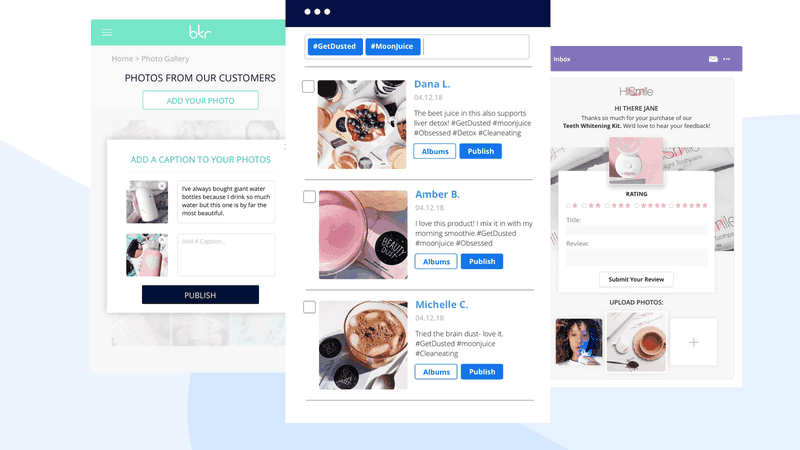
Ask your sales team
Another good way to find your customer's pain points is to ask your sales team. After all, your salespeople are the ones that hear and have to respond to the objections of your prospects and customers, hence they are the most aware of what people are looking for in your products or services.
Sit down and have a discussion with your sales team. Try to find out what your customers like/dislike about your product, what are the issues that they bring up the most, and what makes them turn down the product. If your marketing team interfaces directly with your customers you could also ask them for feedback.

Study your competitors
It's super important to conduct a competitor analysis to analyze the competitor landscape, in any industry. That's how Netflix and Apple began when they strove to make a product that's better and more innovative than the status quo. Identify where you are, and what your market position is .
Look at all your competitor products, their marketing mix, the type of promotion and media they publish, and their strategies. Identify the pain points that they are solving and ones that are still unresolved. One strategy is to try to solve the same pain points, just better. Another strategy is to go after pain points that remain unresolved, to create something that people haven't seen before.
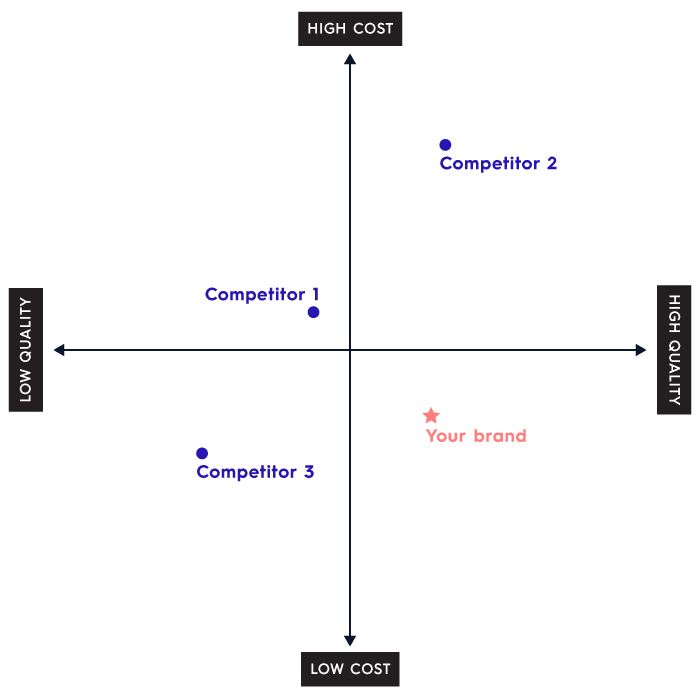
Use the STP framework
Another effective marketing technique is to use the STP framework. STP stands for segmenting, targeting, and positioning.
- Segmenting - is where you divide the market into distinct groups (or target market segments).
- Targeting - is where you determine which customer segment you want to focus your marketing efforts on. And
- Positioning - is the creation of the brand position, the marketing mix, and other various marketing strategies in order to appeal to your potential customers in your target market and try to influence them to make a purchase decision.
The STP framework helps brands identify the types of marketing strategies and channels that will be required to successfully market their product or service to their customers.
3. Identify market trends and competition
That brings us to our next topic - creating a competitive analysis. This is a crucial step in the marketing strategy plan creation because this is where you will identify what differentiates your product or service from the competition.
You can do this through a simple SWOT analysis to determine your brand's strengths, weaknesses, opportunities, and threats. Without this step, it's going to be very difficult to create a product that provides unique value to the consumer and stays competitive with the market trends of the day. So this analysis is crucial and this is how you go about it:
Identify your competitors
The first step of any competitive analysis is to find out who your competitors are. Find out all the different companies that have similar products and services. Look at their social media content, search in related or niche online communities, news mentions, and product reviews.
Categorize your competitors
Now that you have a detailed list of all of your competitors it's time to categorize them. Put them into different groups - primary, secondary, and tertiary competitors. This will help you get clarity on which of your competitors are directly competing with you and which ones you should focus on in your analysis.
Take a look at their social media and branding
The next step of the competitive analysis is to find out all you can about each competitor. Look at all the various social media pages, the content, and the branding that they use on their site and their email marketing campaigns. This will give you a visual understanding of their brand positioning and how your product or service differs from theirs.
Be sure to check out their influencer marketing campaigns to see the kind of branded image that they try to portray online. Look at their display ads (owned media) and UGC(earned media).
Conduct a site audit to look at traffic sources and positioning
This part is the more technical side of the branding audit. Use a tool like Ahrefs , SimilarWeb , or Alexa to check the keywords that each competitor ranks for and their various traffic channels. This will give you the precise search terms that the user searches for and the specific needs that your competitors meet.
For example, you might discover that a competitor is using a type of content that you're not using yet or a traffic channel that you haven't expanded into. This is super valuable information to have for your online marketing strategy.

Look at their pricing
Use a tool to track competitor prices and see how you compare on various products, categories, and by season. Your cometitors may be using different pricing strategies on holidays, weekends, or busy seasons (depending on your niche) and you can get ahaed just by using a few dynamic pricing rules and tweaking your strategy a bit. So this part of the research is critical.
4. Create your value proposition
Now that you have your story right, it’s time to build the right strategy for your marketing. That means making business decisions about what you are delivering and to whom.
Your product or service tells the most about your brand.
This is the actual hands-on experience prospects and customers have with your brand, and it can affect their perception of it the most.
Use your values to make sure you walk the talk and implement what you said about yourself in your offering.
Here are some examples to help you get the hang of it:
Walmart - translating brand values to service language

IKEA - Brand values & design

Most people will know right away this is IKEA’s products - humble, simple and functional.

5. Identify your target audience
Deciding on your target audience could change the way you present your brand and even the language you use to do it.
We love to use simple models for complex decisions.
We found it is much more effective and fun.
Use this model to map the different target audience groups that you have, and prioritize them accordingly in your audience analysis.
(This is actually one of the models we used to determine our target audiences)
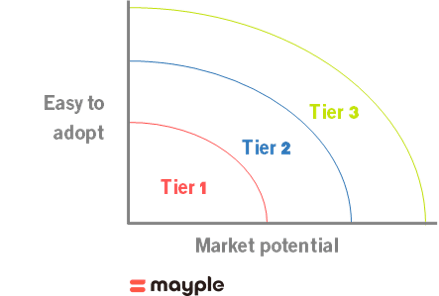
You would want your first-tier target audience to have good market potential for business growth, and it wouldn’t be a Via Delarosa to convince them to buy what you have to offer.
This is not the only tool you need to characterize the people you are going to invest most of your marketing spend to reach out to.
The second tool we recommend for you to use is defining your personas - or, in other words, asking who your ideal customer is, your target customer, to the smallest details.
To define your main persona you can use this question list:
- Who is my persona? Is he a male or is she a female? What age is he or she? Name your persona and attach a photo so it will be easier for you to plan your messaging accurately.
- What is my persona's initial state of mind? - his or her emotions and thoughts before starting the decision-making process?
- What are the different stages of his or her decision-making process until purchase?
If you’re about to launch a new service or product that prospects or customers are not used to using or buying, you might consider applying this psychology of change model. After all, you’re trying to change people's perception here.
Each stage represents a psychological state of mind of people until they reach a decision to take action. You can use the needs that are listed below to create your marketing creative tools that will effectively move your persona to take action.

Identify the following for each stage of the buyer's journey:
- What are your persona’s expectations? What are his goals?
- What process does she go through in this stage? Where does she look for information? Who do they speak with?
- How would you describe the customer's experience at each point of the customer journey?
- What is your objective for each of their decision-making stages?
- What actions can help you achieve these objectives?
Now that you've identified your ideal customers, how are you going to reach them?
That brings us to the next step.
6. Identify partners and potential collaborators
Identifying your potential partners or collaborations is a critical step of reaching your ideal customer. It may be that there are online communities that already exist where your customers hang out. It could be that you need to work with a distributor or get a marketing partner to help you reach them.
This is a critical point to consider before you execute your inbound marketing strategy. Sometimes finding and working with the right partner could give you access and help you achieve 10X the results. This could be through revenue sharing or an affiliate program . It could also be done by social networking at industry events or online conferences.
We’re on the digital marketing portion of our guide and it contains 3 parts - deciding on your creative & messaging, selecting the marketing channels that you’ll be using, and deciding on a strategy and a marketing budget for each channel.
Let’s dive in.
7. Decide on the messaging and creative of your brand
Most businesses (and especially startups) can’t afford to hire a digital marketing specialist in-house so they use the services of freelancers or digital agencies .
From now on, you have a critical job of guarding your brand’s values and strategy in the messaging and creative you’ll create and the different tactics you’ll use.
That’s what storytelling is about .
Make sure that the service provider you hired is aligned with your brand and the various marketing strategies that you want to employ, so they can apply your strategy to the actual marketing communication you’ll have with your potential customers.
Here are two brilliant brands that keep to their authentic brand strategy throughout their messaging:
National Geographic - how to create the “wow” and “wonder” visually
National Geographic knows how to present stunning photography and help us discover the wonders of our world. They constantly keep the language they use on their ads (paid and earned media) to be aligned with these brand values.

8. Define your marketing channels
Now that you have defined your value proposition, your partners, and your creative assets and messaging it's time to select the right marketing channels for your marketing mix.
This is one of the most crucial steps in the process of creating your marketing strategy. Each digital marketing campaign will vary greatly based on the marketing channels that you'll pick. You need to select those marketing channels that fit your brand and your product.
Let's cover a few of the main marketing channels and their best practices.
Social media
Social media marketing is a vital part of any digital inbound marketing strategy and there are certainly a lot of things that you could do. Also, keep in mind that successful social media campaigns can help you get more traffic from search.
Organic social media is used for the awareness stage, or the lead generation stage, of the marketing funnel while a Facebook ad is used for the last stage, or the conversion stage. There are a lot of various platforms and strategies you could use and it's important to pick the right channel for your product.
Here’s a breakdown of some of the best and most effective social media channels to use for different types of companies:
- For visual eCommerce products - use Instagram and Pinterest, TikTok, Facebook, Snapchat and Twitter
- For B2B companies - use LinkedIn, Instagram, ProductHunt, and Angellist
- For B2C companies - use Facebook, Twitter, Instagram, Pinterest
- For written content-heavy companies - use Medium, Quora, and Reddit
- For GenZ-focused companies - focus on Instagram, Snapchat, and TikTok
Red Bull is a great example of a brand that has a brilliant social media marketing strategy. Early on they realized that if they wanted to connect to their target consumer they couldn’t just use the traditional marketing and sales campaigns that all the other beverage companies were using.
They decided to create videos of athletes breaking world records and doing unthinkable things like jumping off airplanes and falling 23 miles and skiing down the Himalayas. To date, the Red Bull YouTube channel has garnered more than 10 million subscribers and more than 2.5 trillion views.
This is obviously a very expensive strategy and won’t make sense for most brand marketing budgets, but it’s a good example of a brand sharing success stories and targeting their consumers the right way on social media.
Social advertising
Ads are becoming more and more popular on social media platforms because the recent algorithm changes continue to favor them and decrease organic reach. After all, that’s how social platforms make their money so you have to use paid media to get anywhere these days.
Pinterest, Facebook, and Instagram are the most popular platforms for advertising. For B2B you can use Quora, Reddit, or LinkedIn.
Top Advertising Tips:
- Create a lookalike audience on each platform and for each type of campaign that you're running
- Organize your campaigns based on the marketing funnel (top, middle, and bottom)
- Match your copy and designs to your target audience
- Retarget your audience and site visitors on Facebook, Pinterest, and Google.
Paid Advertising
Social media advertising is just a subset of online advertising. Other digital advertising can include native advertising, Google ads, Google shopping, banner ads, and much more. Each ad requires thorough strategic planning to make sure that the messaging and creatives match your market segments to help attract new leads and retain current customers.
Influencer marketing
Working with influencers is one of the most lucrative marketing channels you could go into. Studies show that businesses make $5.20 for every $1 that they spend on influencer marketing. And 49% of consumers depend on influencer recommendations for their purchase decisions. That’s huge.
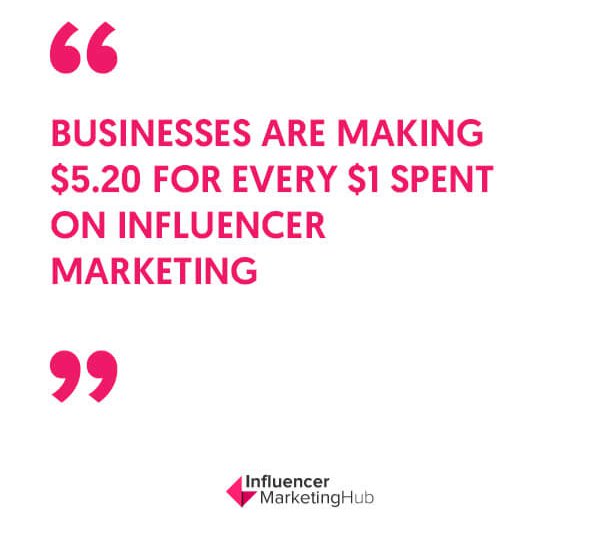
That means that on average about half of your customers are going to be searching for influencer posts so it is essential that these people are recommending you and your product online. Now, influencer marketing is different than when your users post images of your product. Influencer shots are called paid media (just like ad campaigns) while user-generated content (UGC) is called earned media.
Top Influencer Marketing Tips:
- Pick influencers based on the type of audience they have, and their level of engagement (not the size of their following)
- Run giveaway campaigns with groups of influencers
- Run stories on Instagram because they are clickable
- Conduct competitor research to see which influencers they are using on all the relevant platforms
- Use YouTube influencers to create videos about your product or service
- Use real data to determine which influencers are your best performers
Pro tip: Looking to find the right influencers for your next campaign? Check out our list of the top influencer marketing tools .
Email marketing
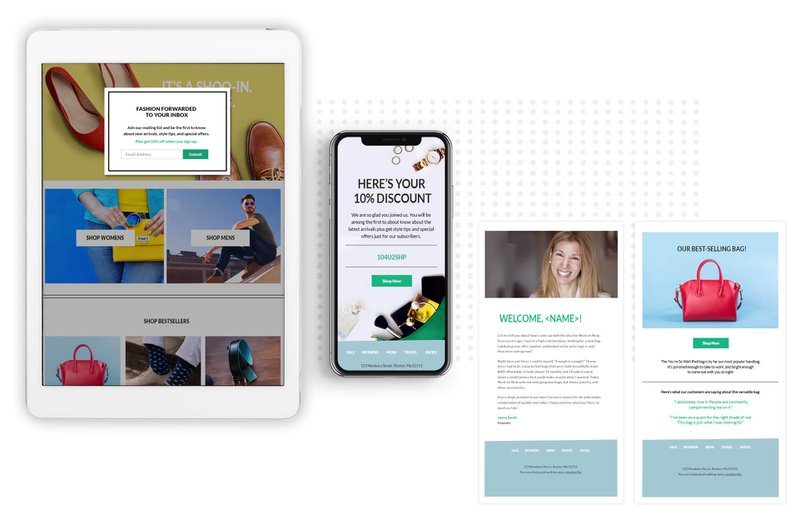
This is going to surprise you but the ROI of emails still remains among the highest in all of the different digital marketing channels and platforms. Studies show that email marketing provides a $42 return on every $1 you spend , which is terrific.
Top Email Marketing Tips:
- Use UGC or earned media in your campaigns
- Set up email campaigns and email flows (cart abandonment flow, welcome flow, sunset flow)
- Create campaigns with educational content, don't just send constant product promotion
- A/B test different types of content, copy and formats based your data to better match your campaigns with your audience
- Continue to grow your email list with popups, subscription forms, contests, giveaways, and promotions
- Create segments based on customer engagement or average order value and create personalized campaigns
That is not to say that the other channels don’t help or assist the sale, it’s like the functions of the various team members in a soccer match. There could have been 5-6 players that touched the ball before it reached the goal post. The same thing happens in marketing.
A user can interact with a brand on numerous channels before they buy their products or services. Which is why it’s really important to have an effective “omnichannel” strategy, a strategy that includes many marketing channels.
Here are a few examples of channels that work really well when combined with email marketing:
Push notifications
Push notifications are those messages you get on your browser on a desktop device or on your mobile screen. They work really well when combined with emails. You could send off the email in the morning for example, and then follow it with a push notification 30-60 minutes later, to remind the user to check out your deal of the day.
Push notifications have a click through rate that’s 7 times higher than emails , so when sent after the email they increase your chances of getting a sale that much more.

Chatbots and messaging
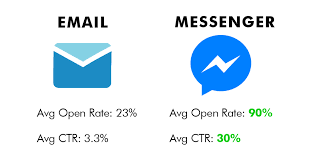
One of the quickest and most effective ways to communicate with customers is through text messages and this has become its own marketing channel. You can set up automated messages and flows that gets sent to a customer or even a chatbot that is able to bring them from product discovery all the way to purchase, without any human involvement.
You can also use this channel to send people a product promotion, a cart abandonment flow, or a content promotion.
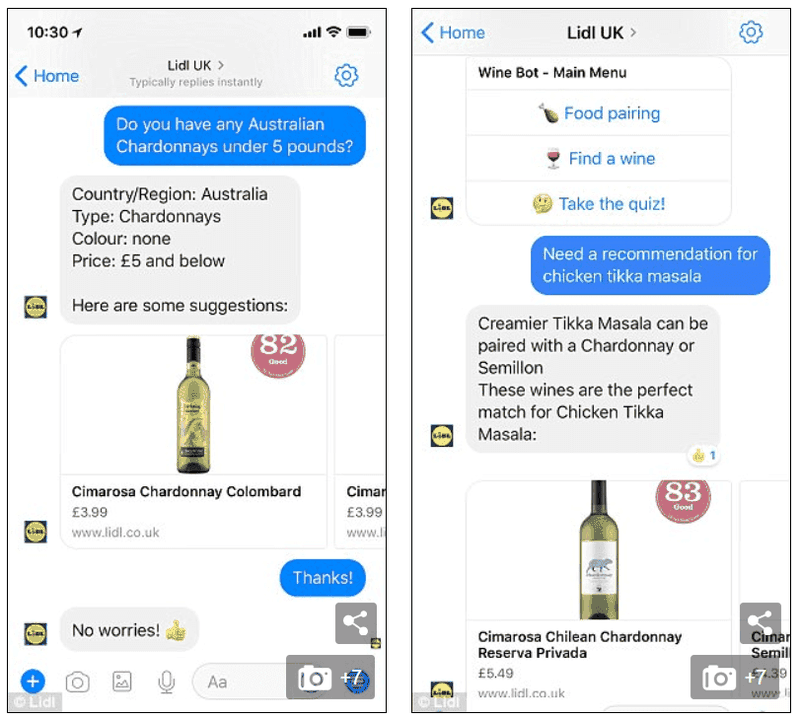
Text messages are much more personal and that’s what makes them so powerful for brands. According to Social Media Today , chatbot messages get open rates of over 80% and click-through rates of over 50% so these messages provide an additional and very effective way to augment and boost your email marketing performance.
Search Engine Optimization
One of the most overlooked strategies is Search Engine Optimization, especially for eCommerce. It involves optimizing a site's content to make it easier for search engines to find it and display it.
There are numerous new ways to get displayed on search engines than ever before - in the images section, as videos, quotes, products, how-to's, Q&A, and much more. SEO is a super effective marketing channel and can bring a lot of targeted and high-quality traffic to any site.
Top SEO tips:
- Use Google Search Console data to find the keywords and searches that you get the most traffic from
- Optimize your on-page content with a tool like Ahrefs or Moz
- Build a comprehensive backlink strategy based on competitor data and best practices
Now remember, not all SEO best practices will fit your needs or make sense. It's a delicate balance between SEO and the user experience (UX) and that requires some tough decisions sometimes. So always learn from your data and keep your audience as first priority and you will win.
Content Marketing
Last but not least, let's talk about your content marketing strategy. Content provides a way for users to find your product or service online. Use content to target your ideal buyer persona, acquire new customers, and delight and retain your existing customer base.
To use content marketing successfully, brands have to create different content for each part of their marketing or sales funnel. For example, a company might put educational content at the top of the funnel for first-time visitors and more promotional content for those shoppers who are ready to buy.
Top Content Marketing Tips:
- Write long-form blog posts for organic search traffic
- Publish comparison and shopping guides for the middle-of-the-funnel visitors
- For B2B: create lead magnets, white papers, and gated marketing research
- Use UGC, video content, and longer descriptions on your social media posts to tell your story

Public Relations (PR)
Last but not least, there's PR. Public relations is one of the most effective growth strategies that can help solidify your brand image and expand your digital presence.
Now that we’ve covered the various marketing channels that you should consider to grow your business, let’s talk strategy.
9. Select a strategy and budget for each channel
It’s now time to select a specific strategy and a budget for each of the marketing channels that you’ve chosen for your brand. Here are a few helpful steps:
Identify your business goals
What are your goals? Pick a few strategic business goals or KPIs (key performance indicators) to focus on in the short term. A really helpful rubric for this is what’s called SMART goals . Smart stands for:
- S pecific - describe clearly what you want to accomplish
- M easurable - set goals that you could measure
- A chievable - these goals have to be achievable and not way out of reach
- R elevant - set goals that improve the specific aspects of your marketing, so no vanity metrics.
- T ime-bound - pick marketing objectives that you can achieve within a certain time frame.
Now that you’ve set up your goals it’s time to look at your market.
Here's a fantastic video from Hubspot to watch about setting the right marketing goals for your business:
Conduct market research
Gather information about your market - the size, growth, social trends, search trends, and demographics of your target market. Find out what is possible and feasible to accomplish and which channels, content types, and media, are used to reach your target customer, and which you should add to your marketing mix. You can use a PEST analysis or a SWOT analysis to help you with your market research .
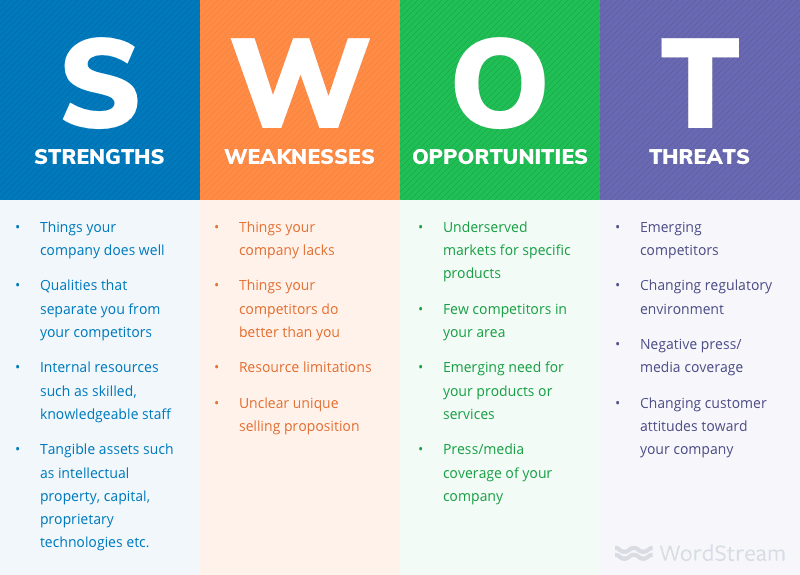
A PESTEL analysis is a marketing framework or management method that helps businesses assess major external factors that influence its operation, in order to become more competitive in the market.
PESTEL stands for political, economic, social, technological, environmental, and legal. For example, legal factors could include a new regulation that significantly limits a brand's ability to sell their product in a particular region. Political factors could include new trade restrictions, tariffs, or a new tax policy. Environmental factors could include weather conditions, seasonality, and even natural disasters.
Align your strategy with your ideal customer
Go back to the customer personas that you’ve created at the beginning of this process and make sure that your strategy aligns with your personas. Look at the trends, at the type of customers that you are going to be able to reach, and tweak accordingly.
It’s performance time!
At this point, you have your brand story and values, your go-to market strategy, and a professional to run your marketing efforts.
From this point forward, you should focus on much more tactical management. That means iterative testing of your content and creatives, of your target audience segments and even of the words you use on your ads CTAs (call-to-action buttons).
Which brings us to the last step of the process:
10. Analyze your results
This is one of the most crucial steps in anything you do in marketing. Once you test something you have to analyze the results and continue testing. Data is crucial in every aspect of marketing and the omnichannel data you get from testing marketing strategies is the best kind of data to have. Smart marketing managers use data to continue iterating and optimizing their growth strategies.
Once you have the results of your strategy you can then make the changes you need to make and A/B test various aspects to get even better results.
BONUS: Examples of Marketing Strategy Templates
There’s no one-size-fits-all marketing strategy, and if you’ve read this entire guide to this point - you’re probably eager to implement some of the various strategies we talked about. And you’ve probably discovered a lot of topics that you should learn more about to really perfect your marketing strategy.
Here are some of our favorite resources + marketing strategy examples + templates. These are really effective and comprehensive. They cover a really broad range of channels and use cases so you can find some value regardless of which business you’re in. Choosing the right marketing strategy template is the secret behind creating an effective marketing strategy.
How to Plan Your Marketing Strategies in 12 Steps ( CoSchedule )
This beautiful strategy guide has everything you need to know to create the perfect strategy. The best part is that it shows everything visually in each section, and has a really simple marketing strategy template to follow to create your own strategy.
Plus, CoSchedule started off as a content marketing tool for inbound marketing teams (they are now much more than that), so they go into a brief history of content marketing, inbound marketing, and how it all started.
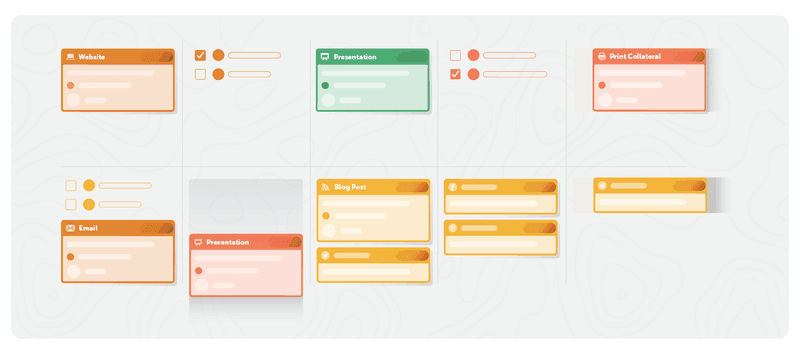
The best part about CoSchedule is that they have a feature where that allows you to divide the tasks among your team members. For example, if you're a content team manager you can use this to visually display who writes each piece of content, who edits it, and who publishes that piece of content on the team.
This is a crucial and super effective step that gets missed pretty often. Once a brand makes their strategy, it’s important to delegate the work and get started on the execution.
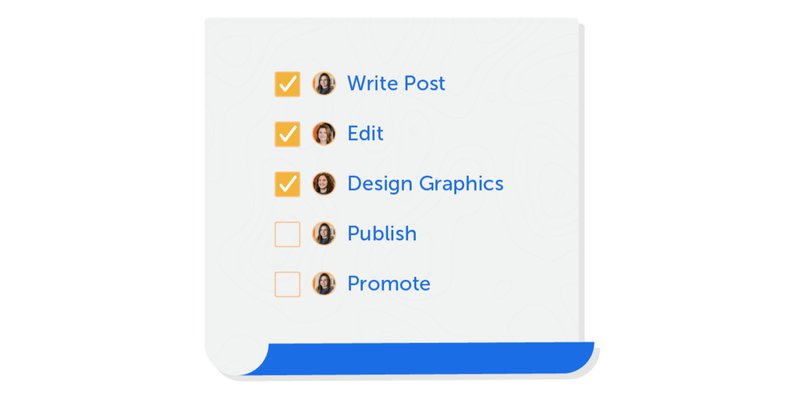
10 Marketing Strategies to Fuel Your Business Growth ( Entrepreneur )
This is an old one but when we read it we thought it has the perfect sequence of some of the most successful marketing strategies for an eCommerce business. It has literally everything you need to market successfully.
We’re talking influencers, email marketing automation, content marketing, video content, Facebook retargeting and search engine optimization. This post is an excellent broad overview of eCommerce marketing at its finest.
The Essential Guide to Marketing Strategies ( Hurree )
Hurree is one of the best marketing blogs ever. This post in particular gives a really good detailed overview of each step of creating a marketing strategy. It also has a variety of videos sprinkled throughout the post that explain concepts deeper, and the best part - they have a whole section of marketing automation. Hurree is a marketing automation platform so you know to expect some talk of automation in every single one of their posts. This is a segway from traditional marketing principles to present-day automation and beyond.
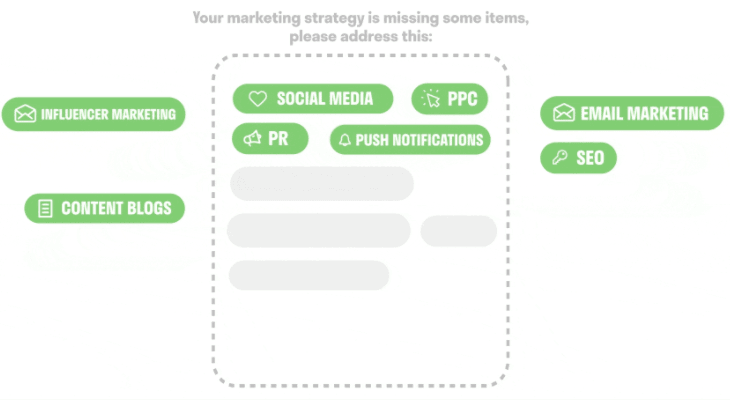
The 11 Best Marketing Strategies We Tried This Year ( WordStream )
This post is for the more advanced marketer who wants to really hone in on the top strategies that work in 2022. It’s written by Sujan Patel, the one and only, and he goes over things like webinars, reaching out to other tools in the industry, brand partnerships, search marketing, evergreen content, SMS, and non-traditional social media channels. Check out this post, even though it was written in 2018, it remains one of the best lists of marketing strategies on the web.
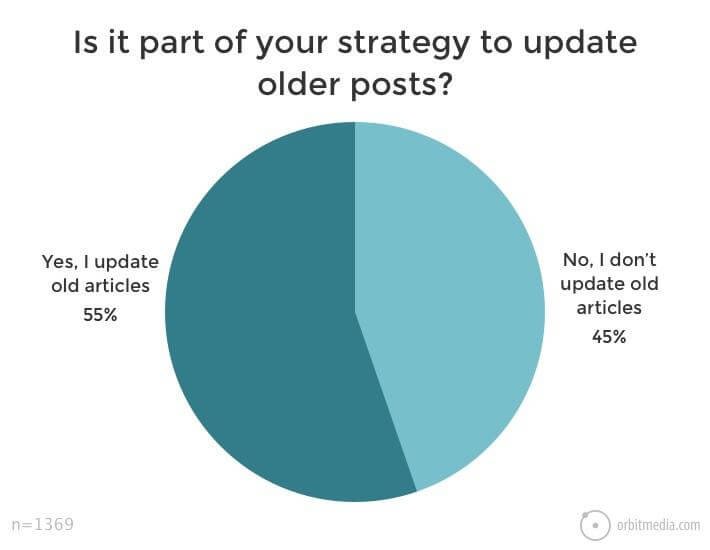
The Ultimate Digital Marketing Strategies Guide ( HubSpot )
This is a classic resource from HubSpot and we like about it is how clearly they define every term, every type of content and marketing tactics that you should develop. They also include 5 examples of marketing ads and dissect each one. It’s a great read and you will get a lot of value out of it.
That’s it, folks.
Now that you have a better idea of how to craft the ultimate marketing strategy for your business or startup it’s time to go out there and absolutely smash it.
What are the 5 marketing strategies?
The 5 P's of Marketing are - Product, Price, Promotion, Place, and People. These are key marketing strategies that are used to position any business strategically.
What are the 5 C's of marketing?
The 5 C's is a technique used to help marketers better position their business and make more informed business decisions. The "5 C's" stand for Company, Customers, Competitors, Collaborators, and Climate. It's a type of analysis that helps marketers look at the whole picture as an ecosystem in which the business lives in.
Related Articles

Ben Kazinik
Ecommerce Marketing in 2024: Channels & Growth Hacks

How True Classic Grew to Over $150M
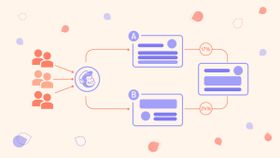
Octavia Drexler
20 Mailchimp A/B Test Ideas to Drive Better Email Marketing Results
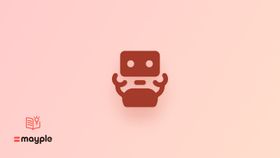
The Ultimate Guide to Ecommerce Chatbots
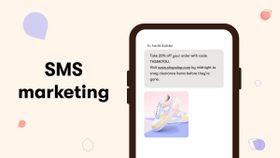
The Beginner’s Guide to SMS Marketing: The Benefits, Strategies & Tools
What is inbound marketing?
Inbound marketing is a methodology to attract loyal customers to your business by aligning with your target audience's needs. Creating tailored marketing experiences through valuable content is the core of an inbound marketing strategy that helps you drive customer engagement and growth.
Inbound Marketing Overview
The inbound methodology is the strategic method of growing your organization by building meaningful, lasting relationships with consumers, prospects, and customers as opposed to interrupting them with traditional advertising methods. It’s about valuing and empowering these people to reach their goals at any stage in their journey with you.
Why? Because when your customers succeed, you succeed.
The inbound methodology can be applied in three ways:
- Attract : drawing in the right people with valuable content and conversations that set you up as a trusted advisor.
- Engage : presenting insights and solutions that align with their pain points and goals so they are more likely to buy from you.
- Delight : offering help and support to empower your customers to find success with your product.
Why is inbound marketing important?
When customers find success and share that success with others, it attracts new prospects to your organization, creating a self-sustaining loop. This is how your organization builds momentum, and this is why the inbound methodology serves as a strong foundation for your flywheel .
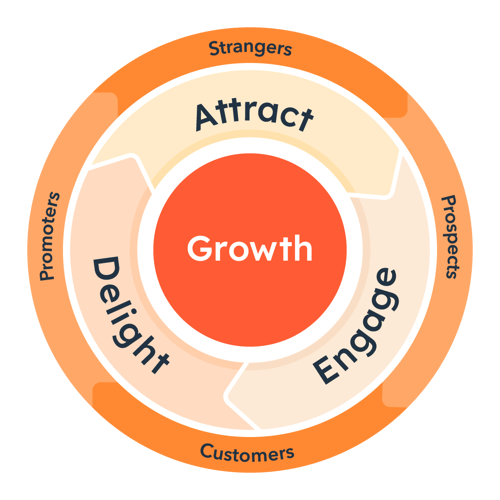
To reach and engage with that target audience effectively, you need to shift your business focus toward inbound marketing strategies. From HubSpot Co-Founder Brian Halligan’s perspective, "[If] you create all this content, and it's rich content — it's informative, it [will] pull people in…so people fall in love with your brand." By using social media, email marketing, blogging, and a truly exceptional website, you can create valuable, informative, and engaging content that pulls people in and cultivates a genuine connection with your brand. Embracing the inbound methodology serves as a strong foundation for building momentum to attract new prospects and ultimately drive business growth.
How does inbound marketing work?
Inbound marketing strategies will help you effectively market to your target audience the inbound way. Keep your flywheel spinning and help your business grow better .
Attracting Strategies
Inbound marketing strategies that attract your target audience and customer personas are tied to content creation and development.
To reach your audience, start by creating and publishing content — such as blog articles, content offers, and social media — that offers value. Examples include guides on how to use your products, information about how your solution can solve their challenges, customer testimonials, and details about promotions or discounts.
To attract your audience members on a deeper level through inbound marketing, optimize all this content with an SEO strategy . Target specific keywords and phrases related to your products or services, the challenges you solve for customers, and the ways you help customers.
This SEO strategy will allow your content and information to organically appear on the search engine results page (SERP) when people search for this information. These folks are your target audience, and likely the right customers for your business.
Engaging Strategies
When using inbound strategies to engage your audience, make sure you’re communicating and dealing with leads and customers in a way that makes them want to build long-term relationships with you. When using these engagement strategies, inject information about the value your business will give them.
Specific engagement strategies may include how you handle and manage your inbound sales calls . Focus on how customer service representatives handle calls from interested people and prospects. Additionally, be sure you’re always solution selling rather than product selling. This will make sure all deals end in mutually beneficial agreements for customers and your business — meaning, you offer value for your right-fit customers.
Delighting Strategies
Inbound strategies that delight make sure customers are happy, satisfied, and supported long after they buy. These strategies involve your team members becoming advisors and experts who can assist customers at any time.
Incorporating thoughtful, well-timed chatbots and surveys to help, support, and request feedback is a great way to delight your customers. Bots and surveys should be shared at specific points throughout the customer’s journey to make sure they are relevant and valuable.
For example, chatbots may help current customers set up a new technique or tactic you've started offering that they’d like to take advantage of. Additionally, a satisfaction survey may be sent out six months after customers buy your product or service to get their feedback and review ideas for improvement.
Social media listening is another important strategy when it comes to delighting customers. Social media followers may use one of your profiles to give feedback, ask questions, or share their experience with your products or services. Show that you hear and care by responding to these interactions with information that helps, supports, and encourages followers.
Lastly, the mark of an inbound strategy focused on delighting customers is one that helps and supports customers in any situation, whether your business gets any value out of it or not. Remember, a delighted customer becomes a brand advocate and promoter, so handle all interactions, both big and small, with care.
Get Started With Your Inbound Marketing Strategy
As an inbound marketer, your goal is to attract new prospects to your company, engage with them at scale, and delight them individually.
You also partner with your sales and services teams to keep the flywheel spinning effectively and help the business grow. It's a big job, but the inbound methodology and Marketing Hub have you covered.

You don’t want just anyone coming to your website. You want people who are most likely to become leads and, ultimately, happy customers. How do you get them there? You attract more of the right customers with relevant content at the right time.
Use the content strategy tool to build your authority in search and rank for the topics that matter the most to your prospects. Publish your blog post or video content across social networks using social media tools. Create ads to increase awareness of your brand with your target audience. Throughout each stage, reporting and analytics will help you know what’s working and where you need to improve.
Use HubSpot Conversations to create lasting relationships with prospects on the channels they prefer — through email, bots, live chat, or messaging apps. Use conversion tools like — CTAs, forms, and lead flows — to capture the information of prospects visiting your site.
Use all the prospect and customer information in the CRM to personalize the website experience using smart content, and the entire buyer’s journey using email and workflows. Create brand loyalty by targeting specific audiences with your social content or ads. Connect your favorite tools to HubSpot to fit the unique needs of your business.
Use email and marketing automation in conjunction with HubSpot Conversations to deliver the right information to the right person at the right time, every time. Use the Conversations inbox to align with your sales and service team members to create contextual conversations with the people you do business with. Create memorable content your prospects can share with their friends and family by using a variety of content formats that your prospects prefer, like video, .
By combining the inbound methodology with HubSpot software , you’ll grow your business and get customers to buy more, stay with you longer, refer their friends, and tell the world they love you.
Learn Inbound Marketing
Sign up for a free HubSpot Academy course to learn inbound marketing, access free tools to try inbound yourself, and get certified. Grow your business and your career with the inbound methodology.

What is omnichannel marketing?
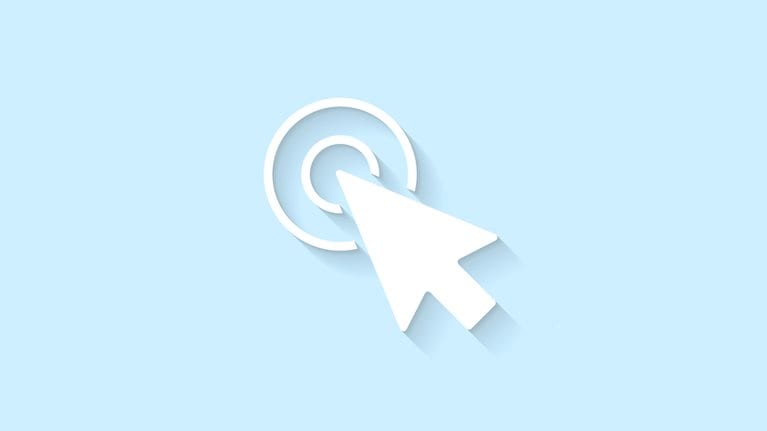
Picture this: you’re browsing online for some new work clothes, and you add something to your virtual cart but ultimately decide not to buy it. Then later, you see an ad on social media for the abandoned garment. Some scratch their heads at this, but it’s actually an example of omnichannel marketing.
The prefix “omni” means “all,” and “channel” is a reference to the many ways customers might interact with a company—in physical stores, by surfing the web, on social media, and in emails, apps, SMS, and other digital spaces. And this omnichannel approach can be a powerful way to meet your customers where they are, providing them good service in line with their preferences and needs. (Note that, in this article, we use the terms “customers,” “consumers,” and “shoppers” interchangeably in referring to omnichannel marketing in both B2B and B2C contexts.)
More and more, customers move across all channels—in person, online, and beyond—to get what they want. But not every customer is looking for the same thing, and omnichannel marketing acknowledges that. Some people want more services for certain transactions; others prefer low-touch, 24/7 interactions. Effective omnichannel marketing , then, happens when companies provide a set of seamlessly integrated channels, catering to customer preferences, and steer them to the most efficient solutions.
So why is omnichannel marketing important? Research on the omnichannel experience shows more than half of B2C customers engage with three to five channels each time they make a purchase or resolve a request. And the average customer looking to make a single reservation for accommodations (like a hotel room) online switched nearly six times between websites and mobile channels. If these customers encounter inconsistent information or can’t get what they need, they may lose interest in a brand’s products or services.
And this can translate into business outcomes. Omnichannel customers shop 1.7 times more than shoppers who use a single channel. They also spend more.
Sometimes the term omnichannel is used in the context of customer service or customer experience . And it’s also used as a descriptor of other elements that go into supporting an organization’s omnichannel efforts—for instance, omnichannel supply chains , which is shorthand for an approach in which companies ensure that their supply chains are optimally set up to support omnichannel marketing efforts.
What are examples of omnichannel?
Omnichannel approaches are commonly used in retail (both B2B and B2C ), but you’ll also find it in healthcare and other spaces. Medtech companies , for instance, use a variety of channels including digital marketing, inside sales, portal and e-commerce, and hybrid sales-rep interactions to engage with healthcare professionals.
Several omnichannel examples can illustrate various approaches:
- Best Buy typically focuses on commerce (both in store and online), but boosted its in-store experience by creating offerings for customers to explore smart home-technology solutions, pairing them with free in-home advisory services. And its mobile app lets customers “scan to shop” from catalogs and curbside, or buy online and pick up merchandise in the store itself, smoothing the end-to-end journey for customers with the 24/7 tech support from its Geek Squad. Best Buy’s Totaltech support offer was compelling to customers—it launched with 200,000 memberships in 2018, which climbed to two million within a year.
- Beauty retailer Sephora emphasizes omnichannel personalization, relying on rich in-app messaging, personalized push notifications, and easy ways for customers to book in-person consultations. Its in-store technology is a powerful complement that allows employees to access customer favorites and suggest products they might try next. Its loyalty program also plays an important role. The efforts are already driving value for Sephora: data showed that customers visiting the retail website within 24 hours of visiting a store were three times more likely to make a purchase, and orders were 13 percent higher than for other customers.
- Nike takes an ecosystems view of omnichannel, extending the brand experience and offering customers an ever-growing platform of content, offers, and community interactions. Its SNKRS and Run Club apps, for example, facilitate in-person meetups, running groups, and events. It also has an app for delivering individual workouts and fitness programs, creating experiences that go far beyond shoe and apparel lines to meet customers in their day-to-day routines.
Learn more about our Retail and Growth, Marketing & Sales practices.
How has omnichannel been affected by the COVID-19 pandemic?
Omnichannel rose during the COVID-19 pandemic as more consumers turned to e-commerce. Due to the increased demand for contactless shopping during the height of the pandemic, US grocery stores saw 20 to 30 percent of their business shift to online . Before the pandemic, e-commerce accounted for just 3 to 4 percent of total sales for grocers.
The shifts made during the pandemic are likely to persist . In the pandemic, people gravitated to curbside pickup, “buy online, pay in store” models, and self-checkout at higher rates than in the past. And recent research indicates these behaviors are “sticky”—indeed, about 70 percent of people who first tried self-checkout in the pandemic say they’ll use it again.

Introducing McKinsey Explainers : Direct answers to complex questions
What do customers want out of the omnichannel experience.
Customers want a compelling and personalized omnichannel user experience with robust digital capabilities, both online and offline. About 60 to 70 percent of consumers research and shop both in stores and online . More concretely, over one-third of Americans made omnichannel features—think buying online and picking up in store or curbside—part of their regular shopping routines since the COVID-19 pandemic emerged. Nearly two-thirds of those individuals plan to continue doing so. And younger buyers, like Gen Zers, embrace omnichannel enthusiastically; these customers don’t think in terms of traditional channel boundaries, and they expect brands and retailers to provide a seamless experience, no matter where they are.
In a sense, all customers are omnichannel customers now, McKinsey partner Tiffany Burns explains in an episode of the McKinsey on Consumer and Retail podcast :
“Many retailers still think, ‘There are omnichannel interactions and store interactions, and I’m optimizing those two things separately. I have two different teams working on and thinking about those experiences.’ But as a consumer, when I go on the retailer’s website or app, I expect to see availability, a connection to what’s in the store, and a way to order things that I can pick up in store. I also expect to be able to stand in the aisle in the store and research a product. Today, consumers are figuring out workarounds to do all those things: they’re switching over from the app to Google, looking up the product, and searching for reviews.”
Organizations that make shopping a seamless omnichannel experience , or provide an app that helps customers find their way or see what’s in stock in the store, are already creating experiences that are a win for omnichannel customers .
Is omnichannel the same thing as phygital? And what is phygital, anyway?
Omnichannel is a business strategy, while “phygital” (a portmanteau that combines the word “physical” and “digital”) refers to the integration of the physical and digital worlds.
The term suggests a completely connected world that is both physical and digital at the same time . While fewer consumers are visiting brick-and-mortar stores and choosing to use e-commerce instead, more than 80 percent of retail sales still occur in a physical location . By 2030, the shopping experience will be highly personalized , and some activities may even take place in the metaverse . According to a recent survey, 80 percent of US adults want personalization from retailers with multiple, personalized touchpoints , which can include a mobile app, digital displays, interactive screens, tech-enabled associates, and point of sale.
What about omnichannel vs multichannel?
When it comes to omnichannel vs multichannel, the key difference is the focus at the center of all efforts. Omnichannel is a customer-centric approach in which all channels are integrated so the customer has a unified and consistent experience whether they are at a physical store, using an app, or on a website. Multichannel, in contrast, tends to revolve around products instead of customers. It aims to inform as many people as possible about the product or brand, and the channels are not linked, so the customer experience is often different for each channel.
An interview with an insurance executive, Eric Gewirtzman of BOLT , makes that distinction relatable: “Insurance customers are already moving between various channels,” Gewirtzman says. “But there’s a big difference between being multichannel and being omnichannel. Just because carriers have, say, an exclusive agent channel, an independent agent channel, and a website, doesn’t mean they’re omnichannel. Too often, consumers will get a different experience and different results depending on which channel they use. This has to change. If there is no awareness between the channels, sales are lost.”
Learn more about our Financial Services practice.
What is omnichannel personalization?
Omnichannel personalization refers to the way organizations might tailor the customer experience for individuals across physical and digital channels. This includes multiple touchpoints that cater to the customer’s preferences pre-visit, during the visit, and post-visit. Customers receive products, offers, and communications that are unique to them as individuals.
Efforts to personalize the omnichannel market can have a big payoff. Indeed, getting omnichannel personalization right could help companies increase revenue by 5 to 15 percent across the full customer base.
While companies recognize the power of omnichannel personalization, they may face roadblocks in implementing these efforts for a variety of reasons:
- Omnichannel personalization requires a lot of investment in technology (both software and hardware). Personalizing physical spaces often starts from scratch because it requires enabling digital touchpoints such as screens, kiosks, or tablets for store associates, which may not exist.
- It is difficult to deliver a seamless customer experience and train employees. The front line needs training to understand and reinforce the customer journey.
- Traditionally, companies operate their digital and physical channels independently. Omnichannel personalization requires companies to rethink their organizational structure across both the digital and physical parts of the business .
These barriers, however, can be overcome. Five steps can help companies achieve omnichannel personalization :
- Define the omnichannel personalization strategy and learning agenda. It’s crucial to develop a clear view on key moments of influence in the customer journey , and then identify what outcomes are desired at each step of that journey. Finally, an organization needs to prioritize use cases to test, looking at their ability to deliver business benefits and value to customers.
- Address five digital touchpoints to activate personalized experiences in physical environments. Companies need to connect digital and physical footprints to drive omnichannel personalization, especially at touchpoints where these worlds converge. Five are particularly important: mobile apps, digital displays, interactive screens, tech-enabled associates, and point of sale.
- Use an omnichannel “ decisioning engine ” to deliver experiences and measure performance. This can help organizations identify, quickly and accurately, the next best action to take with each customer.
- Implement agile operating practices. Personalized marketing goes beyond mere technology; it requires new ways of working, and agile marketing teams can help in this regard.
- Activate omnichannel personalization in the field. To bring all these elements together, a company’s sales force must be fully aligned and well trained. In-person teams could make your customer’s day, so frontline personnel need to support personalization efforts, understand their value, and use digital tools to deliver the complete experience.
What is omnichannel strategy?
An omnichannel strategy for marketing is a way of ensuring that your efforts drive tangible business value. Rather than rushing blindly into the space, or haphazardly approaching it, organizations should step back and think about underlying business value drivers. Excelling in omnichannel depends on a laser focus on value creation, looking at both strategic and customer priorities to craft the omnichannel strategy that will be most effective for their unique circumstances.
The most successful companies set their omnichannel strategy by leading with their strategic ambition and aspirations for customer experience. There are three primary omnichannel strategies :
- Commerce. This prioritizes cross-channel shopping experience both in store and online.
- Personalization. This strategy focuses on tailored, targeted, and relevant cross-channel engagement at scale.
- Ecosystem. Here, the strategy aims to provide rich cross-channel platforms integrated with consumer needs and lifestyles.
Learn more about our Growth, Marketing & Sales practice.
What’s involved in omnichannel operations?
Organizations can build leading omnichannel operations , spanning a variety of areas. By strengthening the foundation of your omnichannel operations and focusing on strategy, structure, and processes, you could gain a performance edge.
Topics to explore include mastering omnichannel supply chains , creating a customer-centric supply chain strategy , designing the omnichannel distribution network of the future , reimagining the role of physical stores , and more.
What should I know about B2B omnichannel?
Omnichannel has become a permanent part of B2B sales , with e-commerce, face-to-face, and remote videoconference sales all a necessary part of buyers’ experience. According to a 2021 McKinsey survey of US-based B2B decision makers, 94 percent of respondents view today’s B2B omnichannel reality as being as effective or more effective than before COVID-19. The findings also revealed that B2B customers regularly use ten or more channels to interact with suppliers, up from five in 2016.
B2B omnichannel efforts can be a path to grow an organization’s market share, but loyalty is up for grabs, with customers more willing than ever to switch suppliers for a better omnichannel experience. B2B decision makers use more channels than ever before to interact with suppliers, and being attuned to those channels will be important.
There are five must-dos for B2B companies seeking to retain customer loyalty and succeed in omnichannel:
- offer a performance guarantee (nearly 80 percent of B2B customers say it’s crucial)
- show product availability online
- enable purchases over any channel
- provide customer service in real time
- ensure the customer experience is consistent as buyers toggle between channels
While B2C omnichannel efforts might be the first to spring to mind, omnichannel experience is crucial to giving all customers a better and more seamless journey.
For more in-depth exploration of these topics, see McKinsey’s insights on marketing and sales —and check out omnichannel-related job opportunities if you’re interested in working at McKinsey.
Articles referenced include:
- “ The new B2B growth equation ,” February 23, 2022, Arun Arora , Liz Harrison , Max Magni, Candace Lun Plotkin , and Jennifer Stanley
- “ Omnichannel: The path to value ,” April 30, 2021, Holly Briedis, Brian Gregg , Kevin Heidenreich, and Wei Wei Liu
- “ Omnichannel shopping in 2030 ,” April 9, 2021, Praveen Adhi , Eric Hazan , Sajal Kohli , and Kelsey Robinson
- “ Redefine the omnichannel approach: Focus on what truly matters ,” June 22, 2020, Jorge Amar , Raelyn Jacobson , Becca Kleinstein, and Allison Shi
- “ The end of shopping’s boundaries: Omnichannel personalization ,” February 10, 2020, Gal Gitter, Meg Raymond, Kelsey Robinson , and Jamie Wilkie
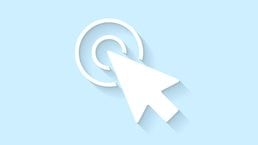
Want to know more about omnichannel marketing?
Related articles.
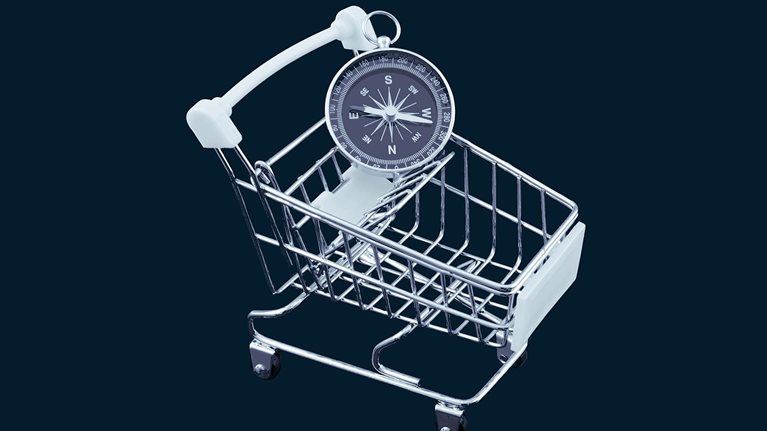
Omnichannel: The path to value

The new B2B growth equation

What is the metaverse?
What is a go-to-market strategy?
What is a go-to-market (gtm) strategy.
A go-to-market strategy is a comprehensive plan that outlines how a product or service will be positioned, priced, promoted, and distributed to a target audience. It fuses together a range of business functions – including product, marketing, sales, and customer intel – to form a fully aligned value proposition and action plan for launching and scaling a new product.
A strong GTM strategy will detail the competitive positioning, ideal customer profile , distribution channels, promotional tactics, and sales enablement practices that will be used to not only commercialize the product, but also accelerate its adoption in the marketplace.
In this sense, a go-to-market strategy should heighten your market awareness and ensure the organization doesn’t waste money, time, and resources releasing a product to the market that lacks sufficient demand. It should also help you launch your product into a new market, reposition/relaunch your brand , or improve existing product sales.
NB: Remember, poor product-market fit and oversaturation can hinder a new product launch — even if the product is well-designed and innovative, so be sure to take this into account when putting together your go-to-market plan.
Throughout this step-by-step guide, we'll address each of the steps that’ll help you and your marketing team appeal to your ideal customer, including:
- Driving factors in a go-to-market strategy
- Understanding your buyer’s journey
- Example go-to-market strategies
How to improve your go-to-market strategy
The five essential elements of a go-to-market strategy.
- Market definition: Which markets will you be targeting when selling the product or service?
- Customers: Who is the target audience/target market, and what do the demographics look like within these markets?
- Distribution model: How do you intend on delivering the product or service to the customer?
- Product messaging and positioning: What is being sold and what is its unique value or primary difference when compared to other products or services in the market?
- Price: How much should the product or service cost for each customer group?
Go-to-market strategies unpacked
More often than not, product marketers own the go-to-market process, since it depends heavily on cross-functional management, extensive knowledge of the product, and analysis of the market.
But what exactly is a go-to-market strategy and why do you desperately need one?
What is a go-to-market (GTM) strategy vs. a general marketing strategy?
A go-to-market strategy pulls together all of the elements that drive a business, such as marketing, customer intel, and brand development, and provides an action plan for how you can better reach your customers. A GTM strategy's focus is on being aware of the market you're looking to launch in.
On the other hand, a general marketing strategy focuses more on how you can reach the identified market and deliver value to that audience.
Who needs a go-to-market strategy?
Anyone who is looking to launch a new product in an existing market, an existing product in a new market, or testing a new product's market for growth should consider creating a Go-to-Market strategy.
What is the go-to-market model?
The go-to-market model is a plan that details how a company can promote a product to gain the interest of customers and gain a competitive advantage over other companies in their market.
Why are go-to-market strategies important?
So what's the point of a GTM strategy? The next few sections will break down the importance of a go-to-marketplan by discussing the benefits and driving factors of the strategy.
Benefits of a go-to-market Strategy
Prioritizing a go-to-market strategy can massively improve your organization, products, and customer relationships, here are just a few benefits:
- Reduces the time it takes to get a product to market
- Reduces the financial risk of a failed launch
- Delivers the best experience to customers
- Sets out a clear plan and direction for all teams
- Sets out a clear path for growth
Developing an effective GTM strategy can be daunting, but trust us it’s more than worth the time and effort you’ll put in.
How to build a go-to-market team
Jeff Thompson , President and Co-Founder at Aventi Group, sat down with Helen Dwight, Global VP and Head of Marketing Intelligent Enterprise and Industries at SAP, for an #AventiLive Chat on best practices for go-to-market launches. Sasha Mostofi-Jorgensen , Partner at Aventi Group, captured what they said about GTM teams.
"Having the right team of people around you makes all the difference in planning and implementing a successful product launch. You’re going to be working under a lot of pressure, so collaboration and communication are key.
"One good strategy is to start small. Choose a core set of people that need to know the intricacies of the process, then reinforce the roles, responsibilities, and timeline with them.
"Be sure to keep all of your stakeholders informed of the plan to avoid any surprises down the road, and expand the active team slowly and strategically by bringing others on board at the right point in time."
The role of go-to-market strategy in product marketing
There's no disputing that go-to-market strategies play a pivotal role in the product marketing world.
Susan "Spark" Park, Head of Gaming Ads Product Marketing at Facebook & Kevin Bailey, go-to-market strategist outlined why it's the bread and butter of product marketing.
Who is responsible for a go-to-market strategy?
Typically, a product marketer or GTM owner is responsible for the go-to-market strategy, and these teams tend to work best when reporting to marketing while being backed by executive teams.
What are go-to-market roles?
Your GTM team should include representatives from:
- Product marketing
- Sales or sales enablement
- Customer success
And you may want to consider also having a GTM manager or owner to help coordinate the team and track the project’s progress.

How to create a GTM strategy: Go-to-market checklist
Consider your customer.
The first step in preparing your GTM strategy is to figure out who will be making the final purchasing decisions and why they will be purchasing your product.
According to Harvard Business Review, on average, there are 6.8 people in every organization making purchasing decisions for a single sale. These people make up the buying center.
It should be noted that some of the titles below might take on more than one role.
Initiator: Shows initial interest or starts the buying process
User: The person who’ll be using your product
Influencer: Convinces other members of the org they need the product
Decision maker: Gives the final purchase approval
Buyer: Owns the budget
Approver: Usually someone in the C-suite who gives final, final approval and pushes the initiative on a larger scale
Gatekeeper: Someone who gets in the way of a product being approved for purchase
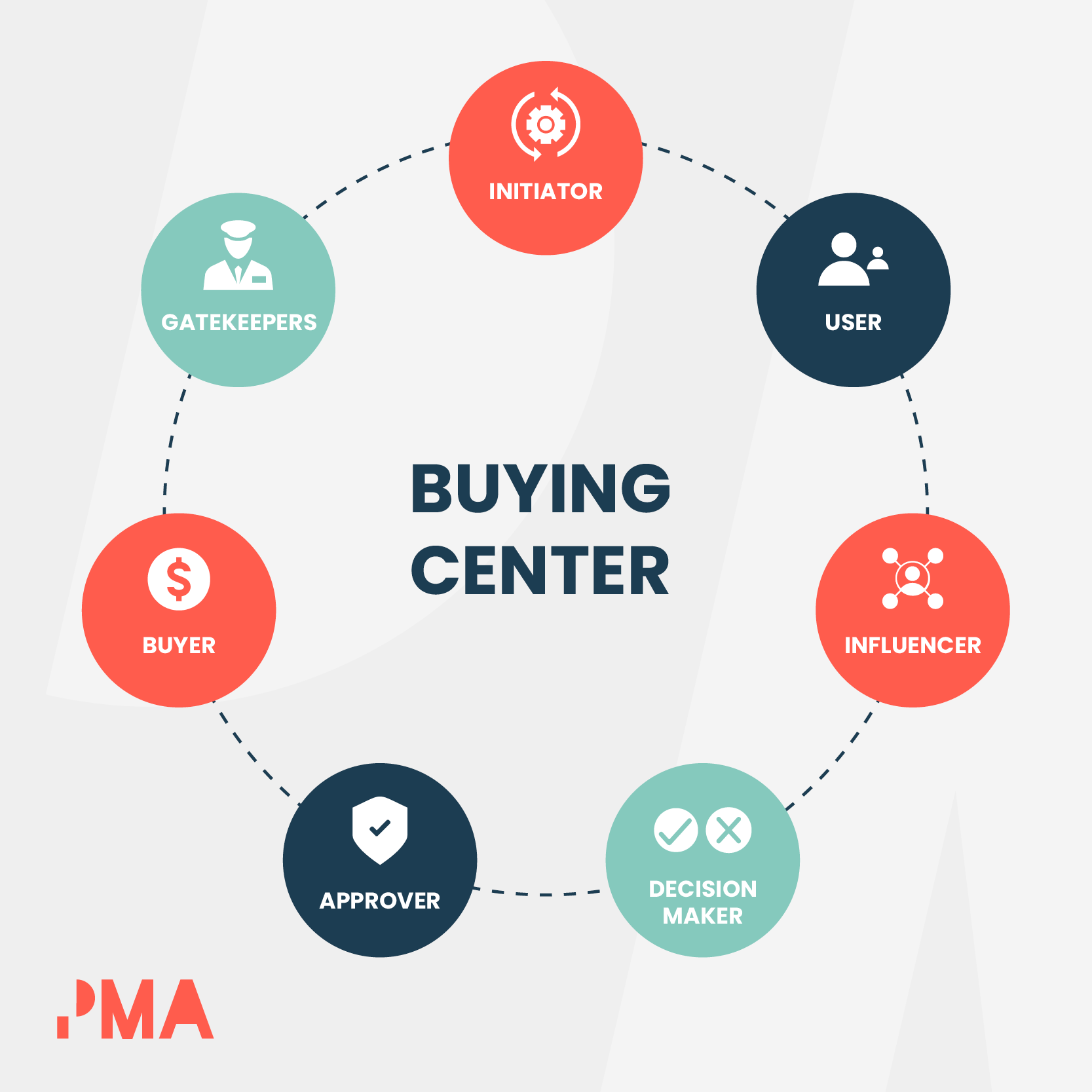
Once you’ve identified their job titles, you’ll need a deeper understanding of their roles, their objectives, and most importantly their pain points. Arming yourself with this information allows you to create a GTM strategy that offers solutions and addresses each of their requirements.
You’ll also be using this research to create effective messaging, utilizing buyer personas, which brings us to our next step...

Once your buyer personas are completed, you’ll need to take your accrued information and turn it into market messaging.
Like the example below.
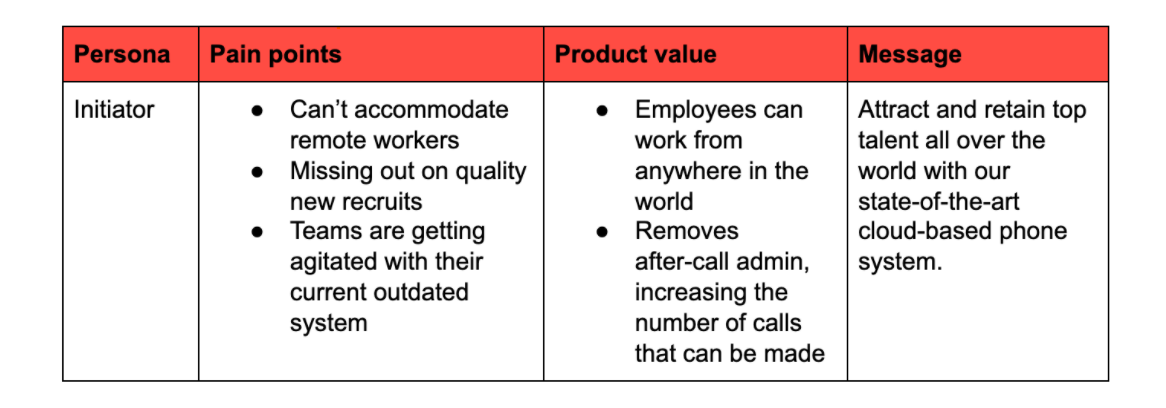
This process needs to be repeated for each of the titles we listed above (gatekeeper, influencer, decision-maker, etc.).
If you want to learn more about messaging, check out this article we prepared earlier.

There’s also a guide to messaging tools available below, perfect for helping you develop a distinguishable brand voice.

Message testing
Once your messaging has been finalized, take it for a test run. Think long and hard about where your audience is, are they more likely to visit LinkedIn? Is Instagram more their speed?
Look at where your conversions are low and take your money elsewhere. Try something new on Twitter, and test out Facebook ads, and if you’re not gaining traction, move on and try something new.
Understand your journey
With your personas and messaging set, you’ll need to look closer at your customer’s journey, from both perspectives - the buyer’s and your company’s in order to tailor your marketing efforts.
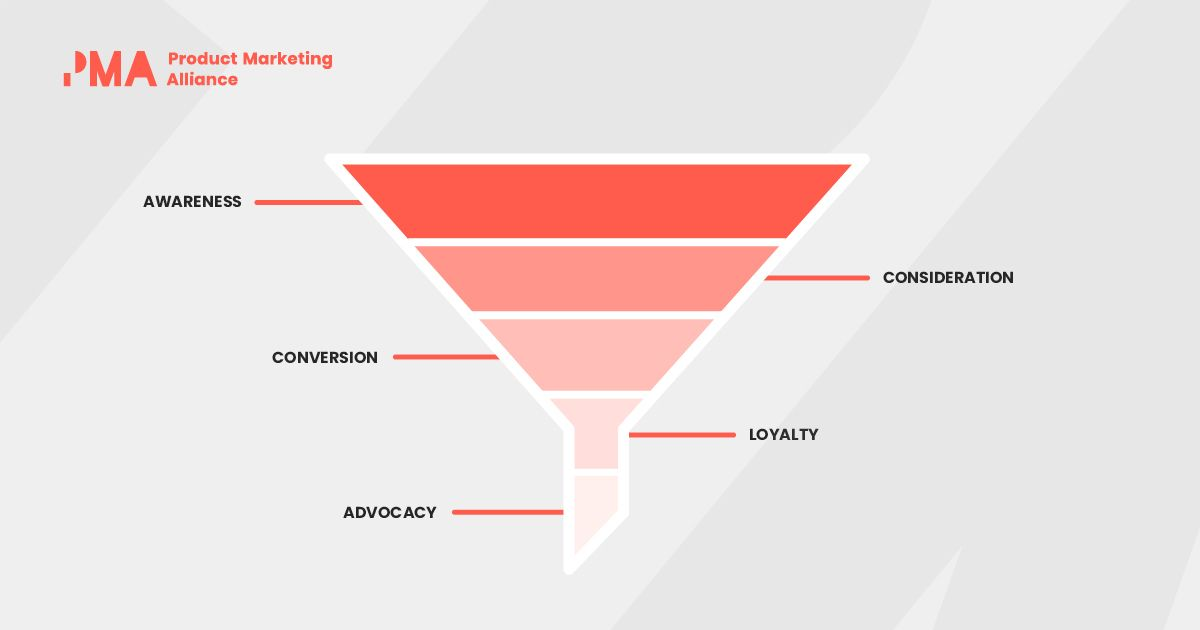
The top of the funnel is the awareness stage - they know a little about your product but are nowhere near ready to make a commitment. The content you create at this stage needs to grab and hold their attention from the get-go. It could be a clever blog post, video, or whitepaper.
The middle of the funnel is the consideration stage. This prospect may have downloaded an eBook you offered for free through your website, they have a problem your product can solve and they’re considering it.
The bottom of the funnel is the decision stage. The prospect is so close to a decision it’s palpable, they may just need a gentle nudge over the finish line in the form of a free trial.
Every company divides the buyer’s journey differently, with marketing usually taking ownership of the top of the funnel, however, once a lead reaches the decision stage, it’s the sales team’s time to shine.

We have all of the pieces needed, it’s time to put them together and create our very own GTM masterpiece.
During this stage, there’ll be certain things dictating your strategy including:
- Market size,
- How your sales cycle works.
Count your pennies and see how much money you have to play with, revisit the points made so far, have your product positioning as a reference point, and answer the following key questions:
- Which channel was most effective during testing?
- Were some messages more impactful than others?
- Which channels didn’t work?
- Did certain target audiences get more traction than others?
- When in the cycle does a prospect qualify as a lead?
- How do prospects prefer to be communicated to?
- How can we help the sales team get more conversions?
- What can we do to remove the ‘gatekeepers’ uncertainty?
- What assets do we need to produce to target certain stages of the funnel?
Providing you do everything right (and answer honestly!) this'll give you a clear-cut indication of:
- Ideal channels to use for your marketing
- Messaging you’ll use across each channel,
- Which people you should be targeting,
- Whether they prefer to be spoken to in person, over the phone, via email, etc.,
- The resources and contingencies you need to put in place for your sales team, and
- The content you need to generate.
There’s nothing worse than having different people pull in different directions. So, create a timeline to keep a reign on things and prevent anything from slipping under the net.
Write your content
Irrespective of whether it’s going to be sitting within the product marketing department itself, or marketing, you need to create a bank of content to help you deliver your GTM master plan.

Always measure success
So, there you have it! You have your GTM strategy in place.
But before you go flying out of the traps like a bull in a china shop, you need to indicate what success will look like . After all, what’s the point in putting in all this hard work and having no idea if it’s been worthwhile?
Have a set of high, yet attainable goals in place to ensure you can track your performance consistently. If things aren’t working, don’t be afraid to go back to the drawing board and reevaluate.
Look after the numbers, the numbers will look after you.
Ignore them, and they’ll turn your dream product into a nightmare scenario.
Metrics play a fundamental role in improving your go-to-market strategy and refining your sales process; implementing a suitable system will improve your sales team’s performance.
Key performance indicators (KPIs) like conversation rate, sales volume, and time can help you establish whether you're hitting your goals, and assess where your sales team needs to improve.
Moreover, metrics will also enable you to analyze ways to lower your customer acquisition cost to optimize your profit earned per customer and reduce your sales cycle.
The shorter the sales cycle, the quicker you can nurture buyers through the sales funnel, keeping existing buyers happy, and attracting new customers to supplement your inbound figures. This approach has all the makings of an effective business model, as customer retention is maintained, whilst churn is kept under control.
Also, seek input from your buyers when improving your GTM strategy. For example, case studies are often used to provide insights into your unique value proposition from a buyer’s perspective.
This not only serves as a powerful tool for your salespeople, but you can also distribute words of endorsement across your marketing channels, improving your SEO and visibility in search engines in the process.
How to optimize a go-to-market strategy for a scale-up business
A scale-up business is just one step up from a start-up. So, you’re still very much in the beginning stages of your organization.
One of the most important things you must do when you’re in this position is to just continue working on and refining your product marketing strategies depending on the data and feedback you receive from your previous launches.
One of the biggest goals you must always be aiming towards is to enhance the customer experience (CX) with your product. Some factors affecting CX that you may look to refine and improve are:
- Product design/quality,
- Accessibility,
- Reducing cognitive load ,
- Pricing (discounts, freebies, etc.),
- Convenience, and
- Availability.
In order to do this, ensure that you’re carrying out accurate and appropriate testing. One of the simpler tests you can carry out is A/B testing , which many PMMs argue is one of the most important tests to implement, especially when just starting out.
Siddhartha Kathpalia, Associate Director (Marketing, Americas + Product) at VWO said:
“A/B testing is a great methodology for making incremental changes and being sure of impact but it isn't great when a strategy needs to be deployed. It’s great when there is sizable data available, but not when there isn't enough traffic. A/B testing is great to ensure metrics maintain at the same level or grow, but not to disrupt the market.
“Everything can be A/B tested, but not everything should be. I've been able to demonstrate two changes that led to 150% growth for two organizations that have helped me grow too.”

How to optimize a go-to-market strategy for an enterprise business
Perhaps one of the most common misconceptions for enterprise businesses- and a big pain point for PMMs- is that they believe because their organization is so well established, they no longer need to make the effort to continue improving and refining their product marketing strategies. But, this couldn’t be further from the truth.
If anything, in an enterprise organization, you should be continuing to fight for the lead you have, with the help of your larger team size, budget, and resources, and putting them to good use by consistently researching and implementing new and improved strategies. The goal should always be to try and improve the customer experience, reduce churn, and always win the market.
Because you’re an enterprise business and likely have done multiple product launches, you can use these to your advantage. Carrying out research like win/loss analysis and Customer Advisory Boards (CABs) is a great way to see how you can further improve and refine your products. And, as always, ensure the focus for this is always on your customers, as their opinion is the most important when it comes to your product.
One of the biggest challenges that enterprise businesses face, and that start-ups probably don't, is that of busier processes. If your company is large and you're marketing multiple products, you might be given a bigger project with unrealistic timelines, for example.
When we asked Jeremy Castile, Senior Director of Product and Alliance Marketing at Docker the advice he’d give to those struggling with this challenge, he said:
“Try and work as early as you can with the product and engineering team.
“But beyond that, let's say you have 30 days to go launch a major project or product that you just got told about. The number one thing is to stay focused, don't panic, but see if you can create an MVP, a minimum viable product, if you will, for this launch.
“Ask yourself: What are the must-haves? What are the things that you can trim to do post-launch? Because if you look at a launch list of all the things that you need to do for a launch, some things can be pushed, and other things are absolute must-haves for a go-to-market launch.
“So I would say that's one of the ways that I've been able to overcome the challenge of not having enough time. I’ve told myself: "Okay, we have this long list of things that we need to do. Let's organize this by what's must-have, what's nice to have, and what can be pushed to post-launch".
“All of a sudden, you start finding all these things that you could go "Okay, we don't have to have that in 30 days", or whatever the short timeline is. So that's been super helpful.”
Go-to-market strategy challenges and resolutions
Jeremy Castile, Senior Director of Product and Alliance Marketing at Docker , is a GTM expert, and shared advice for overcoming common challenges and mistakes.
Here's what he had to say:
Q: What challenges have you previously faced when putting together a go-to-market strategy or working on a product launch? And more importantly, how did you overcome these obstacles to eventually achieve your desired goal?
A: “Working as a product marketing person, I think you're always in a little bit of a state of chaos. There are always new products, always new features, always new campaigns, new content, and things that need to be cooked. But one of the challenges I think, that I've run into a lot, I'm sure other PMMs have, is just not having enough time.
“In the tech space, the pace of innovation is so fast, and we're constantly trying to come out with new features and new capabilities to meet users’ demands.
“There is another set of challenges that I could go into but with regards to not having enough time, because this one is so common, I think, for folks that run into this often, again, getting back to my earlier point, try and work as early as you can with the product and engineering team.
Q: Everyone needs to make mistakes to learn and develop. What are some of the common mistakes that you've seen product marketers make when putting together a strategy? And what advice would you give product marketers to help them avoid the same pitfalls?”
A: “I think one of the easiest traps to fall into as a product marketer, and I've fallen into this trap myself, is where your product, feature, brand, or company becomes the hero of your product launch’s narrative instead of the user or the customer.
“It’s a common pitfall where you see PMMs launching new products or features, and starting the story with, "here's a new feature, and here are all the capabilities" or "here's what makes this feature cool". would say instead flip that.
“Instead of placing an emphasis on the product or company, go user in, and answer questions such as: what are the challenges that your user faces? What are their aspirations? What are their goals? Make the customer the hero of the story. Who is that person? What are their goals? What do they want to achieve? How are they growing their business?
“This makes your narrative much stronger and more compelling. That's just one of the common pitfalls I've seen with PMMs, and it's easy to fall into because as a PMM, we are product marketing people. We're focused on the product, we buy into the story of the product, and we know everything about the product.
“We sometimes assume that our users already know all the background of this product and the story and the features behind it. But I think there's some education you have to do there in pulling your user back to the middle of the story, I think it's super important.”
Go-to-market strategy examples
Fitbit smart coach.
You know FitBit, the manufacturer of those activity trackers that look like smartwatches, well a few years ago the company launched Smart Coach, a premium service and personal training app, that integrates with the user’s FitBit.
Their GTM strategy started with simple, attainable objectives, including:
- Building brand awareness
- Increasing subscription revenue
- Improving the subscription attach rate
Launching the “Get More With FitBit” campaign which involved using both paid and owned channels to reach the target audience (FitBit’s users).
Paid channels included retargeting display ads that directed potential customers to a landing page.
They also used push notifications, social media accounts, and newsletters to reach their target customers.
The result: The company earned $192 million in revenue.
Upscope is an interactive screen-sharing service.
They could have easily been just another standard screen-sharing program, targeting the usual suspects. But with a solid GTM strategy, they leveraged the live chat wave, targeting those who would need it the most - customer service advisors, technical support, and onboarding specialists. They focused on one universal pain point - the annoyance of setting up screen sharing.

Learn more in our complete GTM guide
Whether you're bringing a product to market this quarter or next year, learn from the best for when the time does come with this selection of presentations, templates, and guides to help you through your next GTM project.
Part 1: presentations
Part 2: templates, part 3: go-to-market guides.
There's plenty more where this came from. 👆
Unlock it all in here. 👇
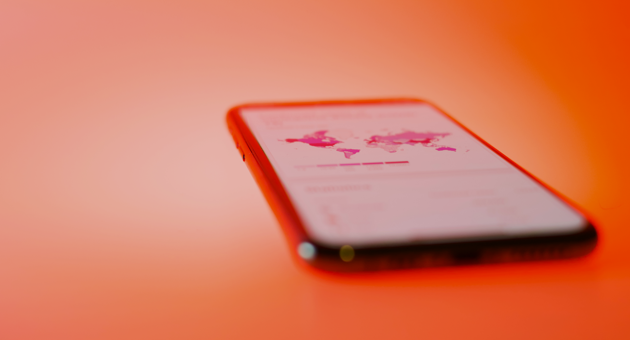
Learn more about GTM Strategies and access a range of resources, templates, and frameworks, like the one below in our member’s area . Already a member?! Awesome! Everything you’ll need is all in one place, at your fingertips.

Access this complete toolkit - and more - right here. 👇

Learn the fundamentals of go-to-market strategy
Go-to-Market Certified: Masters features everything you need to consolidate your knowledge of key GTM principles and understand how this bread-and-butter deliverable works.
Completing this course will help you:
🚀 Execute successful product/feature/market launches
🏢 Own GTM strategies at companies large and small
🎯 Understand GTM tactics during pre-launch, hard-launch, and post-launch phases
🤝 Keep products on the market by effectively owning the full customer cycle
📝 Confidently and effectively project manage the whole GTM cycle cross-functionally
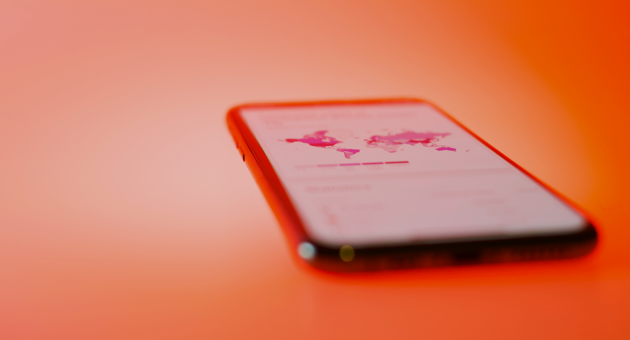
- Media Guide
- Ambassadors
- Privacy Policy
- Terms of Service
- Help Centre
- PMM Certification
Send us an email
Influencer Marketing
What is influencer marketing: An influencer strategy guide for 2024
Learn about the evolving world of influencer marketing in this guide from understanding the types of influencers to crafting effective strategies.
Reading time 13 minutes
Published on June 6, 2024
Table of Contents
- Influencer marketing has evolved significantly over the past decade. It has expanded beyond celebrities to include social media influencers who foster authentic connections and influence purchase decisions and brand reputation.
- Understanding the types of influencers, from mega to nano, is crucial for brands to choose the right partners. The types of influencers you choose to partner with will determine the reach, engagement and ROI you get.
- Common influencer marketing mistakes to avoid include failing to define clear goals and expectations, prioritizing follower-count over engagement, neglecting influencer research and sharing unclear briefs.
Influencers are here to stay. According to a Q3 2023 Sprout Pulse Survey, more than 80% of marketers agree that influencers are essential to their overall social media strategy.
But the world of influencer marketing is constantly evolving.
A decade ago, the influencer marketing arena was limited only to celebrities and a few dedicated bloggers, whereas now, social media influencers are abound across all social networks. Their followings may vary in size, but these influencers pack a punch. Their tight-knit communities foster authentic connections and influence purchase behaviors, leading to higher brand engagement and ultimately, sales.
However, working with digital creators and influencers needs a well-planned and strategic approach. And this guide aims to help you navigate it. Read on for tips on how to build an effective influencer marketing strategy, what mistakes to avoid and how to find the right influencers for your brand.
Download the 2024 Influencer Marketing Benchmarks Report
What is influencer marketing?
Influencer marketing is a social media marketing approach that uses endorsements and product mentions from influencers. These individuals have a dedicated social following and are viewed as experts within their niche.
Influencer marketing works because of the high trust social influencers have built with their following over time. Recommendations from these influencers serve as a form of social proof to your brand’s potential customers.
Types of influencers: By size and reach
Partnering with an influencer with millions of followers might sound like a dream come true but they may not be the best fit for your brand.
Some social media influencers have large, broad audiences spanning across several demographics. Others boast smaller but more targeted and engaged communities.
Knowing what each type of influencer can offer you in terms of reach, range, cost and engagement is key to choosing the right ones for your brand.
Let’s take a deeper look at the various types of influencers out there:

Mega or celebrity influencers
These influencers have a massive following of over 1 million and often include famous actors, musicians, athletes and other public figures. Their celebrity status allows them to captivate a diverse audience, making them ideal for large-scale brand awareness campaigns. Think: Cristiano Ronaldo .
Mega influencers can give your brand unparalleled exposure, but partnering with them can be incredibly expensive. Plus, since their audience is often broad, their engagement rates may not be as high as influencers with smaller, more niche followings.
Here are some businesses that might benefit from working with mega influencers:
- Large enterprise corporations that have the budget and resources
- Brands targeting a broad audience with varying characteristics
- Luxury or high-end brands that want to create a sense of exclusivity
Macro-influencers
With a following that typically ranges from 100,000 to 1 million, macro-influencers are established personalities within their respective niches.
These influencers have earned their reputation through consistent content creation and engagement over time, and are now thought leaders in their niche .
Macro-influencers offer a more targeted approach compared to celebrities, as their followers usually share common interests. Collaborating with macro-influencers can provide your brand with substantial reach, but it may still be relatively costly depending on your budget.
Here are some examples of brands that might work with macro-influencers:
- Startups seeking rapid exposure, growth and credibility (e.g., Canva )
- Nonprofit organizations looking to raise funds and awareness
- Hotels and airlines targeting a specific but large audience
Micro-influencers
With 10,000 to 100,000 highly engaged followers, micro-influencers are the rising stars of influencer marketing. These influencers typically have a strong presence on specific platforms, like Instagram, YouTube and TikTok.
Marketers love working with micro-influencers as they captivate a niche, passionate audience with their creative content, relatable recommendations and genuine interactions. They’re also more affordable than larger influencers.
Nano-influencers
Nano-influencers have between 1,000 to 10,000 followers. These influencers often have a strong connection with their audience, thanks to the close-knit community they’ve built and their personable content.
While they offer a smaller reach, nano-influencers can be excellent partners for businesses who want to target specific communities and demographics without breaking the bank. In fact, per the latest Influencer Marketing Hub data, 44% of brands prefer to partner with nano influencers in 2024, compared to 39% in 2023.

There are many reasons for this, namely, since nano-influencers work on a small scale, they dedicate more time and effort to individual partnerships. This means more tailored content for your brand and personal relationships within niche communities. They are perfect for businesses such as:
- Local businesses targeting specific communities, cities or regions
- Small businesses with limited budgets that want to run cost-effective campaigns
- Artisan, home-based or speciality food businesses reaching a niche audience interested in their one-of-a-kind products
Why use influencer marketing?
Influencer marketing can be an incredibly powerful marketing tool for you, and brands are already using it to their advantage, as these influencer marketing examples show.
According to The 2024 Influencer Marketing Report , almost half of all consumers (49%) make purchases at least once a month because of influencer posts; and almost all consumers (86%) make a purchase inspired by an influencer at least once a year. Not surprisingly, the influencer marketing industry is expected to grow to $24 billion in 2024 as indicated by the Influencer Marketing Hub's latest research.
Here are more reasons why you should add influencers to your marketing mix.
Increased brand awareness
Collaborating with an influencer draws a wider audience to your brand. By featuring your brand in their content, influencers introduce it to new audiences who may not have been familiar with it. Also, the trust influencers hold with their followers enhances your brand's reputation and credibility and boosts market awareness.
Precise audience targeting
Influencer marketing helps brands with precise audience targeting by connecting brands to influencers whose followers align with the brand's target demographic. This ensures their message reaches the right audience and is delivered from a perspective that resonates with the audience, making the campaign more effective.
Higher conversions
Social proof is a powerful factor in the likelihood of making a purchase after seeing an influencer campaign, because it helps sway undecided consumers in your favor. Similarly, influencers often share interactive content such as giveaways, challenges and live sessions that drive engagement and prompt actions like making purchases or signing up for deals. They also share exclusive discount codes or special offers making it easy to track conversions directly linked to their promotion.
Building trust and authenticity with your audience
Influencers build trust with their followers by sharing personal experiences and opinions that resonate with their audience, making them more relatable. They further increase their credibility by being open about brand partnerships and only promoting products they genuinely support.
Plus, their seemingly unscripted content contrasts with traditional advertisements, making it sound authentic and spontaneous, which fosters personal connection with followers. This trust is further reinforced by how they respond to comments, making their audiences feel valued and heard, thus strengthening the bond. All this combined, helps influencers drive higher conversion rates for brands.
How to create an influencer marketing strategy in 5 steps
While Instagram influencer marketing is a well-known strategy, other platforms like TikTok , YouTube and Snapchat resonate increasingly well with different demographics.
Like any marketing tactic, an influencer program takes thoughtful planning. Here are key factors to consider while developing your influencer marketing strategy.
1. Find influencers and understand their payment structure
Finding the right influencer for your brand is the first step to building a successful influencer marketing strategy. You must invest time in market research to understand your audience’s preferences and choose the right platform to engage them with an influencer collaboration.
This is especially important because each network caters to a specific audience. For example, beauty and fashion brands shine on Instagram and YouTube, while the video game industry dominates Twitch.
Here are some factors to consider when searching for influencers:
- Does the influencer already post about similar topics related to your service?
- Are they legit? Scroll through their feed and click through on posts. A poor engagement ratio to follower count and spam-like comments are signs of a fake account or fake followers.
- Have they worked with similar brands before? Depending on what type of influencer you’re looking for, a seasoned one will be able to show you a press kit that contains a portfolio of their work.
Social listening can assist you in identifying where people are discussing your industry and brand, and to find influential voices within your industry on each platform.
40 Unique Ways To Use Social Listening To Make An Impact On Your Business
Similarly, focus on the type of influencers you want, and plan for their pricing . Whether it’s celebrities with massive followings or micro-influencer s with less than 2,000 followers, do your due diligence because that will determine your budget.
Compensation varies based on platform, influencer types and types of influencer collaborations, so think about the expected ROI of your social influencer marketing campaign. How will you measure the impact of influencer posts on your overall marketing goals? For instance, compare how you would budget for a video production firm creating an ad versus an influencer creating a video. Resources like this Instagram influencer rate map can help you estimate influencer costs based on audience size and industry.
2. Set a budget and management strategy
The next step is to create an influencer marketing budget.
Use an influencer marketing budgeting template to manage your expenses and strategically allocate resources to high-value partnerships. Be sure to account for the time needed to plan, execute and review your influencer program because, unlike automated ad strategies, influencers often juggle multiple partnerships, requiring a more hands-on approach from you.
If your budget allows, consider establishing an ambassador program to diversify and enrich your content. Similar to Fujifilm , which uses ambassadors for new product launches and to highlight new product features.
Whether you engage an influencer marketing agency or not, investing in an all-in-one influencer marketing software is a good idea, helping you sift through suitable influencers, manage pricing negotiations and review and approve content.
3. Decide on campaign goals and messaging
To ensure your influencer strategy succeeds, focus on your campaign's goals and needs. Determine whether you want to reach a new demographic, introduce a new product or highlight your brand values through influencers. Also, explore influencer trends to see what’s resonating in your industry.
Your message is as crucial as your goal. And since influencers target specific audiences, refining your campaign messaging is important for effective content.
Influencer content is typically more conversational and personal, which helps differentiate it from brand-driven or sales-oriented posts. But while it’s important to preserve an influencer’s creativity and uniqueness, ensure their content aligns with your brand values.
4. Establish influencer outreach: How to contact influencers
Your outreach will depend on the type of influencer you’ve chosen. For example, celebrities and macro influencers often work through agencies, so you might have to connect with an agency to reach them. Some may also list their contact information for business inquiries in their bio and have a website that denotes brand partnerships.

For example, Summer Rayne Oakes has a multi-channel presence, which is a perk for her brand partners.
For micro-influencers, you could reach out directly in a private message via their social platform.
5. Review and refine your strategy
It’s important to refine and review your strategy so you’ll be more successful with each campaign going forward. Having predetermined milestones where you’ll measure progress can prove very helpful in this.
While these tips serve as a guide to help you craft a well-planned strategy, it's crucial to be aware of common mistakes to avoid in influencer marketing. We’ll dive into those, next.
Influencer marketing mistakes to avoid
Influencer marketing can be highly rewarding — if done right. Sidestep these potential pitfalls to ensure smooth influencer collaborations and successful campaign outcomes.
Failing to define clear goals and KPIs
First things first, know why you’re doing this in the first place. Partnering with an influencer is a big deal — you need to be clear about the purpose and goals of your campaign.
Here are a few ways setting goals in advance can help you:
- Choose the right influencers: Defining goals helps you identify the specific characteristics and qualities you need in an influencer to achieve those outcomes. For example, if your goal is to increase brand awareness, you can find influencers who have a strong presence and reach within your niche.
- Define and measure success: What does success mean to you? Is it the number of impressions, post engagement or the amount of traffic coming to your website? Define which KPIs and metrics to track both during and after the campaign to assess how well your influencer campaign is performing.
- Keep everyone on track: Setting clear goals ensures that both the brand and the influencer are working towards a common purpose. This facilitates effective communication and constructive feedback, saving everyone’s valuable time.
- Hold influencers accountable: Establishing clear expectations and performance benchmarks makes influencers feel responsible. They know the results they need to provide and will focus on creating content that aligns with those goals.
Prioritizing follower count over engagement
A large following doesn't always mean high engagement. It’s entirely possible an influencer has millions of passive followers but very low engagement.
Instead, partner with influencers with an engaged and loyal audience. A handful of people who trust the influencer are more valuable to your brand than thousands of indifferent followers unlikely to convert.
Look at the influencer’s engagement metrics, comments and interactions, as well as past results for other brands to gauge their level of influence and likeability.
Neglecting to research the influencer
Choosing the wrong influencers, including fake influencers , can cost your business valuable time and money. But this hasn’t deterred marketers, with 60% of marketers intending to increase their influencer marketing budget over 2024, the Influencer Marketing Hub states.
An easy fix is to properly research the influencer of your choice, before signing a partnership. Vet influencers and evaluate their influencer media kit to ensure they share your vision and complement your brand’s personality.
Here are some key areas to look into when researching influencers for your brand:
- Audience demographics: Study the influencer's followers to ensure your campaign reaches the right audience. Analyze factors like age, gender, location and interests (e.g., Millennials who identify as women) to determine if they are likely to become your customers.
- Interactions, voice and content: Look at the influencer’s engagement rate, the tone of voice they use and the type of content they create. For example, if your brand has a playful, casual image, partnering with an influencer known for their formal, business-oriented content might not be the best fit.
- Authenticity and influence: Forced partnerships can appear insincere and hurt both your campaign and brand image. Collaborate with influencers who genuinely love your brand and products. Their followers trust them for a reason and you don't want your brand to get in the way of their (and your) credibility.
- Experience with branded content: Has the influencer worked with other brands in the past? Have they ever worked with your competitors? Carefully scrutinize their content to spot any red flags and gauge the value they can provide.
Writing poorly constructed briefs
Crafting well-structured briefs is key to maximizing your influencer marketing campaigns. A good social media campaign brief equips influencers with the details and resources they need to represent your brand effectively, without being overly restrictive.
Here’s a quick rundown on what to include in your brief:
- What is the main goal of your campaign? What are you hoping to achieve?
- What is your company’s background? What is your brand and what product/s are you selling?
- What are your product’s key benefits, features and differentiators?
- Who is your target audience? Include an audience persona if you have one.
- What does your budget look like for this campaign?
- Do you have a timeline in mind?
- Do you want the influencer to use your brand assets? Provide them with your logo, colors and fonts if necessary.
Don’t forget to inform influencers of any words or ideas to avoid in their content. For example, if you’re an eco-friendly brand, let the influencer know that sustainability is a core value and they should avoid using plastic and other such products in their content.
Restricting the influencer's creative freedom
While comprehensive briefs are important, there’s such a thing as too much information.
Avoid going overboard with your guidelines. You don’t need to dictate the influencer’s exact words or actions. Doing so can stifle the influencer's creative freedom, resulting in content that looks scripted and inauthentic.
Some brands also make the mistake of micro-managing every aspect of the content creation process. For example, you don’t need to vet multiple drafts just before they go live.
Remember, influencers are the experts in creating content their audience loves and trusts. Your brand just needs to support them with resources they need to create great content for effective influencer marketing.
Not setting expectations upfront
Establishing clear expectations beforehand enables a smooth, productive collaboration. The result? A successful campaign aligned with your goals.
Make sure you agree on the following items in advance:
- Timeline and deliverables: Clearly outline the campaign timeline, including start and end dates, as well as any deadlines for content submission and publication. Also, specify the required deliverables, such as the number of posts, stories or videos the influencer needs to create.
- Payment and terms: Agree on the payment structure, whether it's a one-time fee, ongoing retainer or performance-based compensation. Discuss the payment schedule and any additional terms, such as bonuses for exceptional performance or penalties for missed deadlines.
Focusing on the wrong metrics
Influencer marketing can offer more benefits to your business than merely boosting sales. Fixating only on conversions and revenue data can mislead brands into thinking their campaigns are not working.
Here are some other metrics to consider when measuring the impact of your campaigns:
- Engagement metrics: Evaluate likes, comments, and shares to understand content resonance and audience interaction.
- Brand awareness metrics: Measure views, clicks and website traffic to gauge campaign reach and audience interest.
- Follower growth: Track new followers to determine influencer impact on brand visibility and audience expansion.
- Inbound leads: Track the number of inquiries and messages your brand gets to analyze the campaign’s impact on inbound lead generation.
How to track influencer marketing campaigns
There are a few ways of measuring the success of your campaign.
If you want to keep a pulse on the content your influencers are creating and interacting with, you can create a specific branded hashtag, like #SproutPartner. The Sprout Social Smart Inbox makes it easy to see what’s being talked about with specific hashtags, or to watch for mentions of specific keywords .
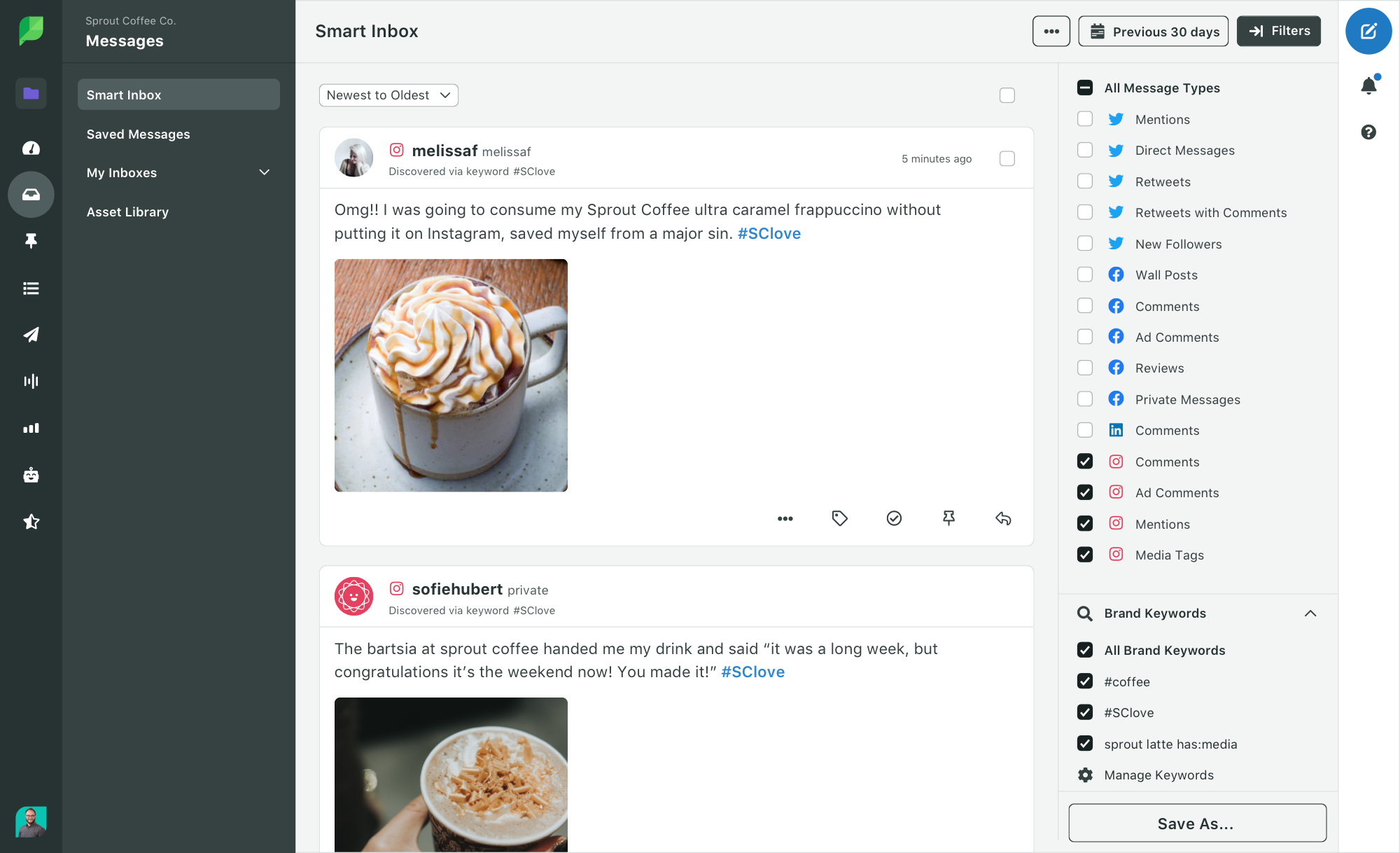
Use Sprout’s reporting feature to tag and track campaign-related posts. You can also compare how each post is performing and view metrics such as post engagements, clicks and impressions.

Similarly, if you’re aiming for more sales, giving out affiliate codes or tracking links will help you measure the revenue generated from influencers.
Create a successful influencer marketing strategy for your brand
It’s clear—influencers are the new wave in marketing. However, the influencer marketing world is constantly evolving, and in five years may be drastically different from today.
While working with influencers has unique considerations, setting up a campaign is the same as most marketing campaigns: research, set a budget, determine goals, find your influencers, and review and revise. Once you’ve got a hold of the rhythm, creating different influencer marketing campaigns to meet your brand’s various needs will become second nature.
If you need more resources for your team on running influencer campaigns, check out our ultimate guide for running successful social media campaigns .
Influencer Marketing FAQs
The three R’s in influencer marketing strategy are relevance, reach and resonance.
- Reach alludes to the number of followers the influencer has and the people they can potentially reach with their content.
- Relevance is how well the influencer’s content aligns with your brand voice, target audience and marketing goals.
- Resonance is the level of meaningful interactions and connections the influencer’s content creates with their followers, which translates to greater audience loyalty.
An influencer marketing strategy needs meticulous planning. Here are five things you need to keep in mind to ace it.
- Find influencers and understand their payment structure
- Set a budget and management strategy
- Decide on campaign goals and messaging
- Establish influencer outreach process
- Review and refine your strategy
Social media influencers collaborate with brands to promote products or services to their followers through sponsored posts, product reviews and endorsements. In doing so, they help shape consumer opinions and purchasing decisions.
Additional resources for Influencer Marketing
- Influencers
- Social Media Strategy
Influencer pricing: how much influencers really cost
- Social Media Content
UK Food influencers redefining taste for your brand
Influencer marketing trends across industries
Spotlight on UK beauty influencers for your brand
An Influencer Marketing Toolkit to Kickstart Your Strategy
Influencer relationships (with consumers & brands) are evolving—what does that mean for marketers?
11 best influencer marketing tools you need in 2024
UK fashion influencers redefining style
- Future of Marketing
The rise of virtual influencers: are they here to stay?
Elevate Your Next Campaign With This Influencer Marketing Brief Template
Powerful UK fitness influencers for your next campaign
Find UK TikTok Influencers for your brand
24 Top YouTube influencers to check out in 2024
- Social Media Analytics
8 top influencer analytics tools to boost your campaign ROI in 2024
The benefits of influencer marketing (+ what the C-Suite cares about)
Rethinking the influencer-brand relationship
10 metrics to track influencer marketing success in 2024
How to find influencers for your brand’s marketing campaign
How B2B influencer marketing will grow your brand
16 influencer marketing platforms to boost your campaigns in 2024
Mastering Instagram influencer marketing: strategies for success
The complete guide to TikTok influencer marketing
A 6-point framework for maximizing influencer marketing ROI
- Social Media Trends
22 influencer marketing statistics to guide your brand’s strategy in 2024
7 examples of influencer marketing campaigns
- Branding & Creative
The ultimate guide to evaluating influencer media kits
Micro-influencer marketing guide: Facts and uses
YouTube influencer marketing guide to boosting brand awareness
The rise of senior influencers: Age is just a number but follower count isn’t
Today’s top TikTok influencers: Inspiration for your brand’s evolving social strategy
Digital creators vs. influencers: What’s the difference?
Why LinkedIn influencer marketing matters for brands
- Social Media Engagement
What are fake influencers and how can you spot them?
- Community Management
- Consumer Goods
Nanoinfluencer marketing 101: How I got 1000 engaged followers in 30 days
Influencer marketing
10 Lessons From Instagram Influencers
Influencer Marketing Ain’t Easy: 5 Client Questions to Answer Before They Ask
Using Sprout Social for Influencer Marketing Campaigns
Build and grow stronger relationships on social
Sprout Social helps you understand and reach your audience, engage your community and measure performance with the only all-in-one social media management platform built for connection.
← Back to Articles
Apr 5, 2024
What Are the Best AI Marketing Tools?
- Digital Strategy
- Email Marketing
Written by Emma Prunty
Artificial intelligence (AI) helps marketers automate activities and campaigns at scale in a way we've never seen before.
According to our recent survey with DMI members, the primary benefits of integrating AI into marketing efforts are automation of routine tasks (68%), improved customer experience (46%), improved targeting and segmentation (45%), enhanced personalisation (44%) and predictive analysis (39%).
So there are many applications for AI in marketing, but there are also lots of AI tools and they're coming at us fast!
This can make it overwhelming for marketers to know where to start with AI and see that there are many tools out there (not just ChatGPT ) that can help gain customer insights, drive personalization, and boost efficiency.
To help you pick the right AI tool for your goal, we've compiled a list of the best ones available for a number of digital marketing activities:
- AI tools for audience research
- AI tools for customer journey mapping
- AI tools for Idea generation and content research
- AI tools for keyword research
- AI tools for trend analysis and forecasting
- AI tools for competitor monitoring
- AI tools for influencer research
- AI tools for sales automation
- AI tools for social media management and advertising
- AI tools for writing and content generation
But first, let’s look at what an AI tool is and how to use them for digital marketing.
A Guide to ChatGPT Prompting
What is an ai marketing tool.
An AI marketing tool is a platform or application that uses AI technology to enhance marketing activities and make data-driven decisions.
These tools leverage AI algorithms, natural language processing, machine learning, and data analytics to automate processes, analyze data, and provide insights to optimize marketing strategies and campaigns.
Examples of AI marketing tools include chatbots, predictive analytics platforms, recommendation engines, and content generation systems.
What are the Benefits of Using AI Marketing Tools?
The use of AI tools is becoming more widespread across industries. Grand View Research projects that AI will have an annual growth rate of 37% between 2023 and 2030 - no small feat in just seven years.
There’s a reason for this prediction - AI has huge benefits for marketers and marketing departments which are:
- Drives efficiency
- Boosts productivity
- Improves personalization
- Enhances customer care
- Reduces cost
- Enables scalability
- Enhances audience targeting
- Gives real-time insights
- Generates and optimizes content
Ultimately, AI tools empower businesses to make better decisions, work smarter and deliver more value to their business and stakeholders.
“There's still a huge need for human writers, for human creativity, for human thought and strategy and to come to these tools with our own objectives and our own ideas.” Kerry Harrison, AI Educator and copywriter
What is the Best AI Marketing Tool?
With so many AI tools out there, it’s no surprise that marketers are wondering which one is the best. While lots of AI tools are still in the early stages or evolving based on what they learn through interactions and prompts, there is one that stands out right now!
Just to make sure, we asked our LinkedIn community of marketers to tell us what they were using and found most effective. By an overwhelming majority of 86%, people responded that ChatGPT was the frontrunner.
While ChatGPT is on top for now, bear in mind that other AI tools will emerge and evolve. Plus it’s all about what you need to use the tool for. If it’s SEO or customer journey mapping, then look below to see what tools might suit better.
AI Tools for Digital Marketing
There are a number of great AI tools that can help enhance your digital marketing activities. The tool that’s ‘best’ for you depends on the company, industry, budget and goals.
Here are some great all-in-one AI tools for digital marketing which will be followed by ones for specific functions.
- Sprout Social can handle a range of marketing functions—from social media and customer care to digital marketing and competitive intelligence (including sentiment analysis.
- Zapier uses AI to enhance and streamline a range of functions such as sales and customer success operations, content and video and PR and social media.
- HubSpot uses AI to conduct company research, build websites, draft prospecting emails, enhance data analysis and generate social media copy.
AI Tools for Audience Research
As a marketer, it’s crucial to understand the interests, needs and pain points of your audience. Without that, you’ll create content that doesn’t talk to the people you want to attract and engage.
Here are some useful AI tools for audience research:
Answer Socrates provides insights into the types of questions that people are searching about.
SparkToro is a powerful audience research tool that gathers data about potential customers.
Google Trends helps you discover content that is currently resonating with audiences.
AI Tools for Customer Journey Mapping
Do you know what your customers are doing when they are on your website? Do you know where your prospects and customers come from?
If not, you need to understand the journey of your customer so you know the channel and campaign where they first encountered your brand to the touchpoint where they converted. Here are some AI tools to help you:
Kissmetrics analyzes customer data to gain insights on customer behavior and brand interactions.
Mixpanel enables you to better understand your customers by analyzing their behavior and interactions.
Amplitude analyzes the customer journey to unearth friction on the path to conversions and identify what works well in the campaign.
Semrush Persona enables you to build buyer personas using AI-powered persona templates.
AI Tools for Idea Generation & Content Research
One of the hardest things as a marketer is to come up with fresh and exciting content ideas.
Even when you know your buyer personas and have data to give you insight from previous campaigns, sometimes you just get stuck.
Here are some great AI tools for generating ideas and researching content.
- ChatGPT can help you do initial content research, based on highly detailed prompts.
- Reddit enables you to do content research via its subreddits, which can then be fed into AI tools.
- Consensus is an AI-powered search engine particularly suited for searching research papers.
- Gemini (previously Bard) is a powerful text-based AI tool backed by Google's search engine.
- Milled is an AI tool that helps you research content in email newsletters.
- Clearscope analyzes high-ranking pages to give you ideas on how to create optimized content based on your keyword research.
- MarketMuse can help with content planning, optimization, and performance monitoring, as well as competitor analysis.
- Perplexity AI is an AI-powered search engine particularly useful for generating ideas, based on cited sources.
AI Tools for Keyword Research
Keywords enable the perfect marriage between SEO and content. They help you tap into what people are searching for online and help search engines like Google rank your content.
Knowing and using the right keywords can give a company the edge. Here are some tools that can help:
- ChatGPT can help you identify keywords based on topic or audience research.
- UberSuggest is an AI-powered tool for keyword research and integration.
- Clearscope uses AI to suggest the best keywords to integrate into your content.
- KWFinder leverages AI algorithms to provide accurate keyword metrics, including search volume, keyword difficulty, and trend data along with localized keyword research.
- Keyword Tool generates long-tail keyword suggestions from Google's autocomplete feature and provides keyword metrics such as search volume, CPC and competition level.
- Keyword Keg creates keyword suggestions from search engines and databases such as Amazon, and YouTube along with advanced filtering and competitor analysis.
- SpyFu Keyword Research tool analyzes competitor keywords, identifies top-performing keywords, and uncovers insights for optimizing PPC and SEO.
AI Tools for Trend Analysis and Forecasting
Trend analysis and forecasting in marketing is the examination of data (past and present) and market conditions to identify patterns, trends, and potential outcomes.
The aim is to help marketers anticipate market trends, predict future outcomes, and make informed strategic decisions that drive business growth and help stay ahead of competitors.
Here are some AI tools to help you with trend analysis and forecasting:
- Talkwalker uses AI-powered tools to help alert you to upcoming trends.
- TrendKite is an AI tool for forecasting and analyzing likely trends.
- Zoho Social helps you visualize key data and develop insights to predict trends.
- Seismic uses AI algorithms to predict trends so you can then adjust your marketing strategies to optimize ROI..
- Bloomreach offers a suite of AI tools enable trend analysis and forecasting.
AI Tools for Competitor Monitoring
Competition can help drive innovation and spark creativity, but it can also be a challenge if you’re losing customers to another brand.
That’s why it’s important to do a competitive analysis so you know where you stand in comparison to other companies in the sector, but also understand your strengths and weaknesses.
Here are some AI tools that can help you monitor competitors:
- Rival IQ is an AI tool that helps brands conduct competitor monitoring.
- Brandwatch uses AI to monitor the online presence of competitor brands and offer real-time insights.
- Sprout Social is an AI tool that helps you understand how rival brands are performing on social media..
AI Tools for Influencer Research
Working with influencers can greatly increase the reach of your content. However, you need to ensure that the influencer aligns with your brand values and business goals.
Here are some AI tools you can use for influencer research:
- Upfluence uses AI algorithms to identify potential influencer partnerships based on social metrics and fit with brand identity.
- Influencity uses AI to develop an Audience Quality Score to help you identify the best-suits influencers for your campaign.
- AspireIQ uses AI algorithms to connect you with the most appropriate influencers, based on their previous campaign performance.
AI Tools for Sales Automation
Sales automation software is a convenient and cost-effective way for markers to generate highly personalized email campaigns that build loyalty and communications with ease (and at scale).
In addition to email campaigns, sales automation software is also effective for scheduling prospect appointments, prioritizing leads, and gathering valuable data.
Let’s take a look at some of the best tools for AI marketing sales right now.
- Outreach helps marketers transform sales data into actionable insights and automate workflows while testing engagement activities and key messaging across channels.
- Gong helps shorten sales cycles while boosting team communication and productivity. It can also guide sales reps through their day with automated activity recommendations and strategic suggestions.
- Drift helps marketers and sales reps work in harmony to reach out to customers with the right messaging at the times on the best channels.
AI Tools for Social Media & Advertising
Social media is one of the most popular channels that marketers use. But with so many networks available and so many content and ad formats to choose from, it can be tricky to deliver a good ROI - especially for organic content.
Luckily there are some AI tools at your disposal that can help make social media management and advertising less time consuming and more effective.
- Cortex is a social media management and advertising tool, that uses AI to see marketing data sourced from a variety of channels so you can learn what is driving engagement and sparking interest with your target audience
- Smartly.io helps businesses create, manage, and optimize social media ad campaigns at scale and provides features such as dynamic ad creative, automated bidding, audience segmentation, and performance insights.
- AdParlor specializes in managing and optimizing social media ad campaigns across Facebook, Instagram, X and Snapchat through advanced targeting, creative optimization tools, and real-time reporting.
For social listening and monitoring brand sentiment, consider using the following tools:
- Brandwatch uses AI to conduct social listening and analyze social media sentiment.
- MonkeyLearn can make predictions about customer emotions and sentiment.
- Sprout Social uses AI to help you unearth actionable customer insights and trends that can drive your social campaigns.
- Social Mention helps monitor your social performance and analyze how customers are reacting to it.
AI Tools for Writing & Content Generation
As you no doubt know, content is one of the most vital components of any successful digital marketing strategy . Without rock-solid content, you’ll never establish a strong brand voice or establish authority in your niche.
AI writing tools exist to help create valuable content with minimal human intervention. Let’s take a look at some of them by category.
Content generation
- Jasper AI is a smart writing assistant that produces content in a natural voice based on your brand’s tone. It also has a clever SEO optimization function and can create imagery to support or complement your copy.
- Copy.ai can generate compelling advertising and marketing copy, and adapt to different brand voices and messaging strategies.
- ChatGPT can help automate content creation across various platforms, including articles, blog posts, and social media. It is also invaluable for content ideation, research, and optimization.
- Articoolo is an AI content generator that creates articles and blog posts based on topics or keywords.
- Claude is a powerful AI tool adept at generating creative writing.
If you need help with structuring your content, you might consider using Yoast, TextOptimizer, or Frase.or email content, try out Automizy or Mailchimp.
Note : Always consider these AI tools as content assistants. You should carefully check any content generated by AI to ensure it aligns with your content objectives and brand tone.
Other content types
Of course, you're likely to generate more than just text content. Let's now consider some other content types that AI can help you to create.
For image content, you could consider the following:
- Stable Diffusion ’s text-to-image model can be used for content creation, advertising, and branding to better engage with people.
- Midjourney can generate high-quality images based on user inputs.
You can choose from a number of tools for video content:
- Synthesia creates AI-generated video content, including virtual presenters and text-to-video features
- Pika Labs is particularly useful for generating short video assets.
- Lumen5 can create videos based on a script or on text imported from a website article.
- TikTok Creative Assistant is an AI-powered tool to help you generate videos to upload to TikTok.
- Opus Clip can create Reels, TikToks, or Shorts clips from YouTube videos.
And what about audio content? Here are some useful AI-powered solutions:
- Otter.ai can automate the process of transcribing audio content, making it accessible and searchable.
- Descript enables you to edit audio or video as if it were a text document.
- Riverside includes AI-powered features to help you edit podcasts for social posts.
AI Tools for Image, Video & Audio Content
- Stable Diffusion’s text-to-image model can be used for content creation, advertising, and branding to better engage with people.
- Otter.ai can automate the process of transcribing audio content, making it accessible and searchable.
AI Tools for Content Optimization
Having created your content, you'll want to optimize it to maximize its impact. You can choose from several AI-driven tools to enhance your content for SEO and ensure it ranks highly on SERPs:
- SurferSEO can optimize web content for better search engine rankings, analyzing top-ranking pages and making suggestions.
- RankSense uses AI tools to examine historical data and current trends to see how SEO algorithms are most likely to evolve.
- CognitiveSEO uses its AI-powered ‘Content Optimization Tool’ to help optimize your content for greater organic reach.
- RankRanger generates optimized content that’s likely to rank highly in SERPs.
- GrowthBar helps identify search engine ranking patterns, perform competitive analysis, and suggest keyword optimization strategies.
Specifically for local SEO , you could use tools such as BrightLocal, Whitespark, or Advice Local.
You might also want to carry out A/B testing on your content:
- HubSpot offers AI-powered analytics to determine which email versions perform best in terms of different metrics.
- Google Optimize enables you to run effective A/B tests.
- Optimizely enables you to run A/B tests and dynamically adjust your campaigns as necessary, based on real-time performance.
- Crazy Egg can automate the testing process, gather real-time data, analyze the results, and optimize the campaigns in real time.
For email content, the following tools are available:
- NeverBounce helps keep your emails out of the spam folder and enables you to maintain a cleaner, more compliant email list.
- ZeroBounce helps reduce the chances of your email being relegated to the spam folder or bouncing back to you unread.
- Seventh Sense is an email delivery optimization system designed specifically for HubSpot and Marketo. It uses AI to optimize and personalize email delivery times for each individual to drive engagement.
For translation and localization of content, Google Translate uses AI to translate and localize marketing content. Be aware of the limitations of machine-only translation, however!
For ad optimization , ForePlay can use AI-powered insights to optimize your ad content and campaigns.
And finally, if you want to optimize your content based on search intent, BrightEdge helps you to figure out the intent behind search queries. You can then optimize your content in a targeted way.
AI Tools for Content scheduling
Now that you have honed your content, you'll want to ensure that you post it at the optimum time to maximize its impact. Both Hootsuite and Buffer use AI-driven tools to suggest the best times for you to post your content.
AI Tools for Content Performance
Of course, the hard work doesn't end when you post your content. You then need to monitor its performance. How can AI tools help you with this?
Google Analytics 4 provides real-time content analytics, enabling effective decision-making and informing strategy decisions.
ChatGPT can generate insights based on the data you feed it, and present insights in a clear, user-friendly format.
FanPage Karma helps you to analyze the performance of your social media content.
AI Tools for Budget Management
Managing your marketing budget is a key task for any digital marketer. Tracking your spend ensures that you know where funds are going and what budget you have left on a weekly or monthly basis.
Then you can optimize your marketing budget to get the most out of it. For ad bidding, you could consider the following tools:
- Google Ads Smart Bidding enables you to manage your budget allocation through smart bidding.
- AdRoll uses its AI-drive BidIQ to optimize your price-bidding strategy.
- WordStream’s Smart Ads analyzes your bidding strategy and adjusts it accordingly in real time.
When if comes to dynamic pricing, the following tools are available:
- Feedvisor enables you to manage your budget allocation through dynamic pricing.
- RepricerExpress uses AI to optimize your dynamic pricing strategies.
- Prisync enables you to monitor competitor pricing and adjust your pricing dynamically as needed.
And for PPC optimization, you could use these AI-powered tools:
- Google Ads uses sophisticated AI algorithms to maximize PPC ad performance through automated bidding, targeting, and ad placement decisions.
- Optmyzr uses AI-driven data analysis to help you to audit, optimize, and grow your PPC strategy.
- WordStream can analyze your campaign performance and use AI to suggest how it could be optimized.
AI Tools for Customer Engagement
Digital marketers can use AI tools to help them communicate with customers more efficiently. For example, you could use chatbots to streamline communications with customers. Here are some great examples:
- ManyChat is a popular AI-driven social media chatbot.
- Zendesk uses AI to help automate and streamline customer support.
- Drift is a social media chatbot that can engage with customers by analyzing trends in billions of conversations.
- Botsify enables brands to build their own customized chatbots.
You can also use AI tools to help retain customers:
- Retention Science uses AI algorithms to help build and improve customer retention.
- Braze uses AI algorithms to personalize the customer experience and increase retention.
- ChurnZero helps reduce customer churn by using AI to create engaging customer experiences.
AI Tools for Workflow Enhancement
AI tools can also help digital marketers to enhance their workflows, leading to greater efficiencies and reduced costs.
Among the tools available are the following:
- Pardot uses AI tools to improve workflow efficiencies in digital marketing campaigns.
- Marketo enables you to optimize your workflows using AI-driven insights.
- Sprinklr uses AI tools to optimize decision-making and improve productivity.
- Brevo uses AI to automate email workflows to maximize engagement and conversion rates.
- Drip helps you to improve workflow efficiency by using AI to automate repetitive tasks and streamline processes.
You may also want to use simulatio scenario planning to look at ways of improving your workflows. AI can help here too:
- Wolfram Alpha uses AI to enable scenario planning using simulations.
- Simul8 enables you to test various stimulations using AI-generated scenarios.
- AnyLogic uses AI to develop simulations so you can see how different scenarios are likely to play out.
How do you use AI digital marketing tools?
“The playing field is poised to become a lot more competitive, and businesses that don't deploy AI and data to help them innovate in everything they do will be at a disadvantage.” —Paul Daugherty, Accenture
There are many inspiring uses of AI in digital marketing . As autonomous technologies become increasingly accessible (and powerful), an increasing number of renowned brands are joining the party.
Big-hitting publications like Bloomberg, the Washington Post, and Forbes, for example, are currently using AI tools to create content—which you can find out all about by listening to our recent ‘Art of Copywriting’ podcast.
To help you get the most from your AI marketing efforts, here are a few quick dos and don’ts for your reading pleasure.
- Work with a small selection of AI marketing tools that align with your goals and business needs.
- Start small and scale gradually. It’s more important to understand how to use one or two AI tools well than to have a scant understanding of ten.
- Experiment and test AI tools by using different strategies, messaging variations, and targeting approaches.
- Train staff and team members on how to use AI-powered tools to enhance their work and creative efforts.
- Use your best judgment to automate tasks you feel need streamlining and cherry-pick the best elements of the tools.
- Monitor the performance of your AI tools. Are they making tasks easier? Do they enhance your marketing activities and if so, how?
- Keep the human touch by staying true to your brand’s voice and values. Embrace creativity and empathy alongside AI tools
Don’t
- Integrate a bunch of different tools and bounce between them. It will cause confusion and create chaos rather than achieve harmony and boost productivity.
- Forget to include your team in the decision process when it comes to choosing the right AI tools.
- Ignore your ethical obligations when using AI tools. Be transparent about using them if it seems necessary.
- Disregard any regulations or compliance issues. Ensure you are committed to data privacy and compliant with GDPR , CCPA and any other regulations.
- Rely solely on AI marketing tools to carry out your tasks and processes. These tools are most effective when combined with human leadership and nothing beats the human editorial eye!
Use AI to elevate your digital marketing activities
Artificial intelligence is a game changer for marketers as it helps personalize, optimize and automate many key marketing activities. Our new short interactive AI course (with practical walkthroughs) will help you understand the fundamentals of AI and use key AI tools for research, content development, data-driven decision-making, and creative design. Reserve your spot today!
- How AI is Changing Digital Marketing
- 8 Digital Skills You Need to Survive the Rise of AI
- Best Examples of AI in Marketing
Related Free Video Lessons
- Digital Channels Inbound and Outbound Marketing
- Strategy Formulation Plan Evaluating Tactics
- Social Customer Service Advantages of Social Customer Service
- Social Customer Service Crisis Management
Related Content
Ebooks: ebook: the key social media platforms - a complete marketing guide, webinars: webinar: how to maximize and promote webinars as part of your marketing plan, toolkits: digital marketing campaign brief template, articles: what are the most effective digital marketing strategies, articles: the marketing power of the fifa women’s world cup, articles: key digital marketing trends for 2024, emma prunty.
As the DMI's Content Editor Emma works to bring our members insightful and topical content every week. She has worked in digital everything for over 20 years, from New York to Oslo and Toronto to Dublin, and is always on the lookout for the latest currents of where things are going next. As producer of our popular podcast , winner of the 2023 Memcom Podcast Award, she's always happy to hear from anyone interested in coming on the show to share their expertise. She can be found on LinkedIn .
- Categories:
Recommended For You
Toolkits: market expansion tool, articles: tam, sam & som: what are these metrics and why are they important, articles: gdpr and marketing, articles: 5 benefits of having a digital marketing strategy for 2024, cpd points available.
This content is eligible for CPD points. Please sign in if you wish to track this in your account.
CPD Points Available
This content is eligible for CPD points. Please login if you wish to track this in your account.
- View Courses
- Change Password
Get the latest digital marketing data, insights and toolkits from DMI

IMAGES
VIDEO
COMMENTS
The customer journey map template can also help you discover areas of improvement in your product, marketing, and support processes. Download a free, editable customer journey map template. Types of Customer Journey Maps and Examples. There are 4 types of customer journey maps, each with unique benefits. Pick the one that makes the most sense ...
A customer journey map is a chart that displays the stages your customers experience when interfacing with your business. ... Customer Retention Strategies ... on your approach to marketing, sales ...
The customer journey is a series of steps — starting with brand awareness before a person is even a customer — that leads to a purchase and eventual customer loyalty. ... Sourcing new customers is often more expensive than retaining existing clients, so this strategy can help you cut down on marketing costs and increase profits.
In this piece, the author offers four strategies to ensure simplicity is baked into every aspect of the customer's journey: identify and communicate what simplicity means to your organization ...
Salesforce surveyed senior marketing industry leaders and discovered that 67% percent of marketing leaders say creating a connected customer journey across all touchpoints and channels is critical to the success of their overall marketing strategy. But only 23% of marketers are "extremely satisfied" with their ability to leverage customer ...
CX leaders have long understood the value of customer journey maps yet many still find it challenging to incorporate customer journey maps into their overall customer experience (CX) efforts. Use our 3-step action plan to: Establish foundational CX elements in place first. Create actionable, accurate customer journey maps.
Let's take a look at five steps your team can take to start journey mapping. 1. Find the sweet spot where your customers' goals and your own align. Before you start journey mapping, nail down your business goals. Any marketing and communication you deliver during the customer journey should be focused on helping your brand reach those goals.
This way, you double-check and confirm your findings for a more complete picture. A hands-on approach ensures your customer journey map reflects the real-world experience and equips you to take targeted actions to improve the overall customer journey. 7. Make changes and find solutions. So your map is complete.
1. Define your purpose. The first step to creating a successful customer journey map is to define your product's vision or purpose. Without a clear purpose, your actions will be misguided and you won't know what you want users to achieve during their journey on your website, product page, or web app.
Companies that understand this and are willing to learn from what doesn't work are going to be better at creating a customer journey that mitigates frustrations. Let's look at the six steps to implementing a customer journey strategy that works. 1. Understand what success looks like for your customer.
Customer journey marketing strategy is not just a modern-day marketing jargon, but a powerful tool that can make a significant difference in your business growth. By leveraging the insights gained from every interaction your customer has with your brand, you can create a seamless and personalized experience that will not only increase ...
A customer journey map can prove invaluable for optimizing across multiple departments—marketing, sales, product, and customer service—in many, many ways. Mapping your customer journey can help you: Promote a customer-centric culture internally and externally. Identify your ideal buyer and connect with customer needs.
2. Listen like you mean it. The key to building better customer journeys is listening to what customers are saying. Getting feedbac k from every stage of the journey allows you to build a strong, all-encompassing view of what's happening from those that are experiencing it.
10. Continuously Monitor and Adapt. What it Means: This strategy is about staying agile and responsive to changes in customer behavior, market trends, and your own business growth. It requires a commitment to ongoing evaluation and improvement of your customer journey marketing tactics.
Step 5: Define Touchpoints. Step 6: Walk in Your Customers' Shoes. Step 7: Capture Emotions and Pain Points. Step 8: Analyze and Iterate. Step 9: Implement Changes - Bringing It All Together. Elevating Customer Experience: The North Star of Your Strategy. The Power of Customer Journey Mapping. Conclusion.
Discovery: Learn new things about the customer based on data and customer research. Ideation: Identify customer pain points and generate solutions. Activation: Include stakeholders in the project prioritization and selection. "Making an impact will require more than just a map," says Nordlund. "It's going to require a plan and it's ...
A customer journey map is a visual that helps marketers outline the story of a customer's experience (from the first interaction with their business) to a long-term relationship, from the client's point of view. It can look something like this: There are three main advantages of creating customer journey maps: Get valuable insights ...
Seamlessly tailor your marketing strategies to your customer journey stages with WebFX. If you're ready to tailor your marketing strategies to your customers' journey with little work on your part, WebFX can help! When you partner with WebFX, you'll have access to an award-winning team of over 500 digital marketing experts. Our team can ...
A customer journey map is a visual representation of every interaction between you and your customers. Proper customer journey mapping can make a huge difference in conversions and help you create a more customer-centric marketing strategy. Customer journey mapping starts with identifying your user personas.
A marketing funnel is a series of stages to guide prospects through the customer journey. The funnel helps marketing teams plan and measure efforts to attract, engage, and convert prospects through content and other marketing materials, like landing pages and ads. Marketing funnels are commonly based on the 'AIDA' model:
The customer journey consists of actions your customers take before and after they make a purchase. It should be part of your overall marketing strategy to improve lead generation and enable more effective marketing. By understanding the different actions your customers take before and after a conversion, you can start brainstorming new marketing tactics to improve the customer experience and ...
A customer journey strategy is a plan of action focused in improving the experience that the customer has with your brand from start to finish. From the first encounter with your marketing strategy to the sale. The customer journey encompasses all interactions. As part of the customer experience, the journey should be an easy and pleasant ...
1. Define your brand value and offering. Your brand strategy is about defining the core values of your brand to make sure that they align with what your prospect and existing customer find important, that they align to your industry trends and competitive environment, and to what you actually offer ie your product.
Inbound marketing is a methodology to attract loyal customers to your business by aligning with your target audience's needs. Creating tailored marketing experiences through valuable content is the core of an inbound marketing strategy that helps you drive customer engagement and growth. Sign up for a free inbound marketing course.
You can also speed up the process by following the six steps in How To Write a 1-Page Content Marketing Strategy. Content strategy. On the other hand, content strategy delves deeper into (in Kristina Halvorson's words) the "creation, publication, and governance of useful, usable content.". Note that content strategy often goes beyond the ...
Define the omnichannel personalization strategy and learning agenda. It's crucial to develop a clear view on key moments of influence in the customer journey, and then identify what outcomes are desired at each step of that journey. Finally, an organization needs to prioritize use cases to test, looking at their ability to deliver business ...
A go-to-market strategy is a comprehensive plan that outlines how a product or service will be positioned, priced, promoted, and distributed to a target audience. It fuses together a range of business functions - including product, marketing, sales, and customer intel - to form a fully aligned value proposition and action plan for launching ...
The four Ps are a "marketing mix" comprised of four key elements—product, price, place, and promotion—used when marketing a product or service. Typically, successful marketers and businesses consider the four Ps when creating marketing plans and strategies to effectively market to their target audience. Although there are many other ...
June 6, 2024. Summary. Influencer marketing has evolved significantly over the past decade. It has expanded beyond celebrities to include social media influencers who foster authentic connections and influence purchase decisions and brand reputation. Understanding the types of influencers, from mega to nano, is crucial for brands to choose the ...
An AI marketing tool is a platform or application that uses AI technology to enhance marketing activities and make data-driven decisions. These tools leverage AI algorithms, natural language processing, machine learning, and data analytics to automate processes, analyze data, and provide insights to optimize marketing strategies and campaigns.